40+ First Week of School Activities
This blog post contains Amazon affiliate links. As an Amazon Associate, I earn a small commission from qualifying purchases.
Looking for ideas as you plan your first day of school math activities? I’ve got enough fun and interactive activities here to last you the entire first week of school and then some!
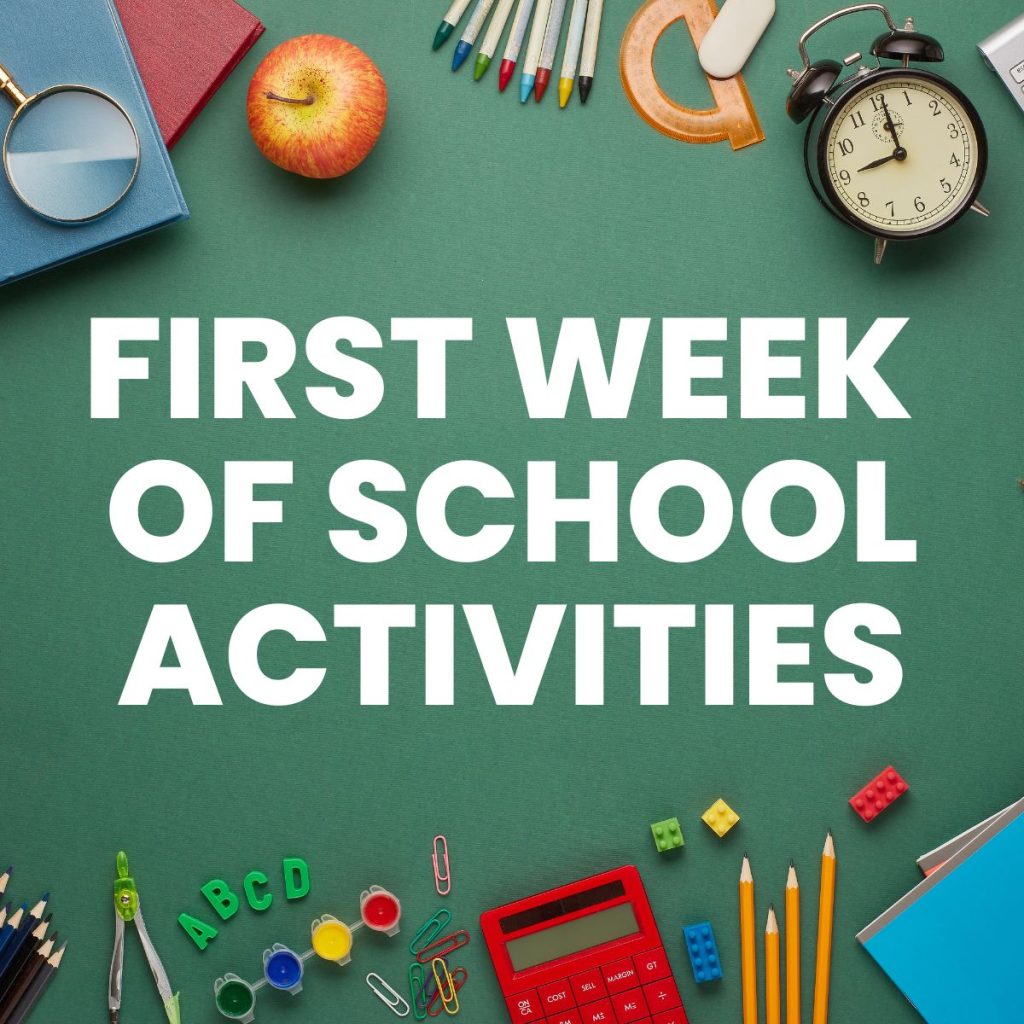
As summer is wrapping to a close, I am excited to share more than 40 first week of school activities to help you choose the perfect activity for your classroom. The first day of school is one of the highlights of my school year, and I look forward to crafting a fun and engaging experience for my new students each year.
After over a decade in the classroom, I have compiled a list of over forty different tried and tested ideas for the first week of school.
Though I have only taught high school myself, these fun math activities have been tried and tested by thousands of teachers at various grade levels from upper elementary to middle school and high school.
Each of these lesson ideas features a free printable files to make it easy to incorporate it into your classroom. As a fellow teacher, I know first-hand just how many things you have on your plate at the beginning of a new school season.
Getting to Know You Ideas
I always try to include at least one getting to know you idea as a first day of school activity. Here are some various ways that I have done this over the years:
Getting to Know You Quiz
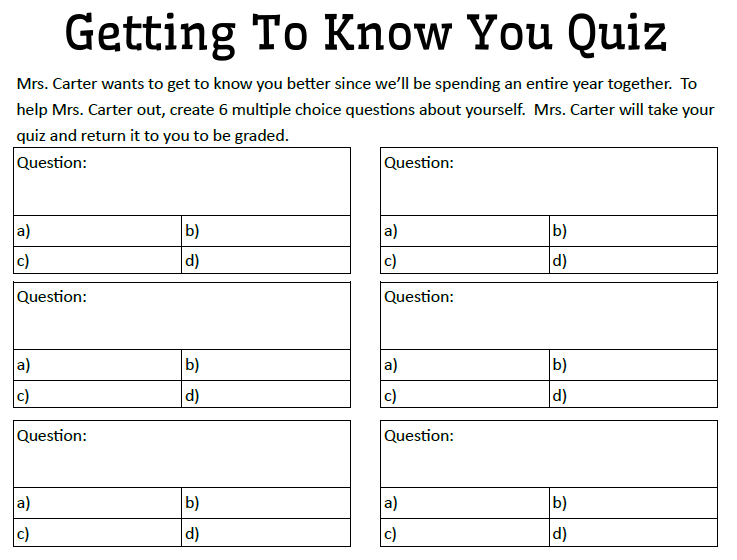
I like to use a getting to know you quiz to both introduce myself to students and to start learning more about my students. Yes, I am that cruel teacher who gives their students a quiz on the first day of school!
On the front of the quiz, students compete to see who can answer the most questions correctly about their teacher.
After I go over the answers to the quiz about myself, I invite students to write their own quiz about themselves. I take these quizzes after school on the first day of school so that I can return them on the second day of school.
Students love grading my answers and telling me just how well or badly I did!
Want to learn more? Check out my free editable getting to know you quiz template!
Name Tents

When I have had a ton of new names to learn, I really like using Sara Van Der Werf’s name tents. I have students write their first name on a folded sheet of paper. Inside the paper are various prompts that students respond to on a daily basis which strikes up a conversation between the teacher and the student.
For the first week of school, I have students get out their name tent at the beginning of the class period. This made it so much easier to learn names!
Getting to Know You Dice Activity
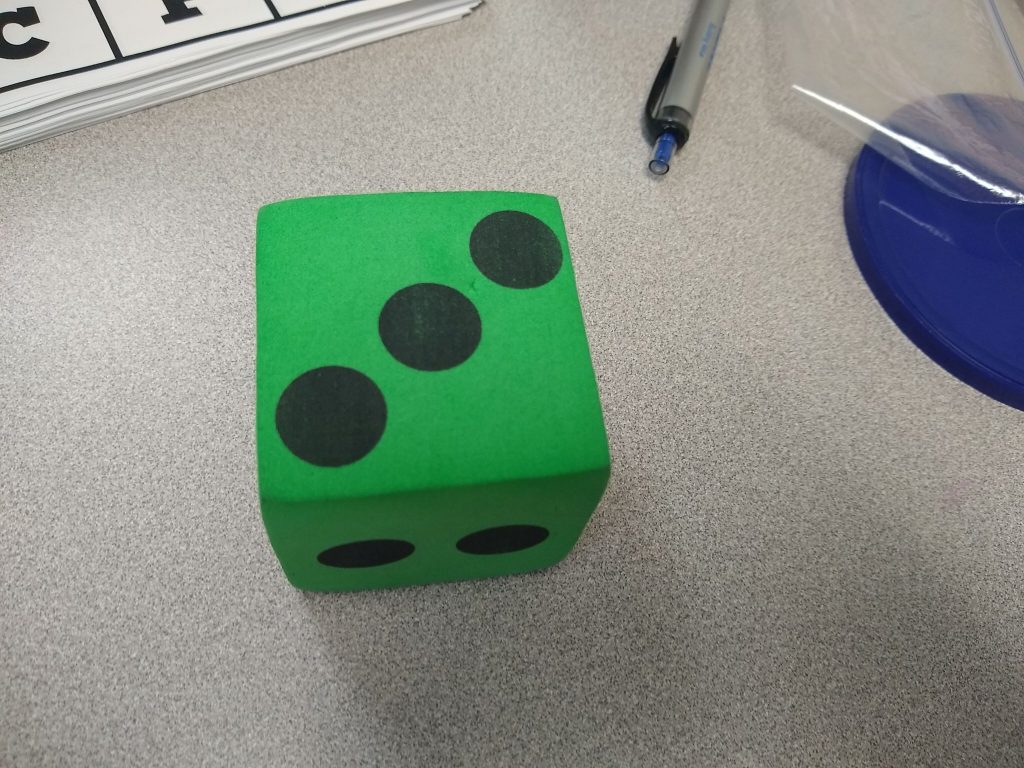
All you will need is a die (I like to use a large foam die) to pull of this easy-to-implement getting to know you dice activity. Have students take turns rolling a die. Whatever number they roll dictates how many facts about themselves they must share with the class.
You will be sure to hear groans when a student rolls a 6! I always play along as well.
Numbers About Me
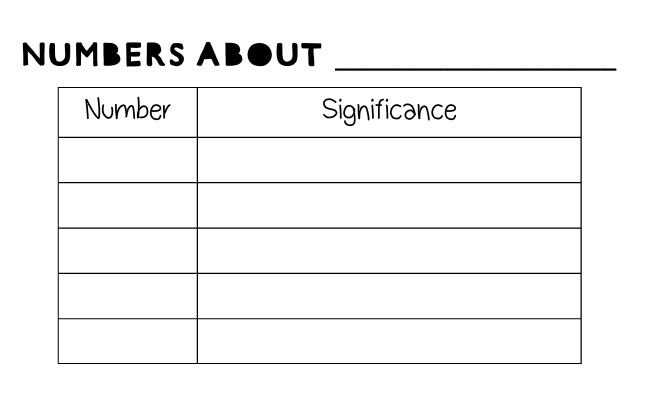
A great way to get to know students at the beginning of the school year is to have them fill out a short form like this Numbers About Me Activity. Students write 5 numbers and the significance each number has in their life.
Mathematical Autobiography
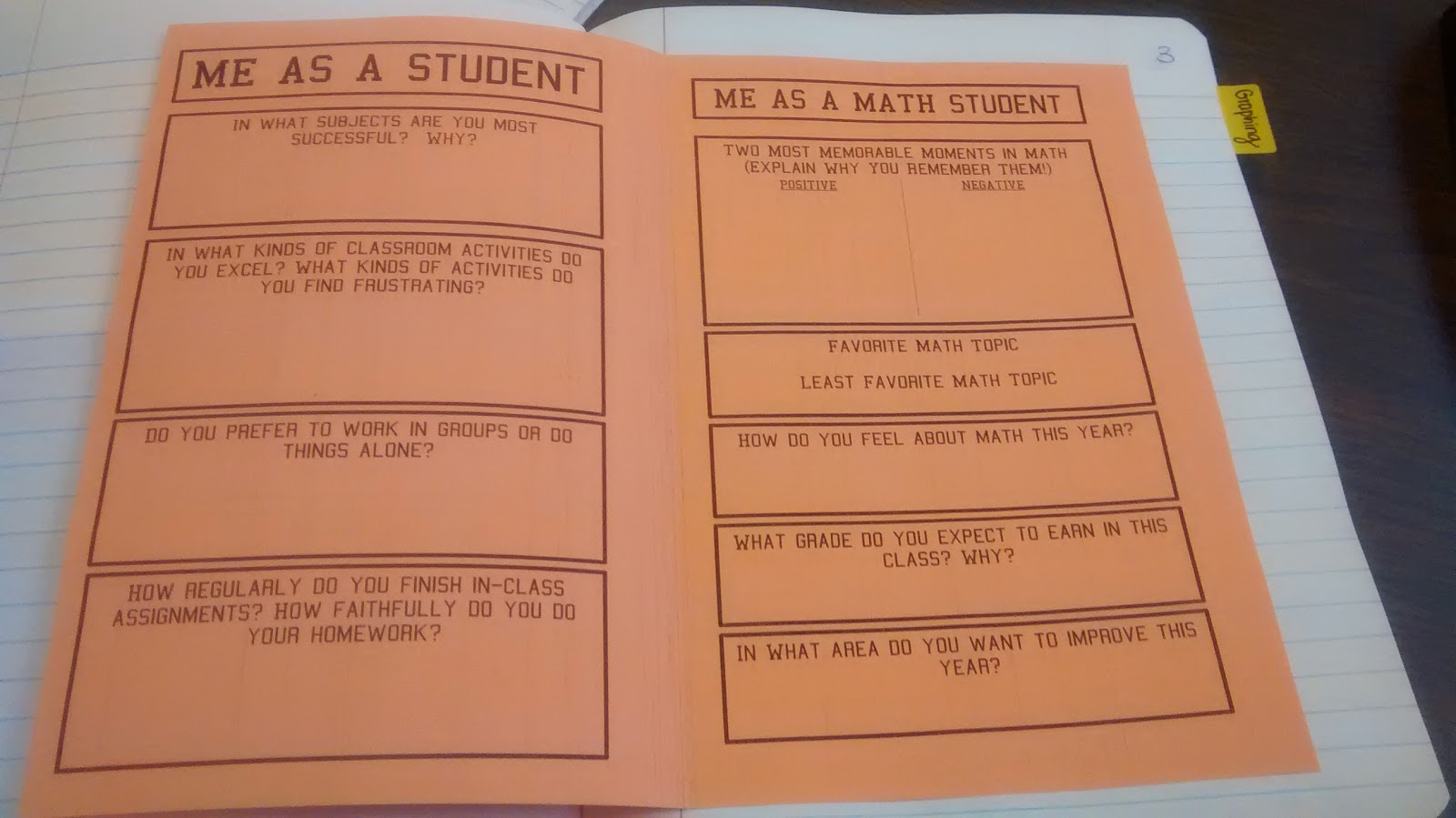
I created this mathematical autobiography foldable to try and get an idea of my students’ former experiences with math and attitudes toward math at the beginning of the school year.
Activities for Teaching Group Work
One of the most beneficial ways you can use the first week of school is to teach students how to work effectively in groups. By dedicating the first days of school to teaching group work, you can remind students throughout the year of the lessons learned during the activities.
Here are some activities I have used to achieve this in the past!
Let’s Make Squares
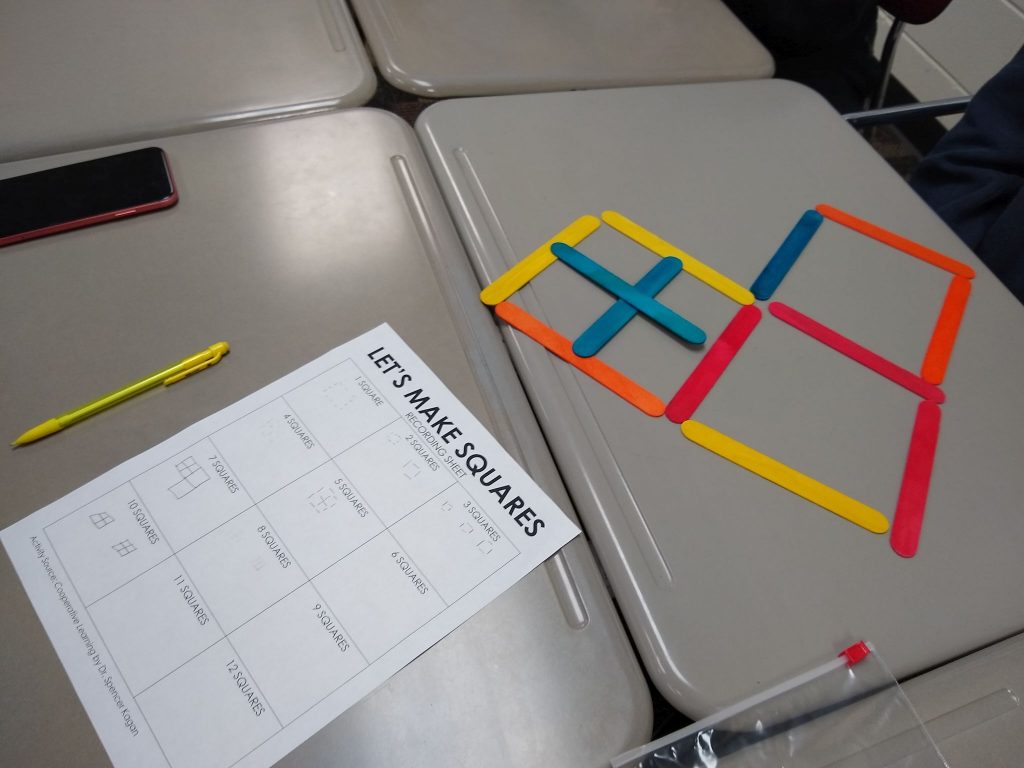
Let’s Make Squares is a cooperative group work task that challenges students in groups of 4 to use 12 popsicle sticks (or strips of colored paper) to create various numbers of squares.
Each student is only allowed to touch their own color of popsicle sticks, so they must communicate and practice working together.
They will need to use a bit of logic and creativity to figure out how to make each number of squares.
Broken Circles
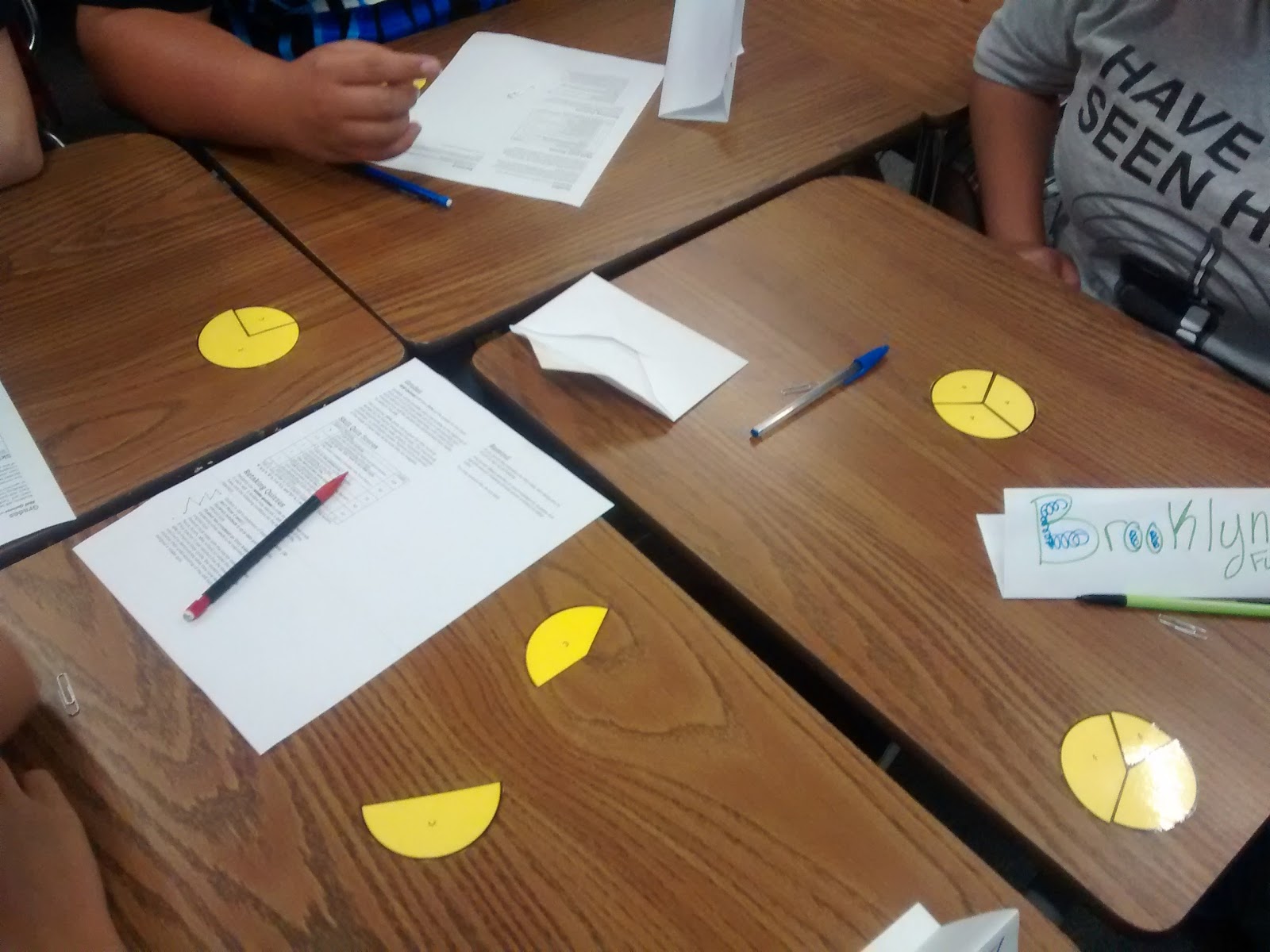
In Broken Circles, each student receives an envelope of circle pieces. The goal of the activity is for each student to assemble their pieces to form a complete circle. This activity requires cooperation and communication.
At the beginning of the activity, one student’s pieces will form a circle. The rest of the student’s pieces won’t. It won’t be until the person with the complete circle decides to give some of their pieces to the other students that ALL of the students will be able to make a complete circle.
What an important lesson!
Ink Stain Matching Activity

You might be asking yourself what this ink stain matching activity has to do with teaching math. Fun fact – it absolutely has nothing to do with math. But it has everything to do with practicing critical thinking and communication inside of a group.
Tell your students that 16 items were dipped in ink and then used by an individual. They must work together to match the ink stain left on their hand with the object that they used.
Kids get really into this activity. It’s a definite keeper for the first week of school.
Rainbow Logic
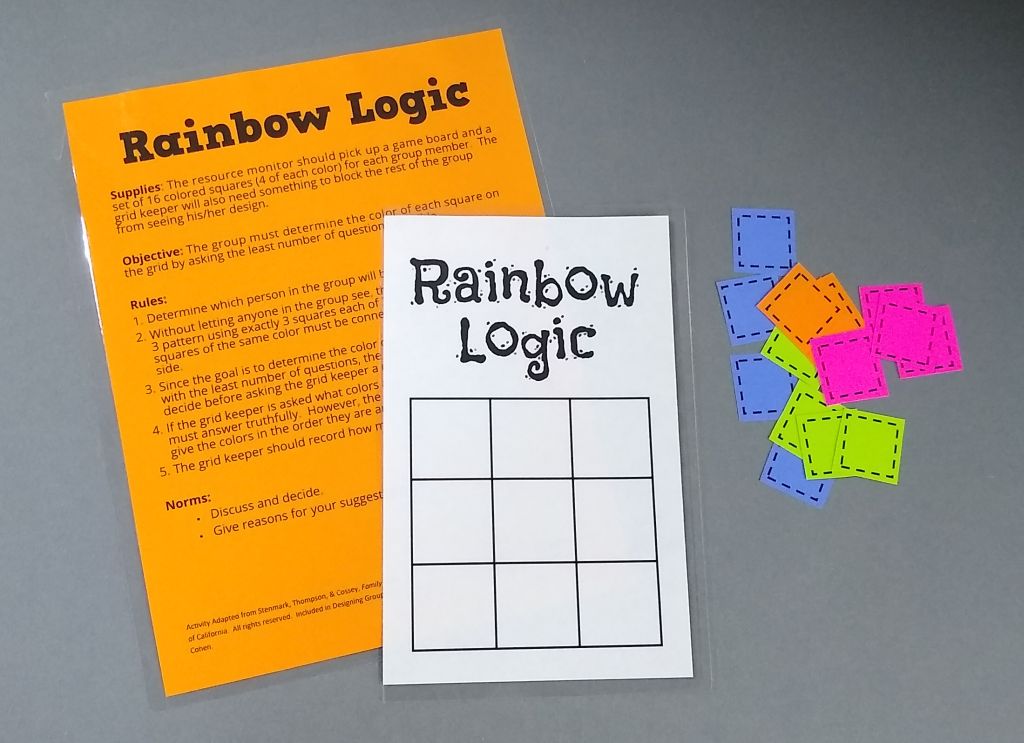
Rainbow Logic is an activity that encourages not only groupwork and communication but logical thinking skills. One student in each group will play the role of “grid designer.” They must arrange colored squares on a 3 x 3 grid using a special set of rules.
The rest of the group must then work together to determine the placement of each of the squares on the grid by asking as few questions as possible.
My students really enjoyed this activity. They didn’t want to stop until everyone had a turn as “Grid Keeper.”
Build It
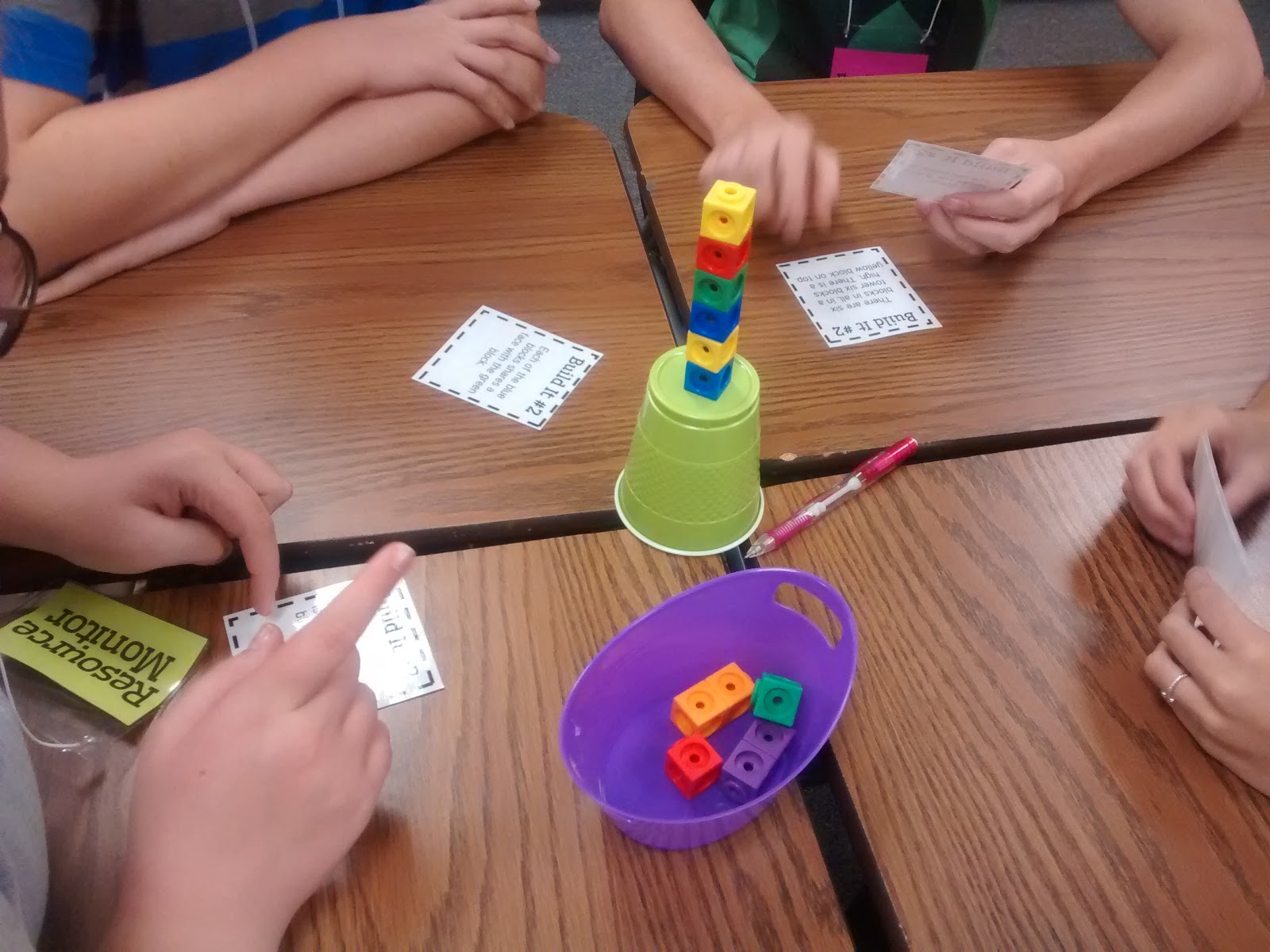
Build It is a cooperative learning activity that provides students with clues and a set of linking cubes that must be assembled to match the clues. The catch?
Each student can only see their own individual clue. This provides great practice in group work communication since each student will need to share their clue verbally and work together to make sure they have created the correct shape with their linking cubes.
With multiple structures to build, this activity is always a great hit!
Guess My Rule
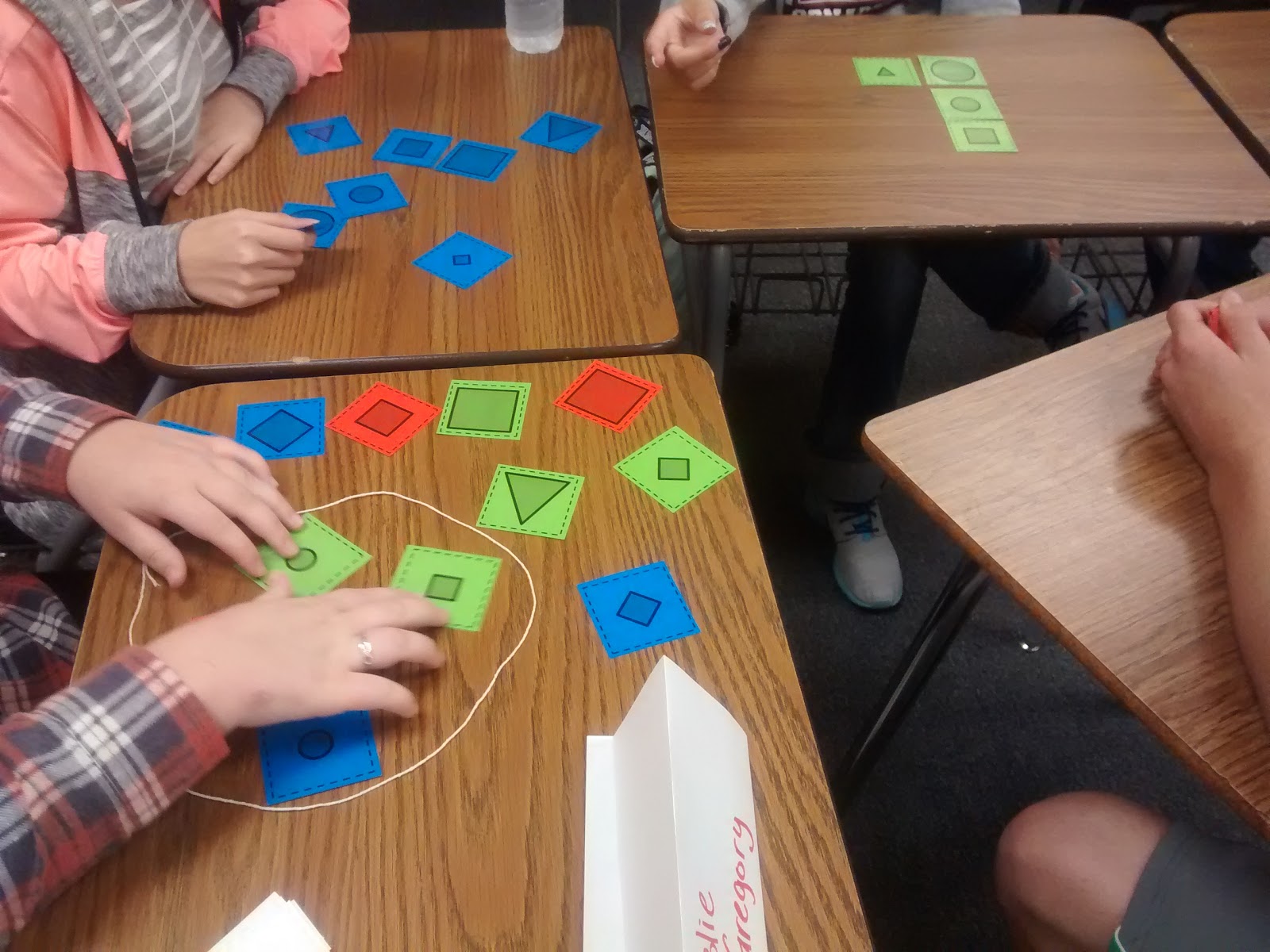
Guess My Rule is a team-building activity that engages students with figuring out the rule that one of their group members is using to sort a set of colored shape cards. Students take turns picking a card to hand to the rule keeper.
The rule keeper will place the card inside the yarn circle if it matches the rule and outside the yarn circle if it does not match the rule. How long will it take students to figure out the rule?
This activity would be great for a geometry class or any math class for that matter! I have used it with Algebra 1 students in the past.
Lonesome Llama
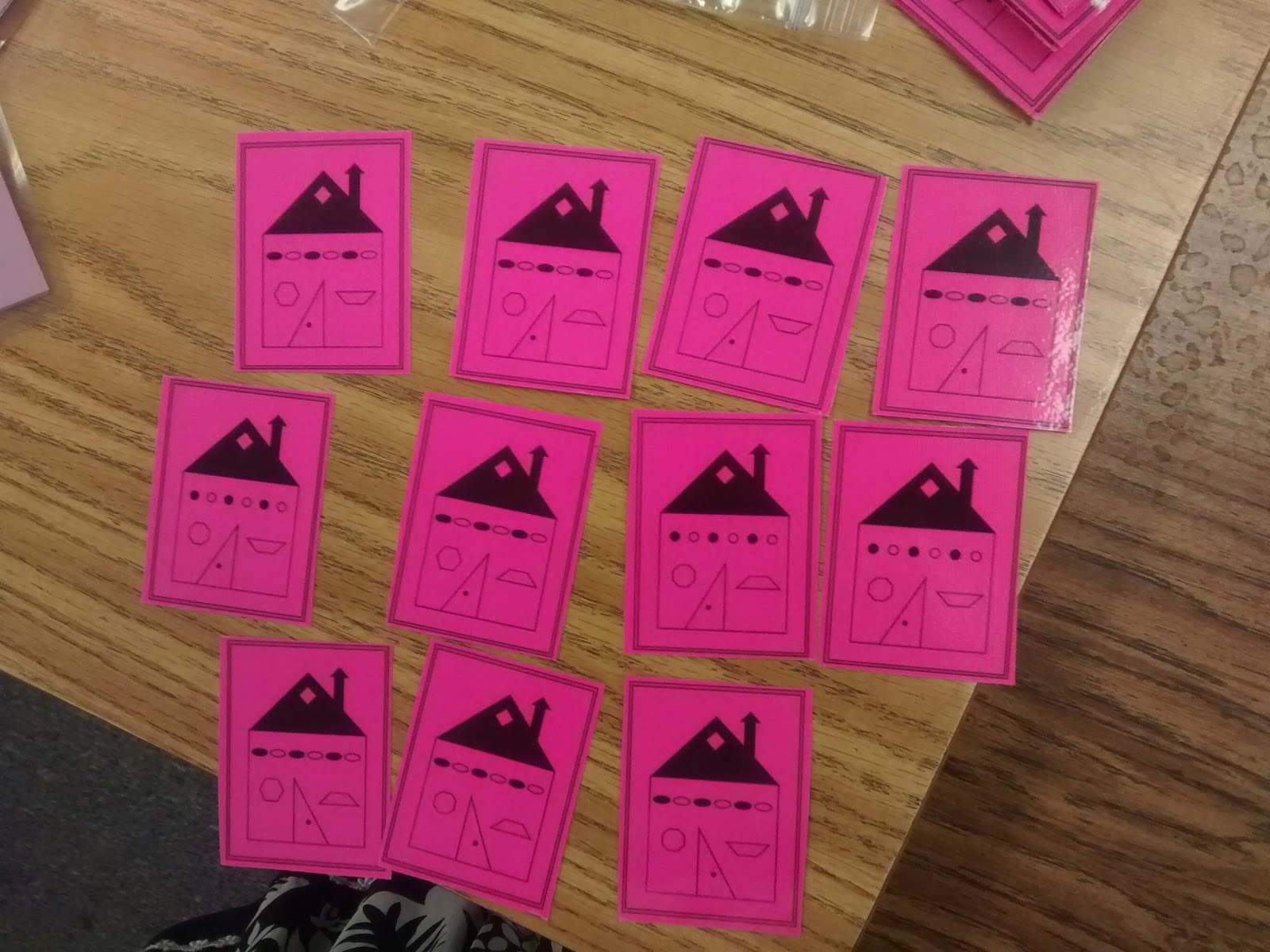
Lonesome Llama is a tricky card-based activity that focuses on encouraging communication, question asking, and attention to detail. Groups are given a deck of cards in which every card has an identical match except one.
Students are only allowed to look at the cards in their own hand. They must then work together to determine which card in the deck has no match. Doesn’t sound too hard, right? Check out the cards!
1-100 Activity
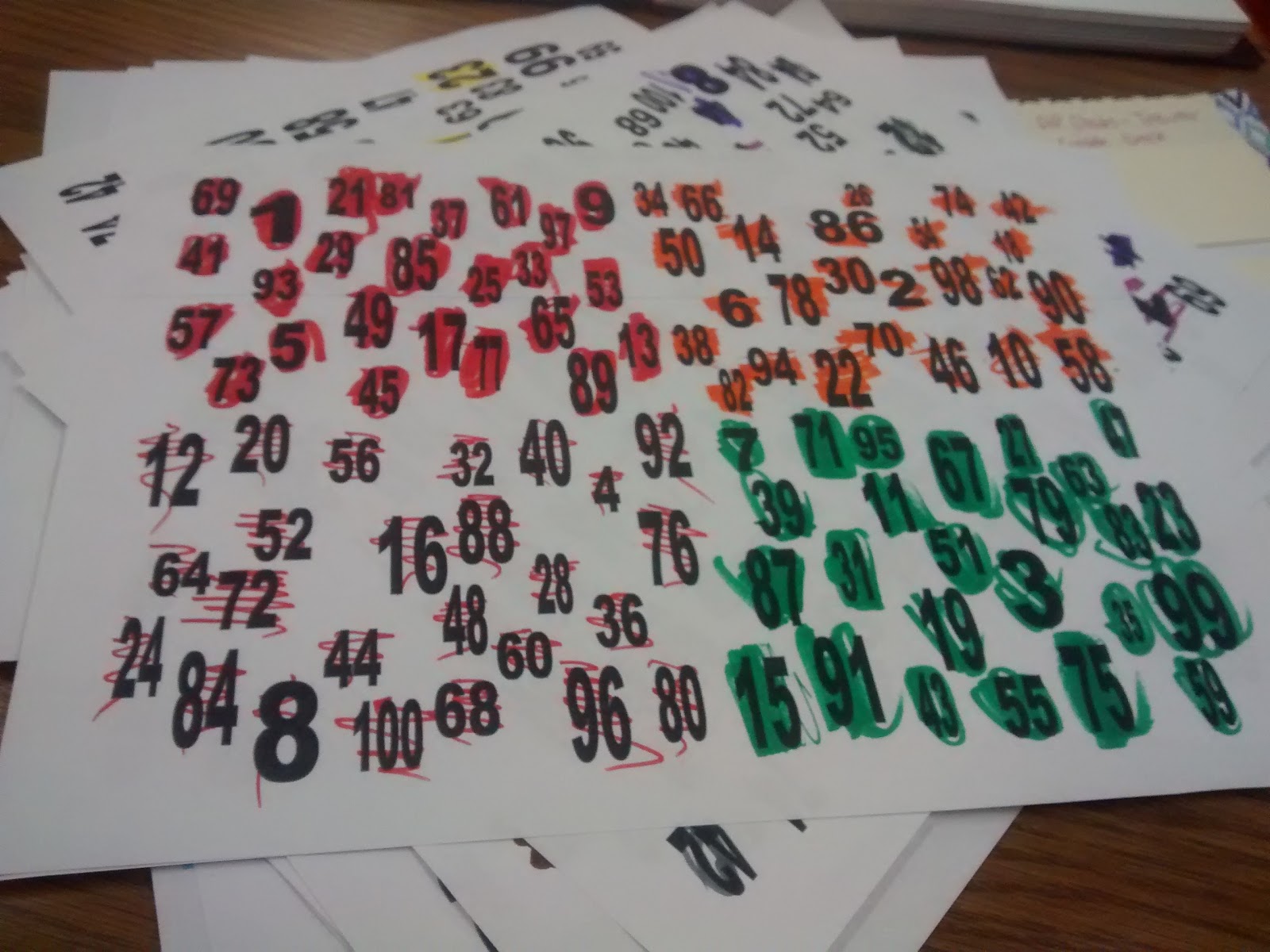
Sara Van Der Werf’s 1-100 Activity is a great way to model groupwork and slowly open students’ eyes to the patterns that exist in mathematics if we are willing to search for them. Students are given a grid of jumbled numbers.
They must take turns coloring the numbers from 1 to 100. Will they notice the pattern???
Master Designer
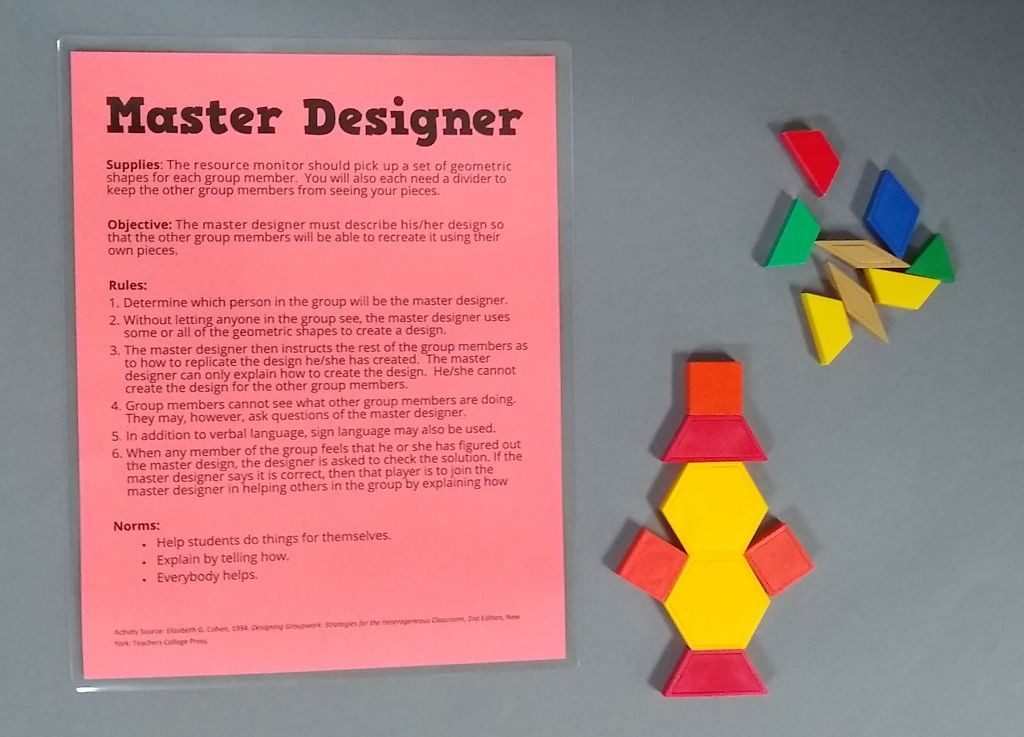
Master Designer is a group-activity that engages students in building designs and communicating to other students in such a way that their design can be recreated. You will need a set of pattern blocks for each student to use.
Save Fred Activity
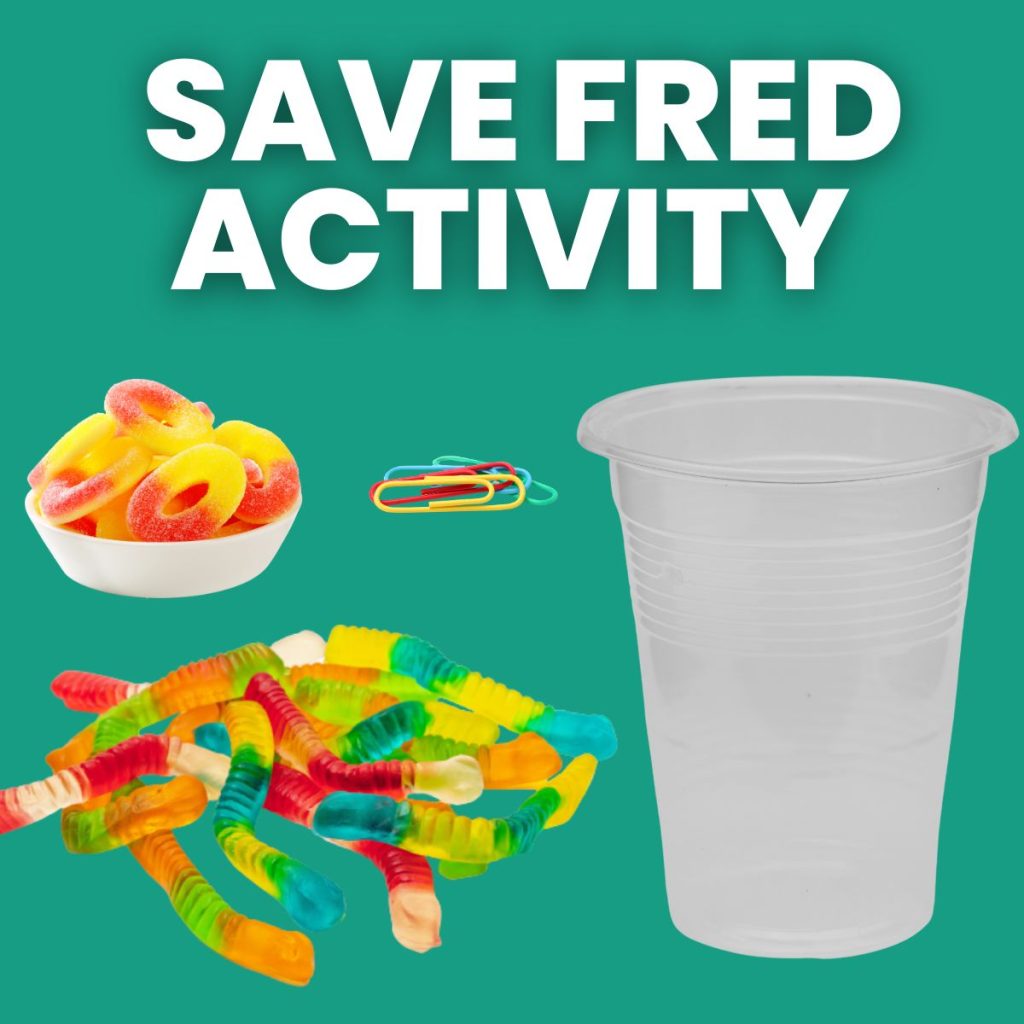
In this Save Fred Activity, groups are given a gummy worm named Fred to rescue after his boat has capsized. Students must work together to save Fred without hurting or damaging them.
Each student may only use the provided paperclip to touch the materials as they turn his boat over and retrieve his life preserver that they must place on him.
Puzzles and Brainteasers
If you put me in charge of planning the first week of lessons for a high school math or middle school math classroom, I would make sure to incorporate several different puzzles. You could set these puzzles up as math centers which students rotate through or complete them as a whole-class activity.
Even though I typed up all of these puzzles for my own high school classroom, I have been absolutely blown away by the number of emails from elementary school teachers I get who are using my puzzles with students as young as 1st grade. So, elementary math teachers could definitely implement some of these puzzles as well. Of course, you will have to pick and choose the puzzles that are most appropriate for your age of students.
Back to School Themed Puzzles and Activities
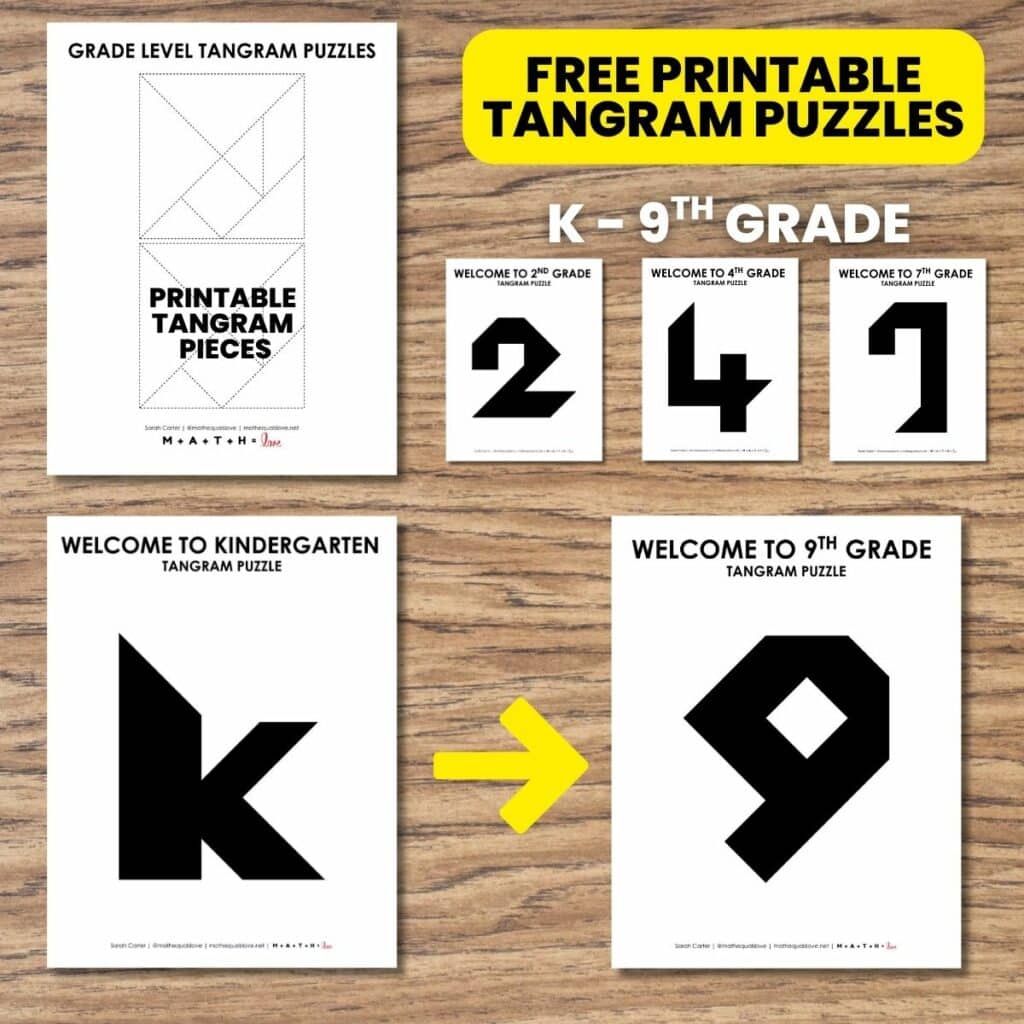
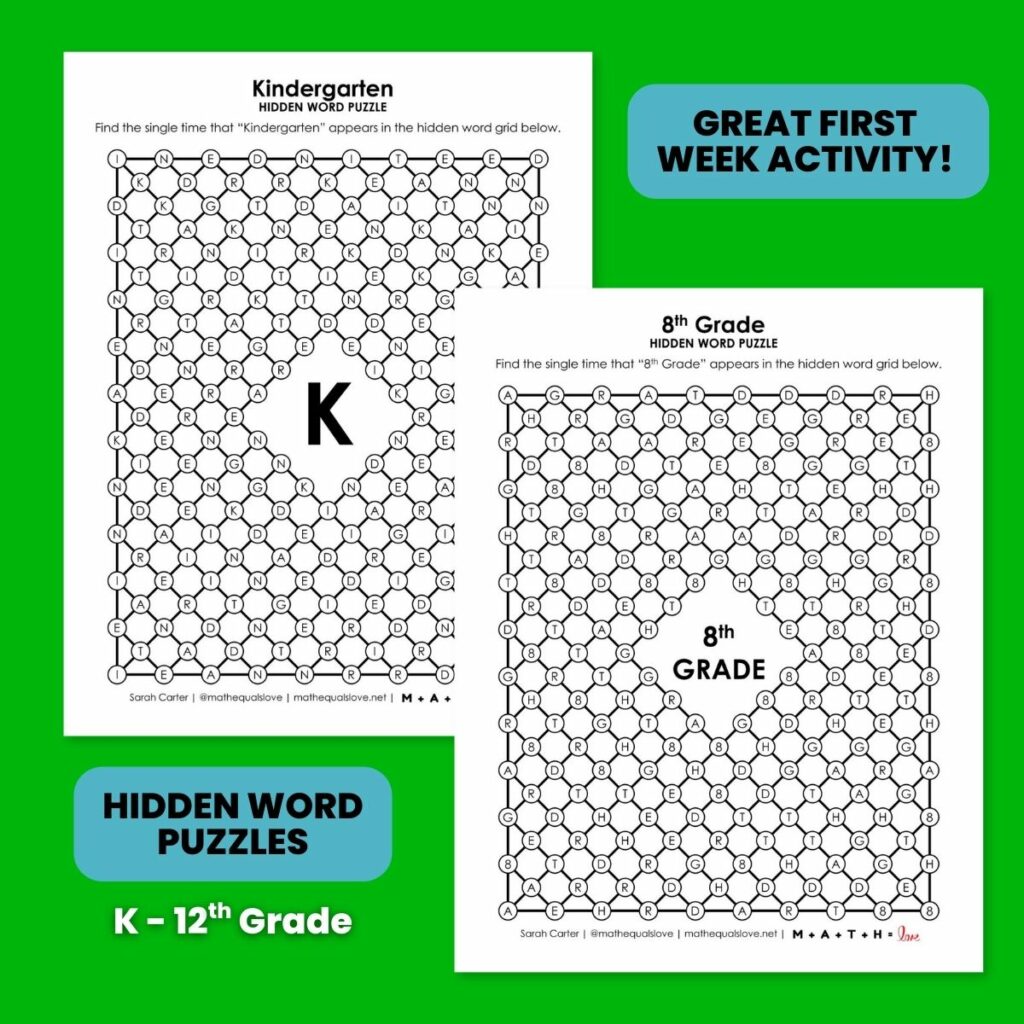
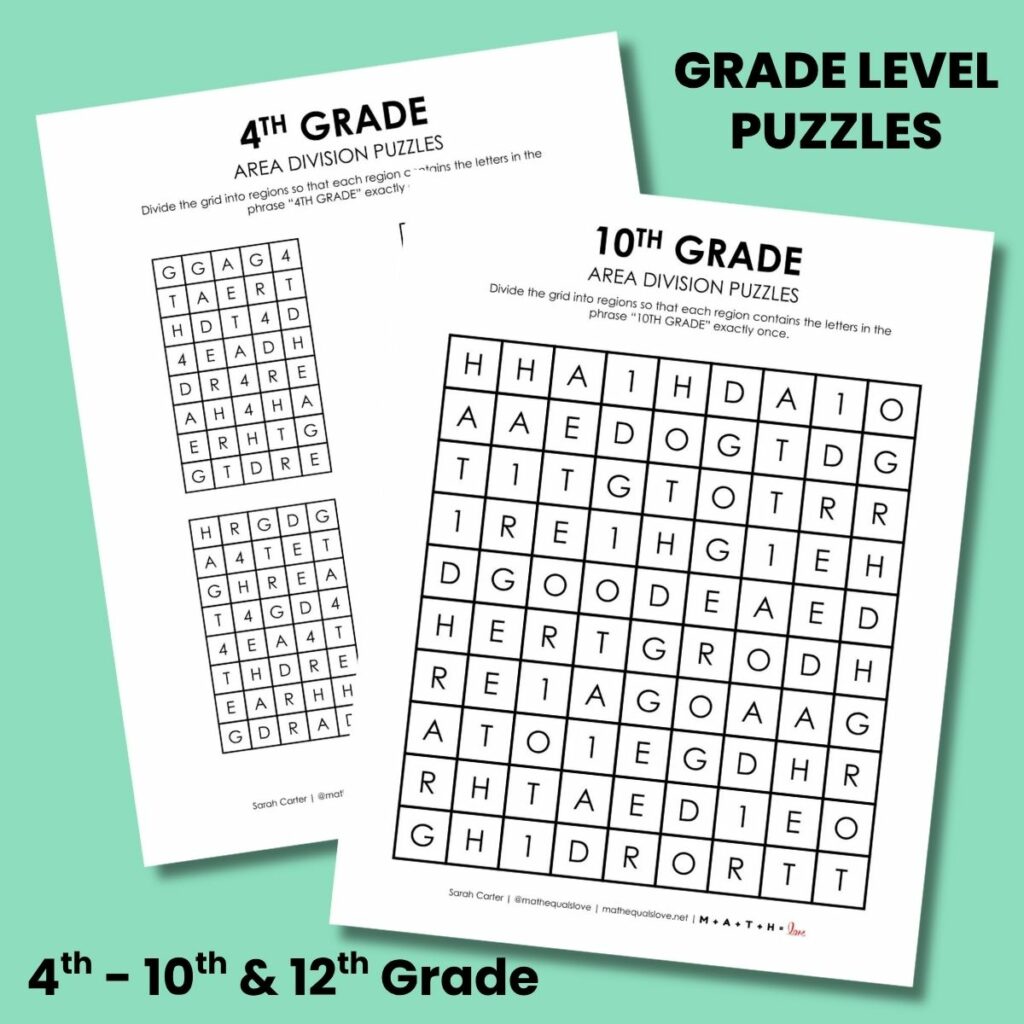
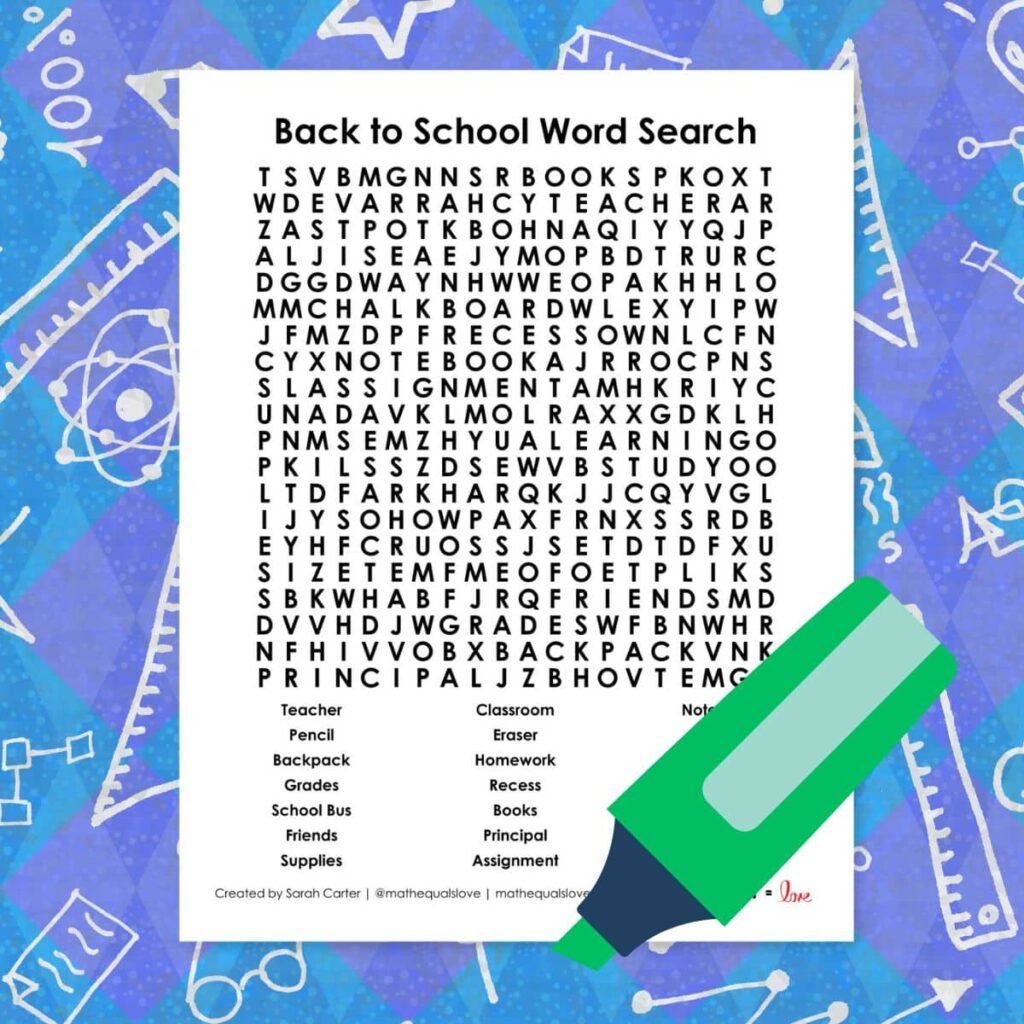
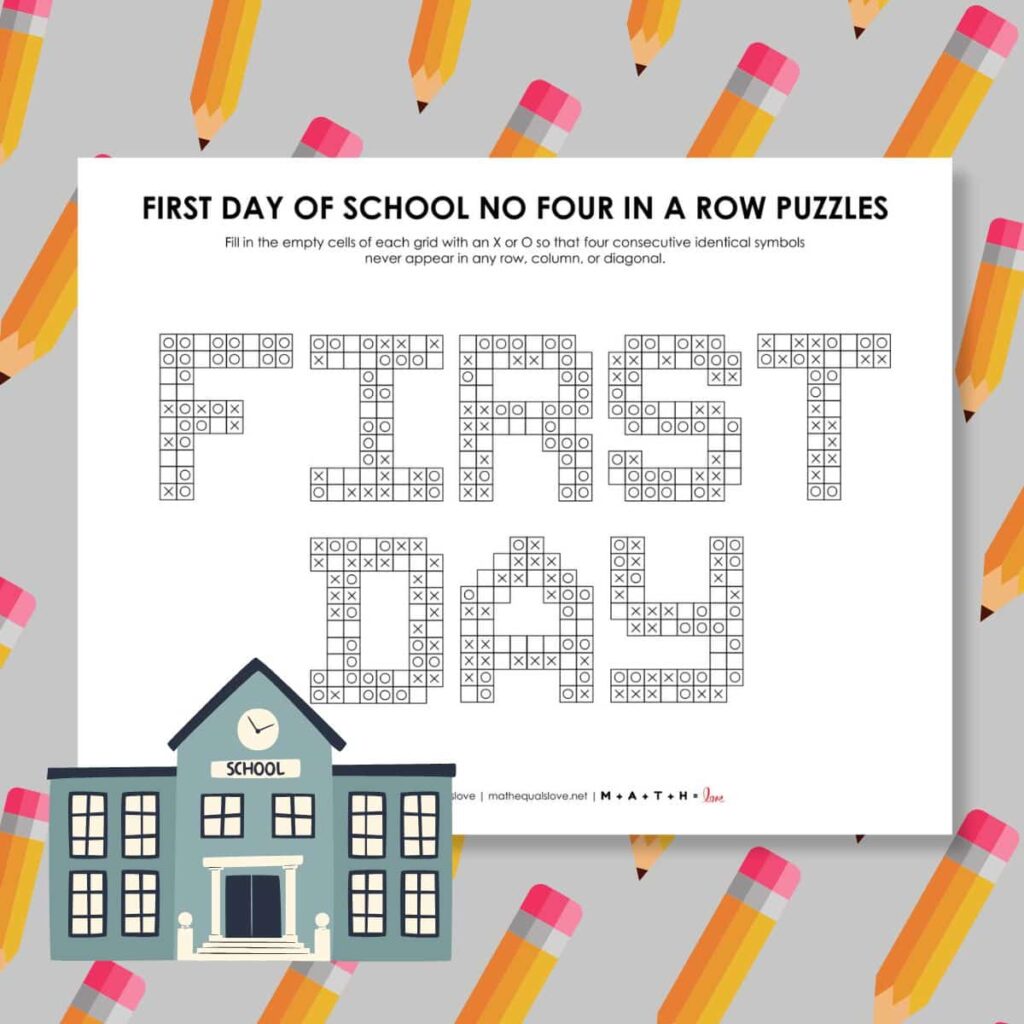
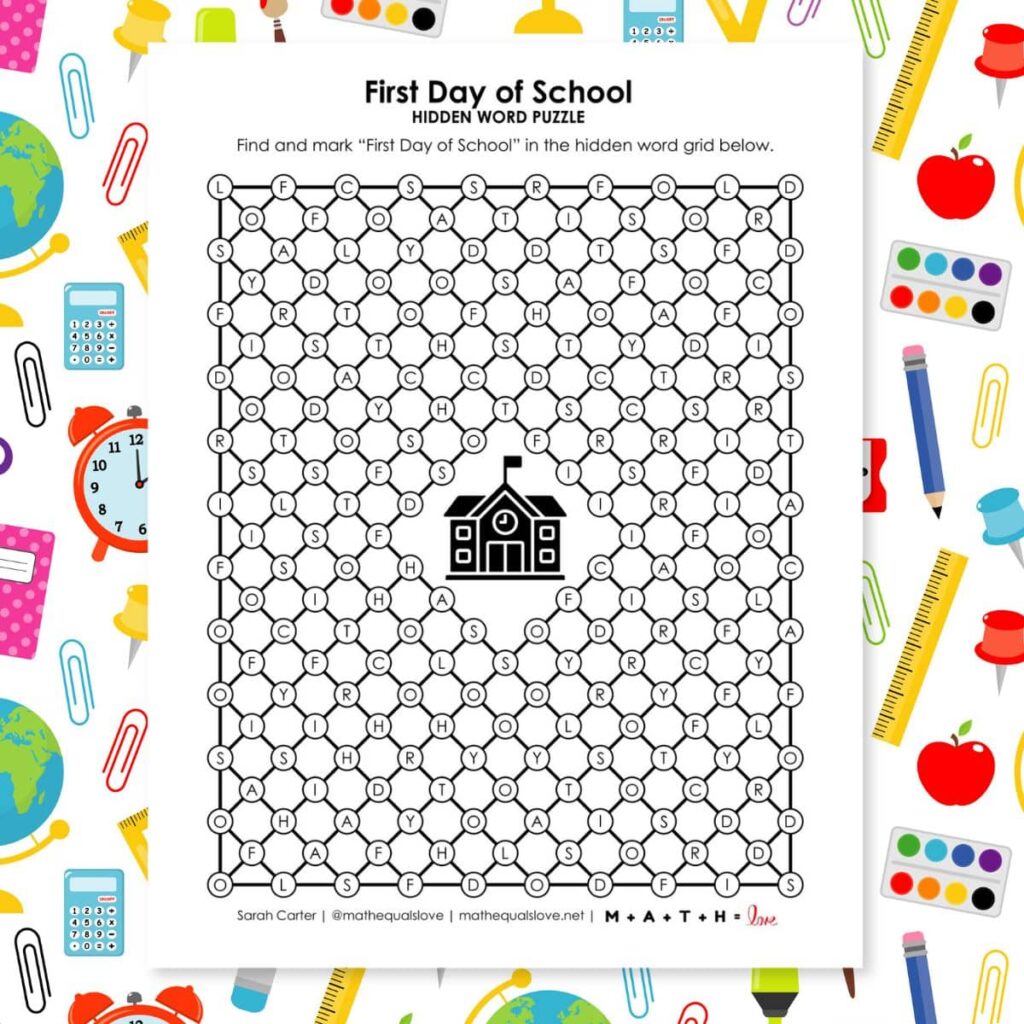
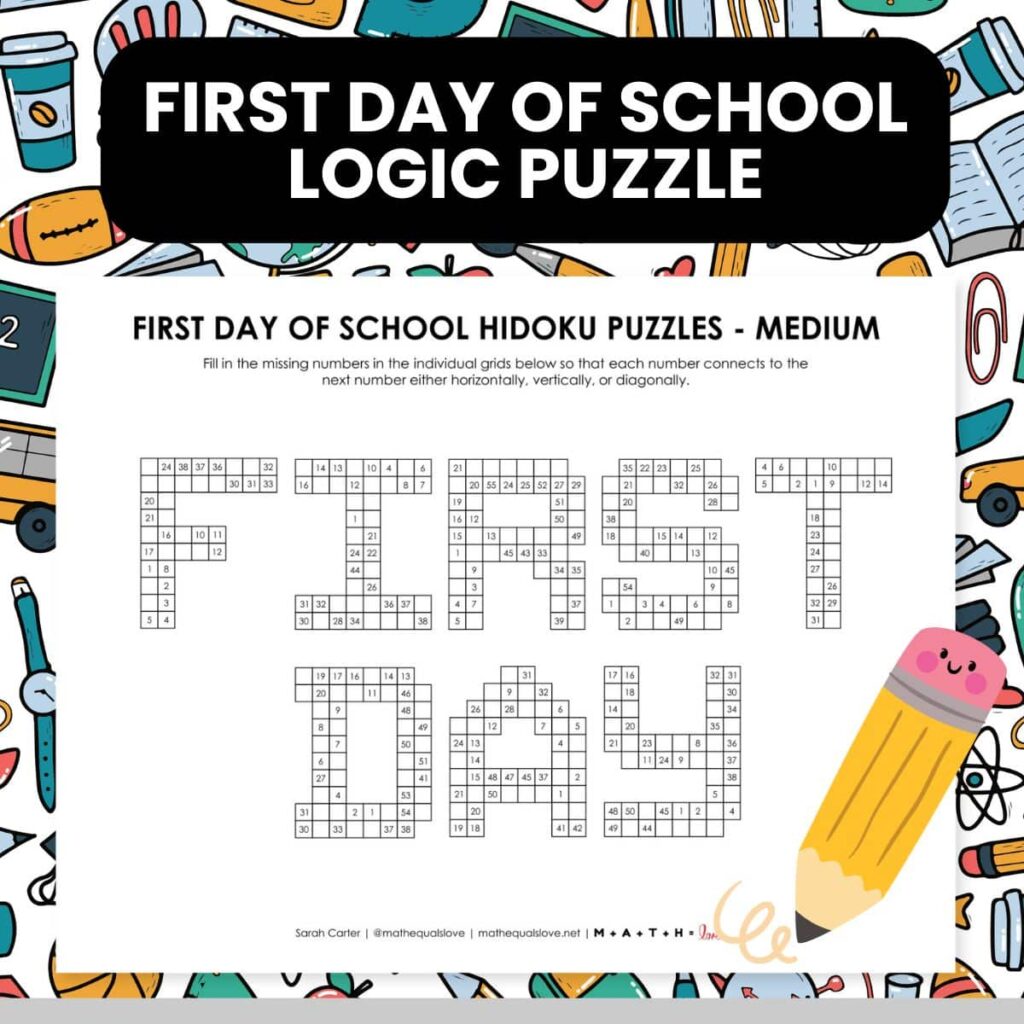
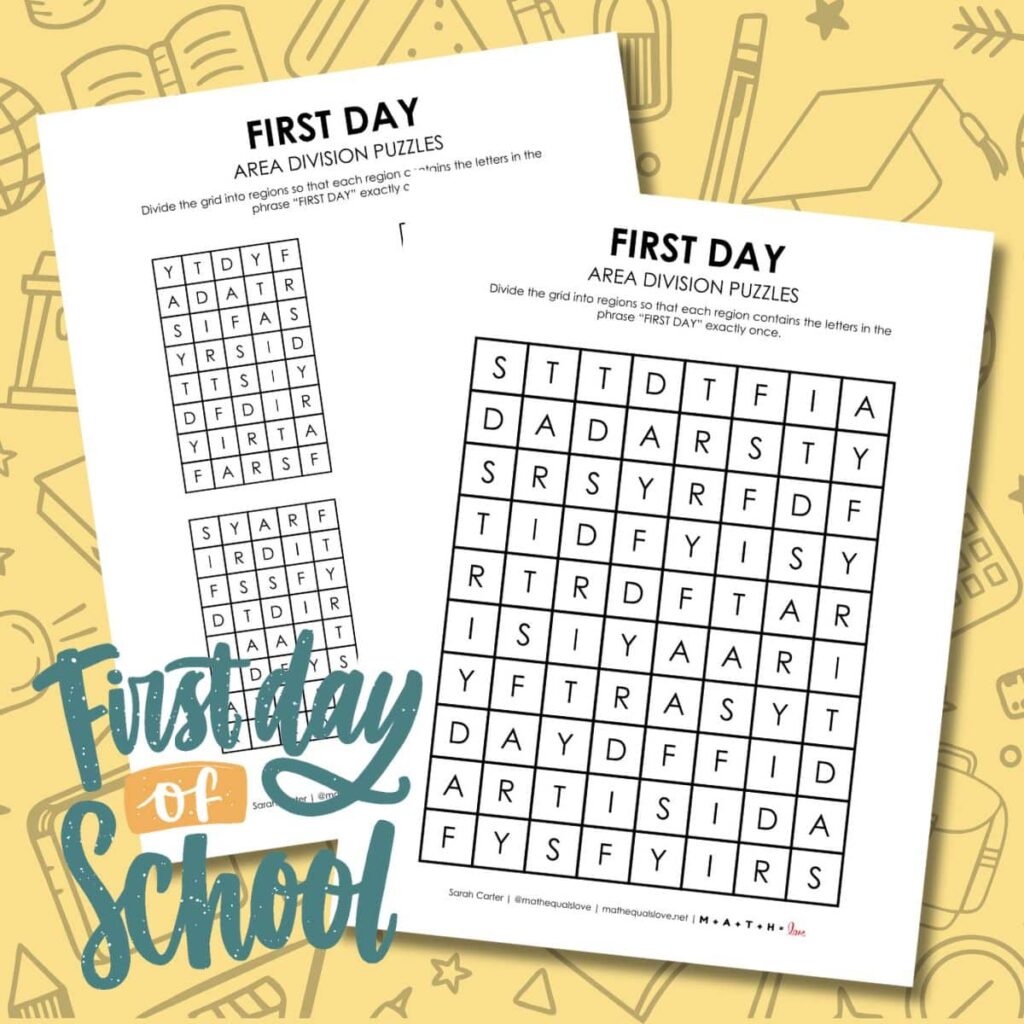
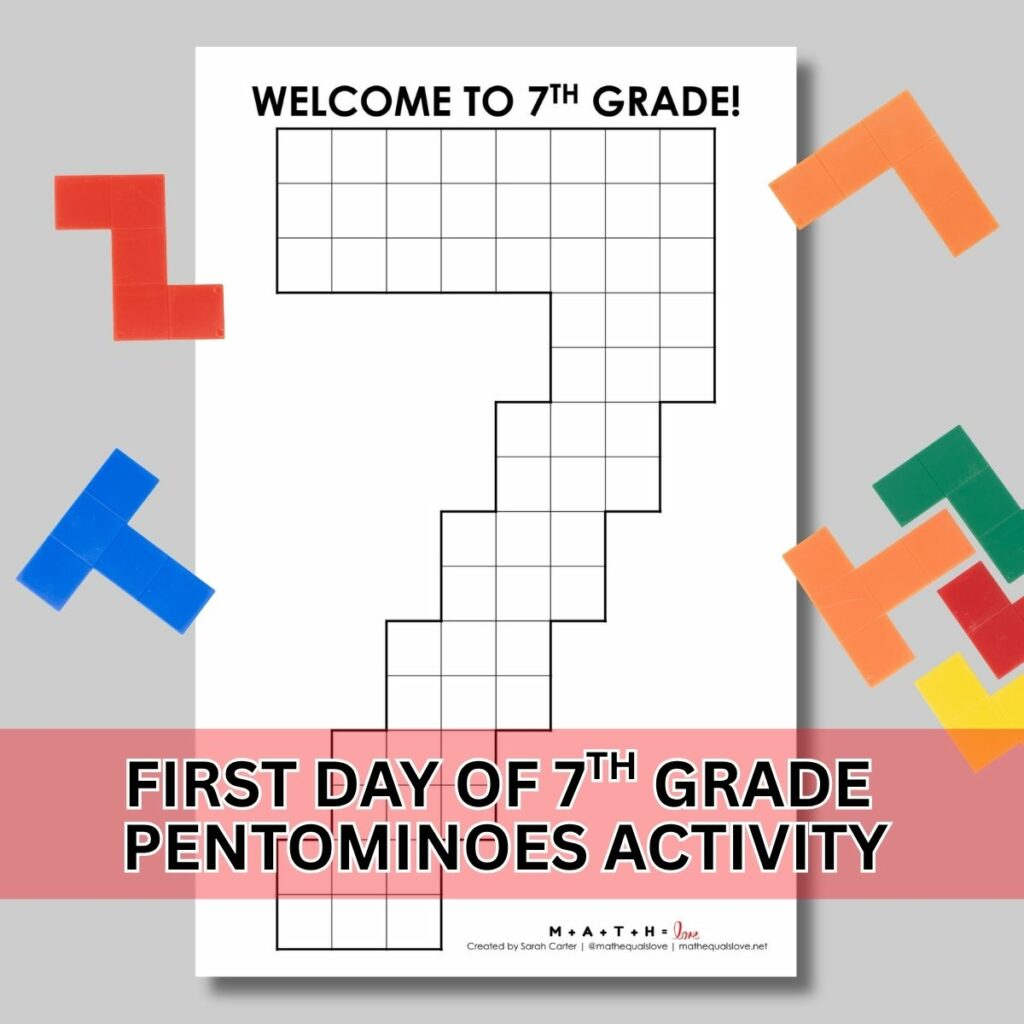
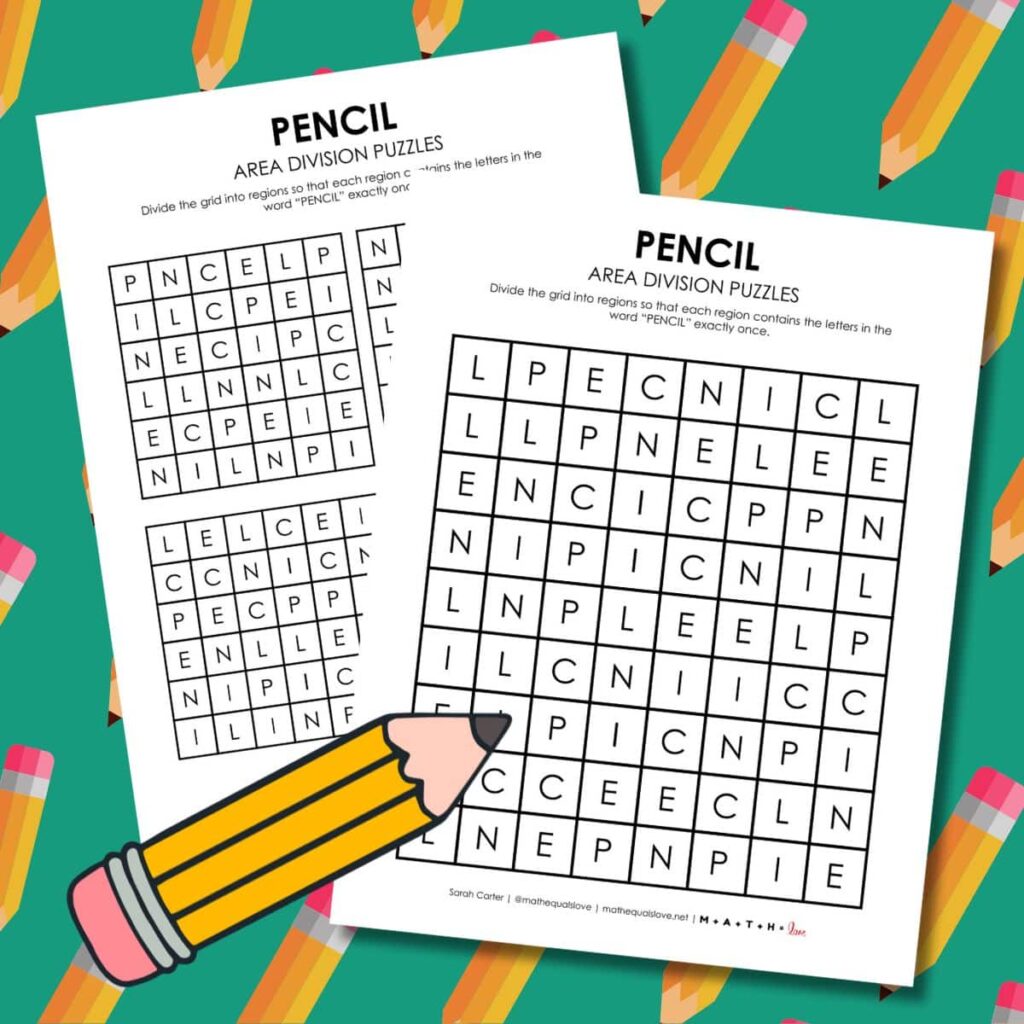
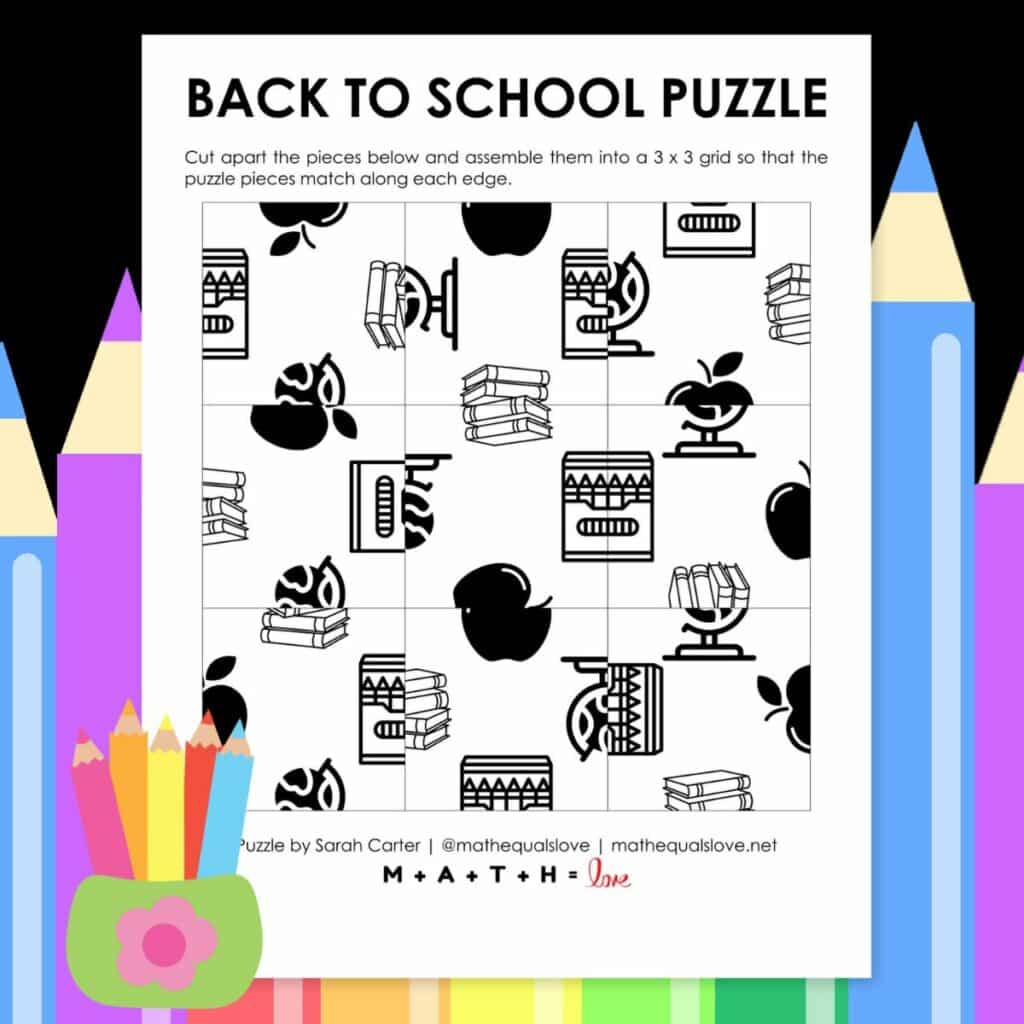
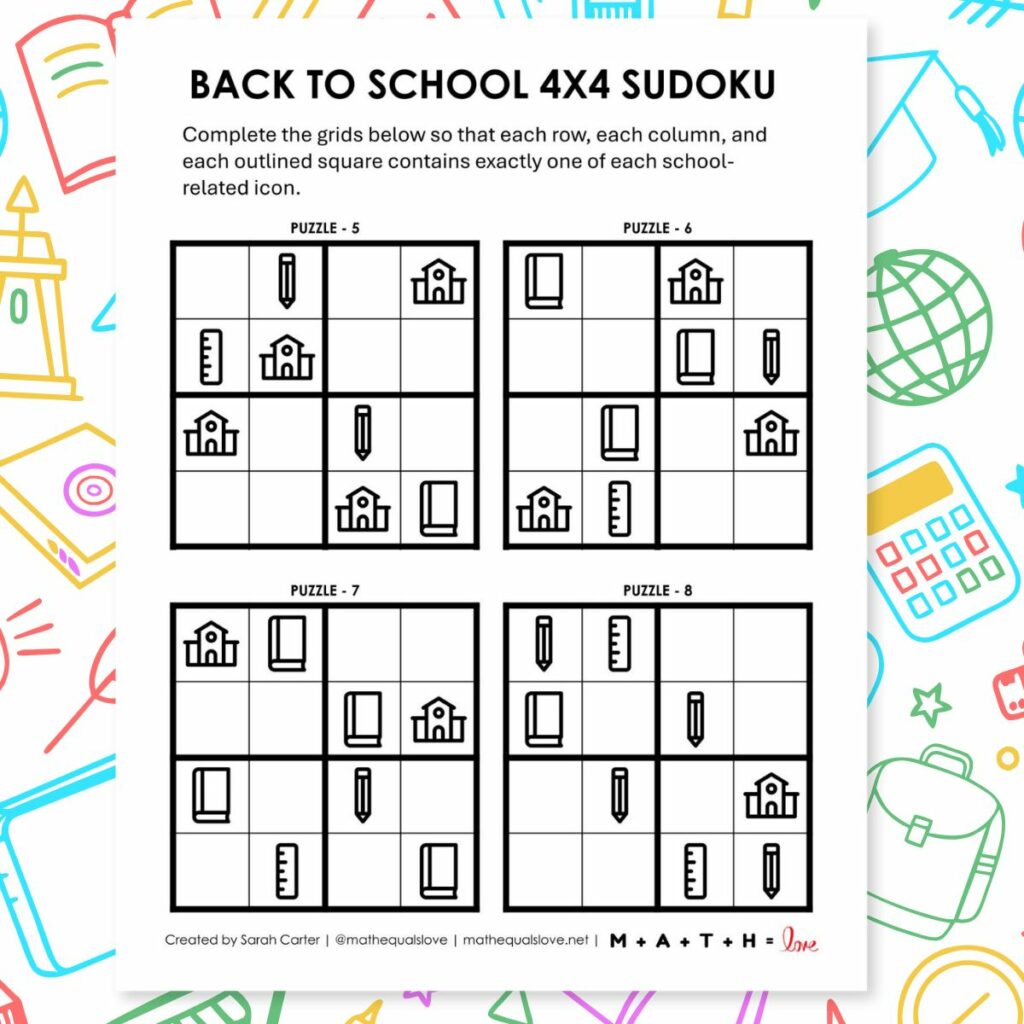
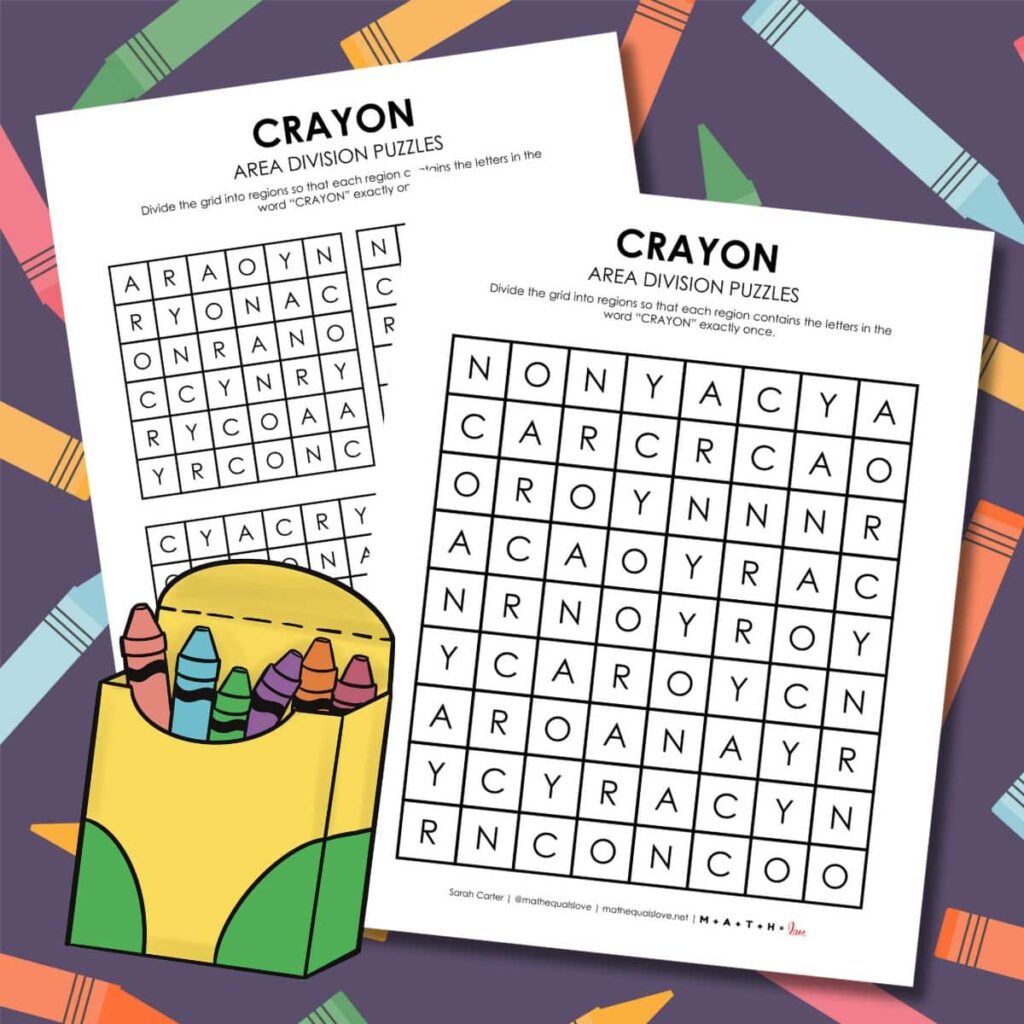
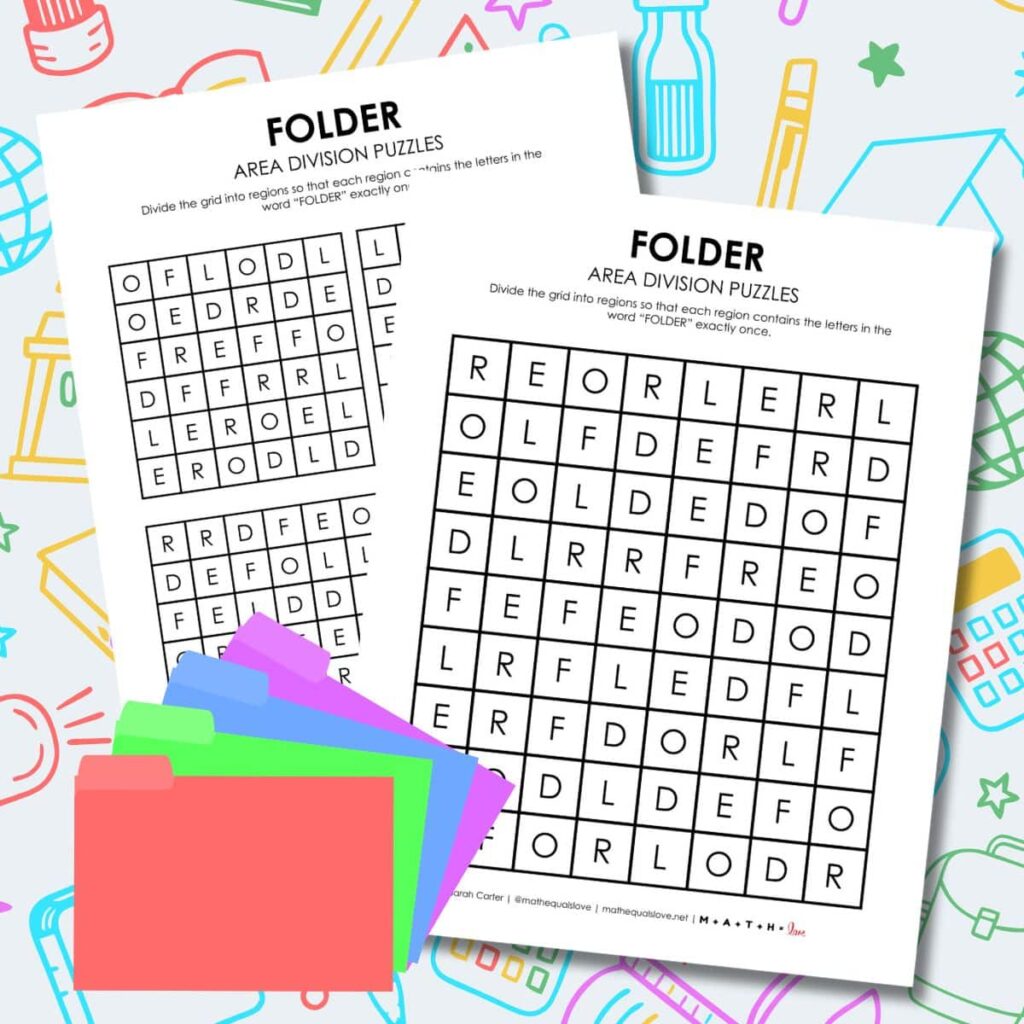
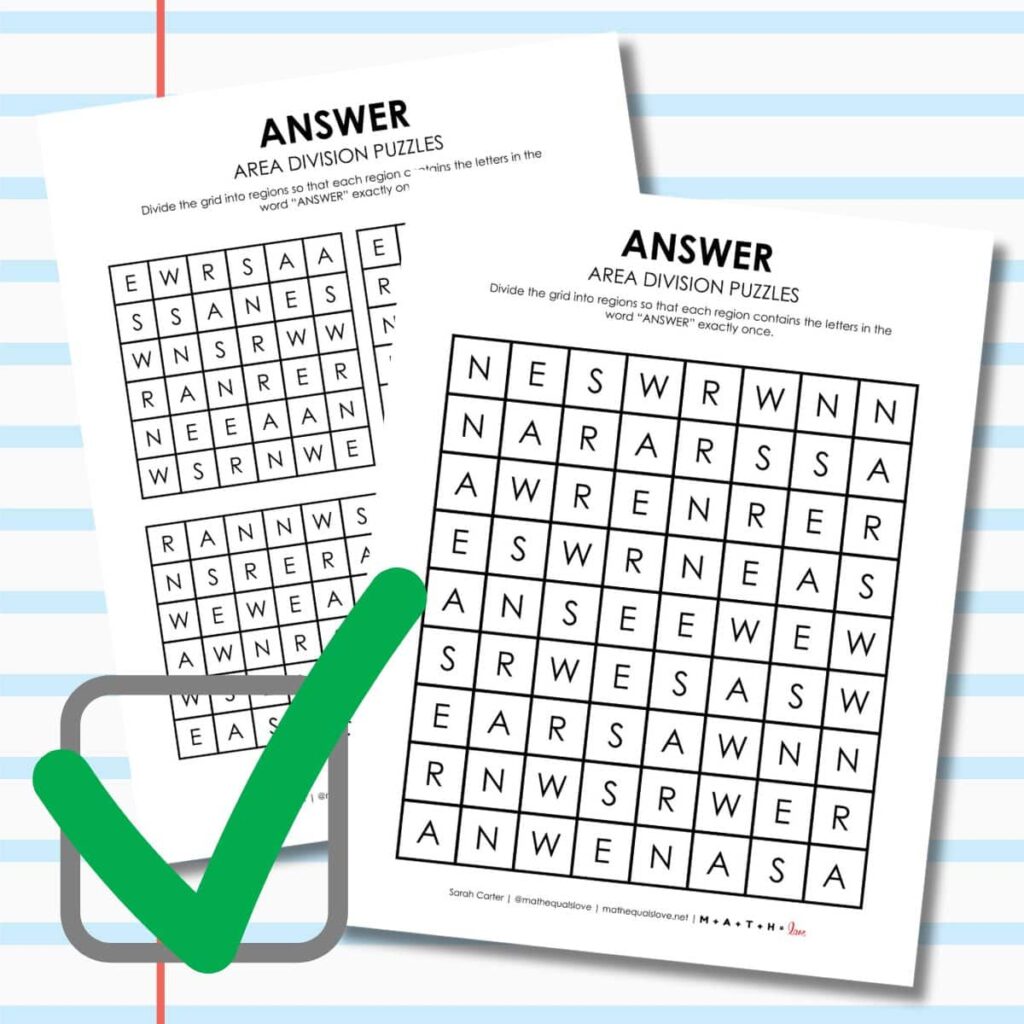
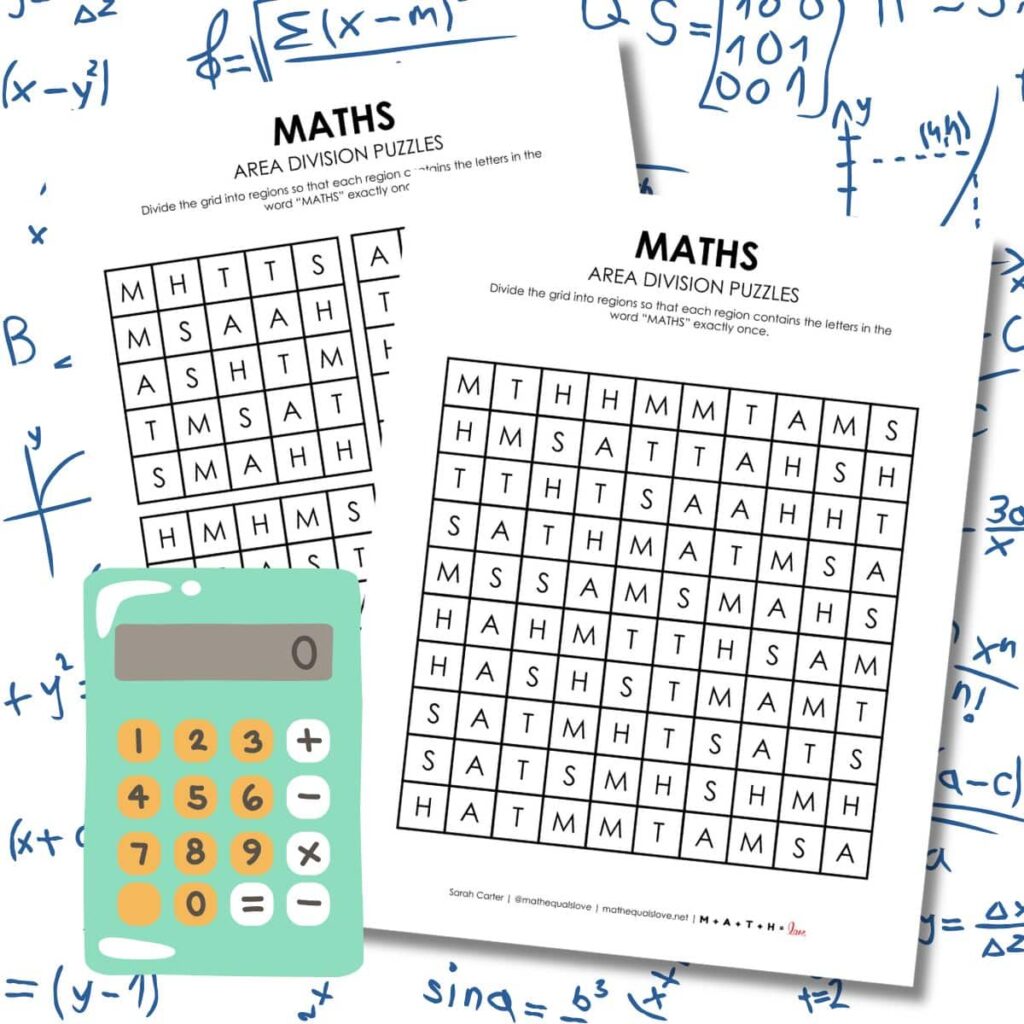
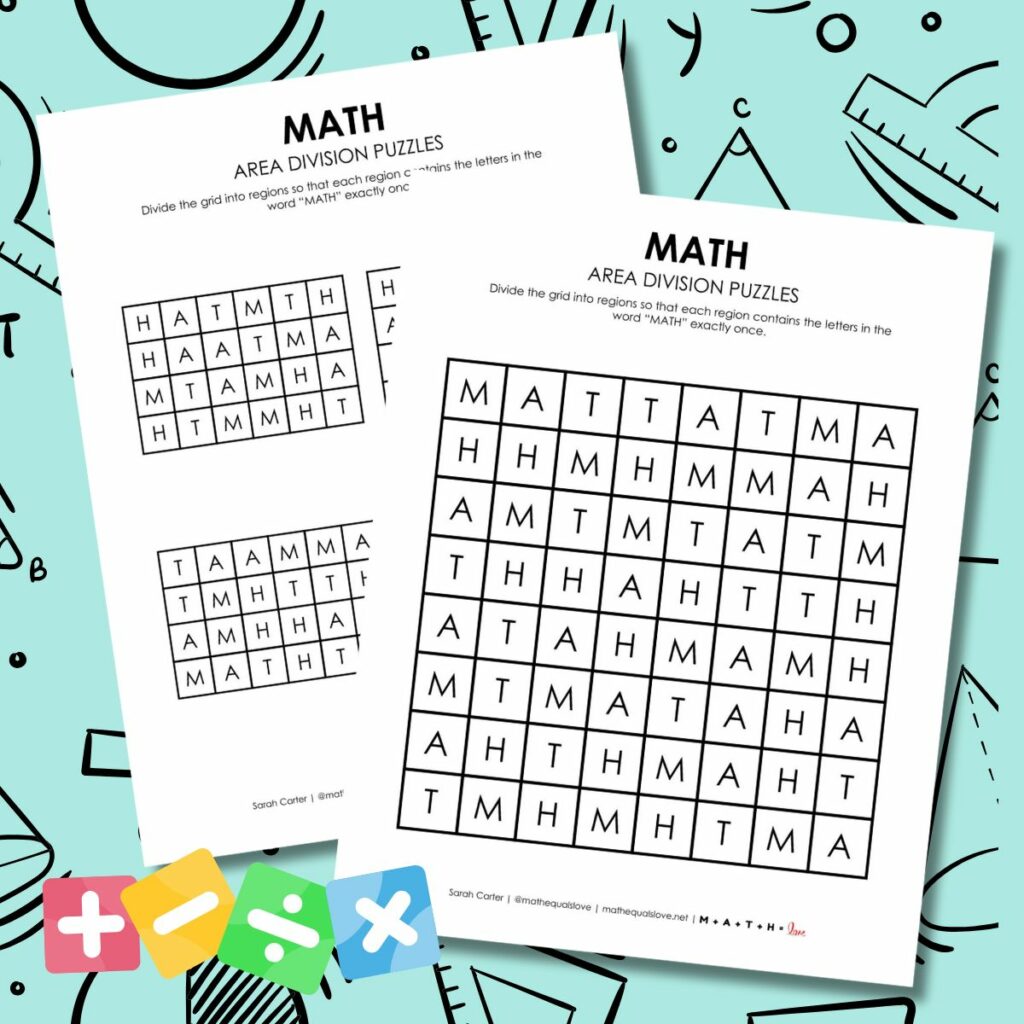
Two Buckets Puzzle
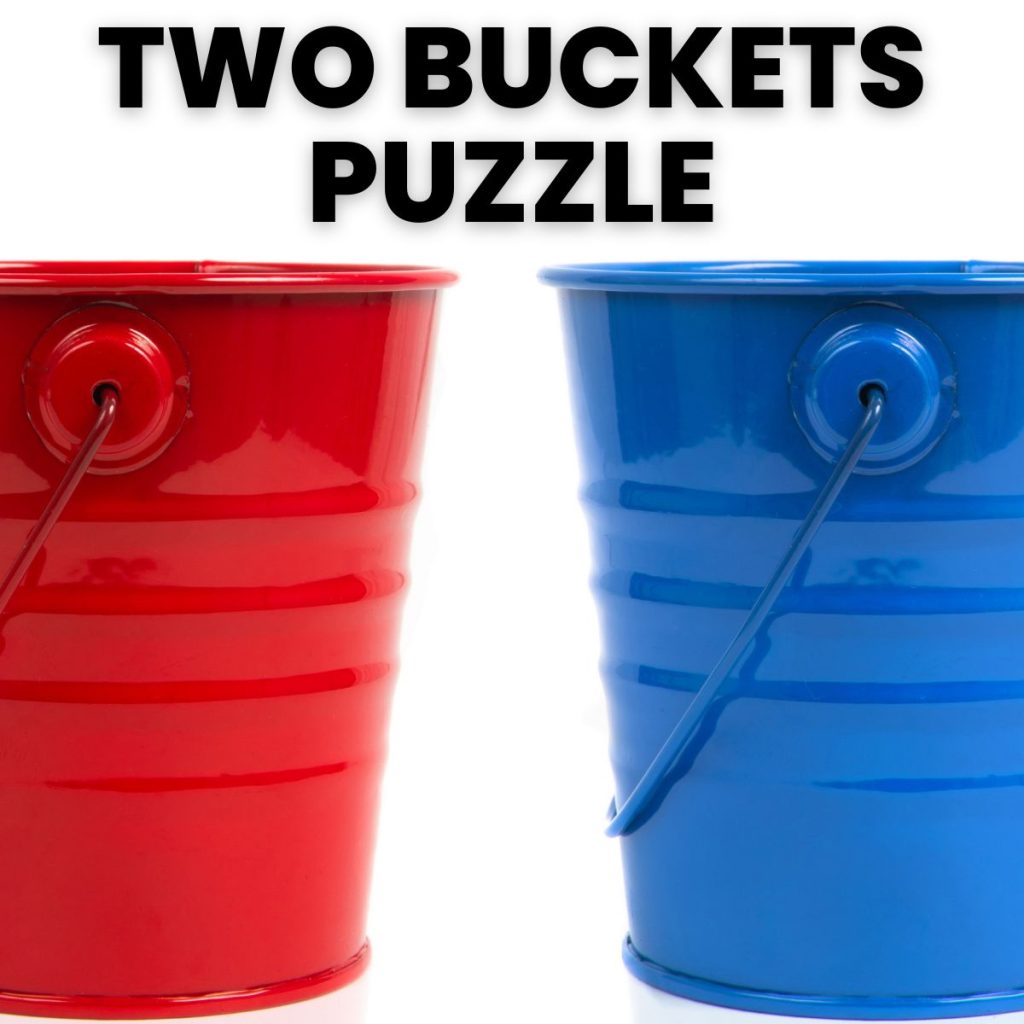
Most likely, you’ve ran across some variation of the two buckets puzzle at some time in your life. You have two buckets. One bucket holds exactly five gallons. The other bucket holds exactly three gallons. How can you measure exactly four gallons of water into the five gallon bucket.
I have used this during the first week of school as a logical thinking activity. Students had to create a poster explaining the process of solving the puzzle to another person.
Petals Around the Rose
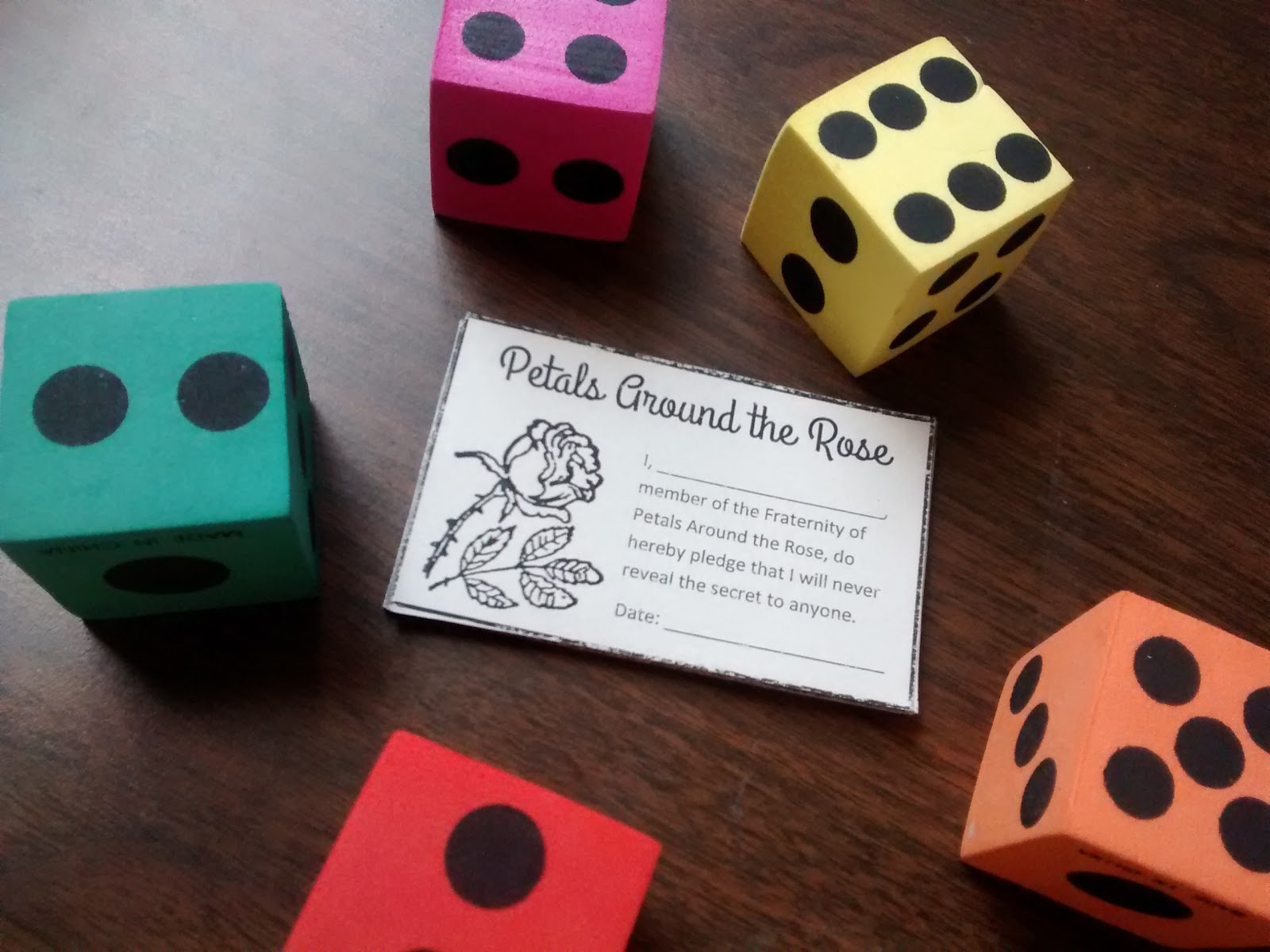
Petals Around the Rose is a classic dice-based brain teaser. It can easily be played by the whole class. Roll five dice. Announce how many petals are around the rose. Students must work to figure out the pattern.
The most important element of the game? You aren’t allowed to talk about how the game works! When a student thinks they have solved the mystery, they prove it to the teacher by correctly announcing the number of petals around the rose for several dice throws in a row.
This one is a memorable one, and it tends to drive students CRAZY!
1-4-5 Square Challenge
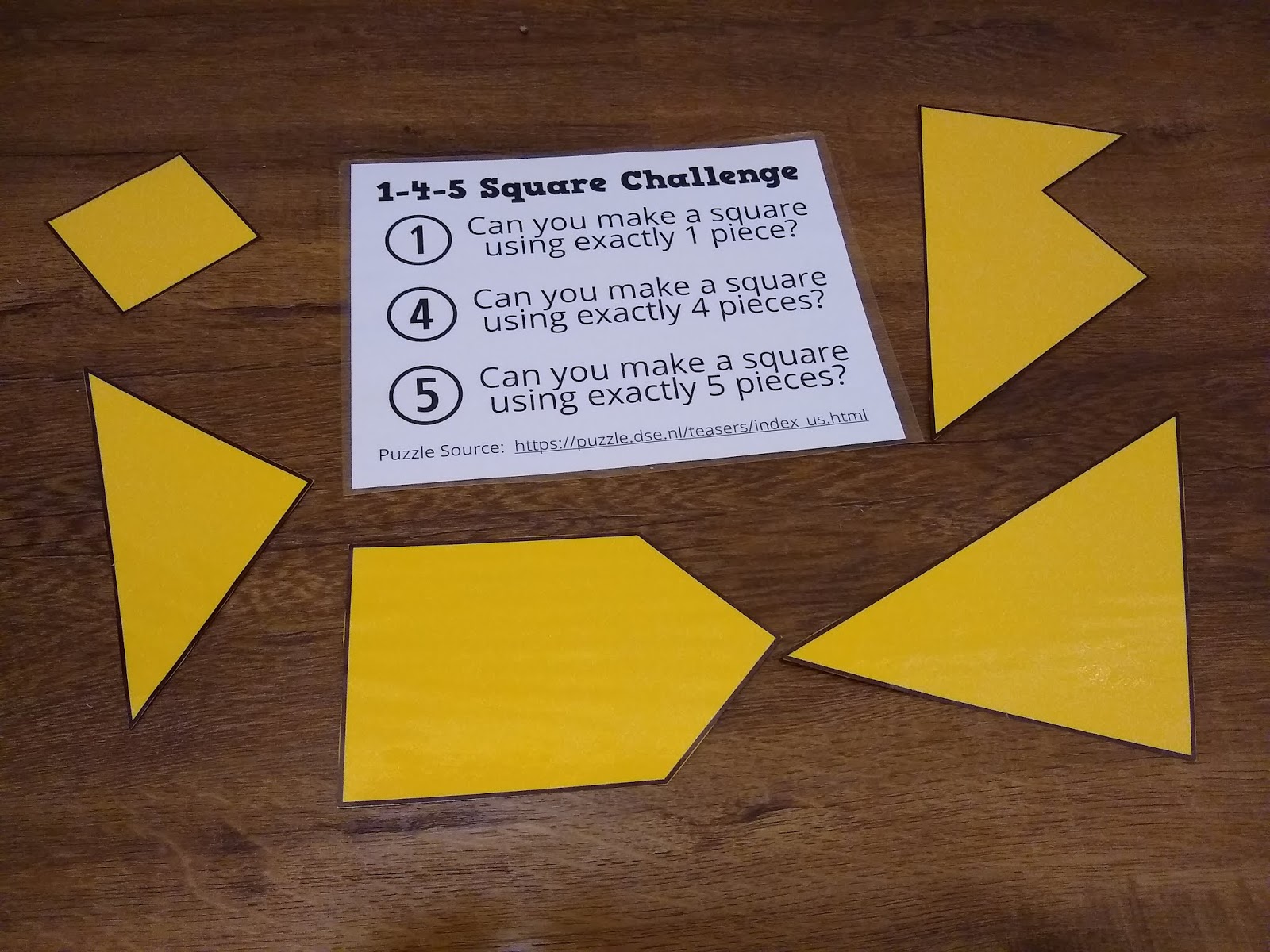
The 1-4-5 Square Challenge is actually three challenges in one. Can you make a square using exactly 1 piece? How about exactly 4 pieces? Finally, can you make a square using exactly 5 pieces?
Students often struggle with the last challenge and claim it to be impossible until someone in the class finds a solution.
31-derful
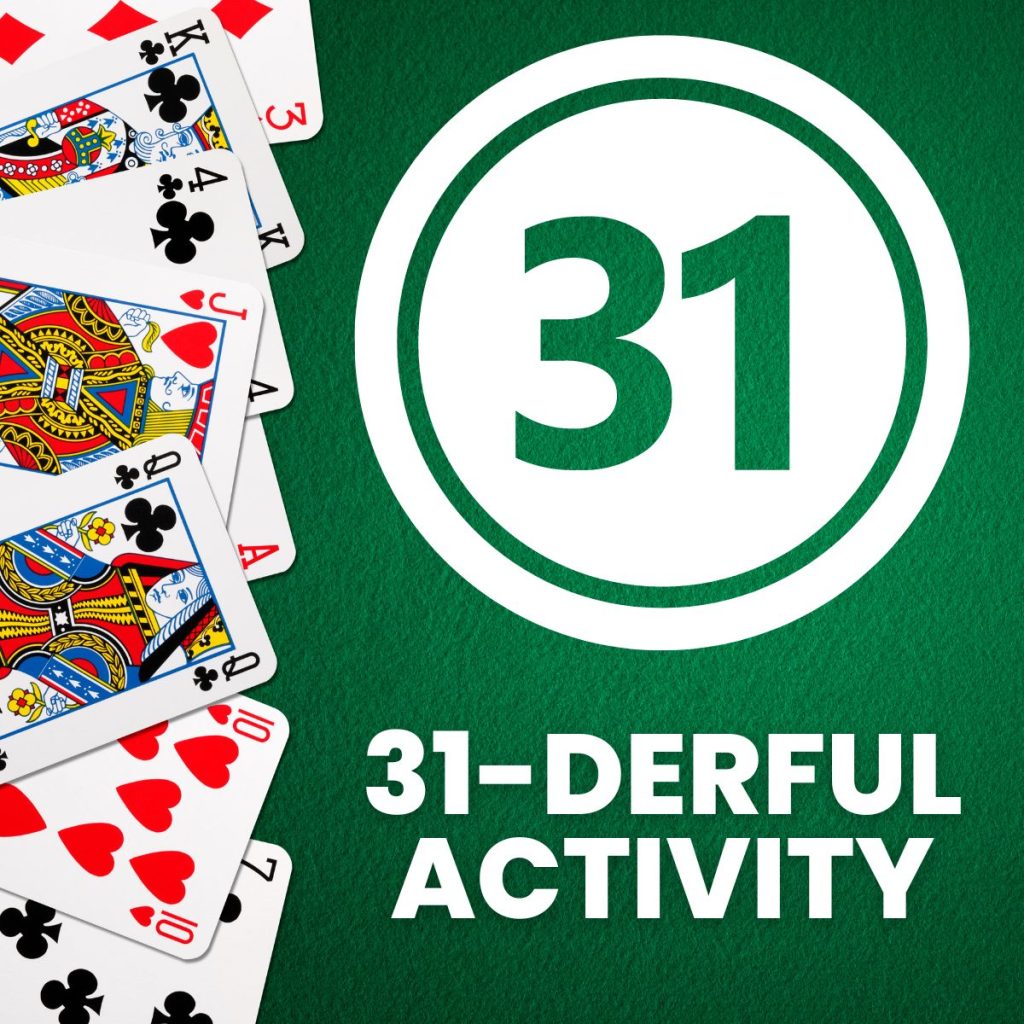
31-derful is a fun, playing card based puzzle. Groups must work together to select 25 cards from a regular deck of playing cards. Then, they must arrange the cards in a 5 x 5 grid so that each row and column sums to 31. Face cards are worth 10. Aces are worth 11.
More Puzzles
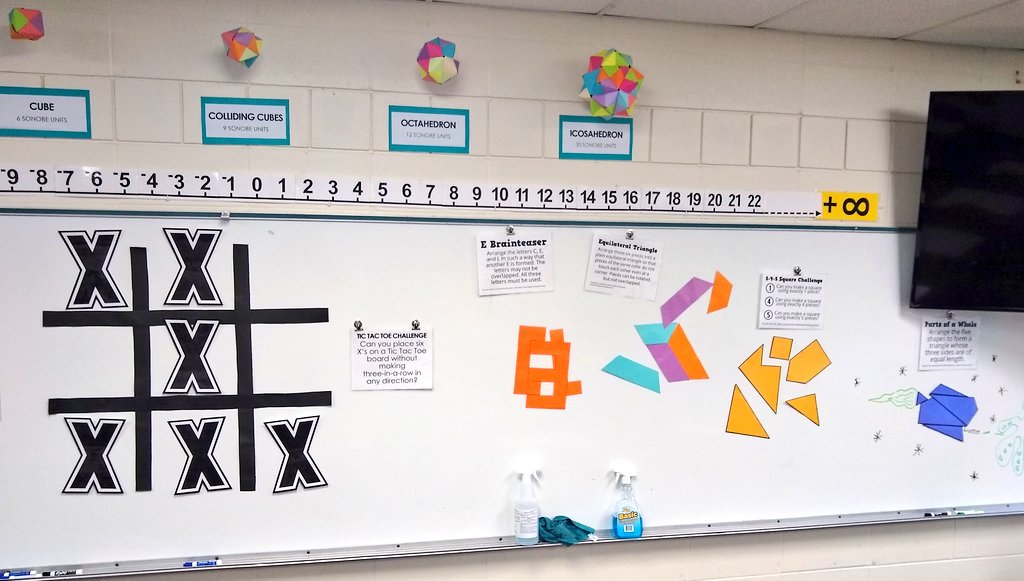
I usually do a puzzle of the week with my students in my classroom. I have collected all of the free puzzles I have created for this challenge on my puzzles page. Any of these puzzles could make a great addition to your first week of school!
Games for the First Week of School
Getting students to play games with one another is one of the best tactics I have in my toolbox for building relationships at the beginning of a new school year. I recommend trying to incorporate at least one game into your lesson plans for the first week of school.
The Train Game
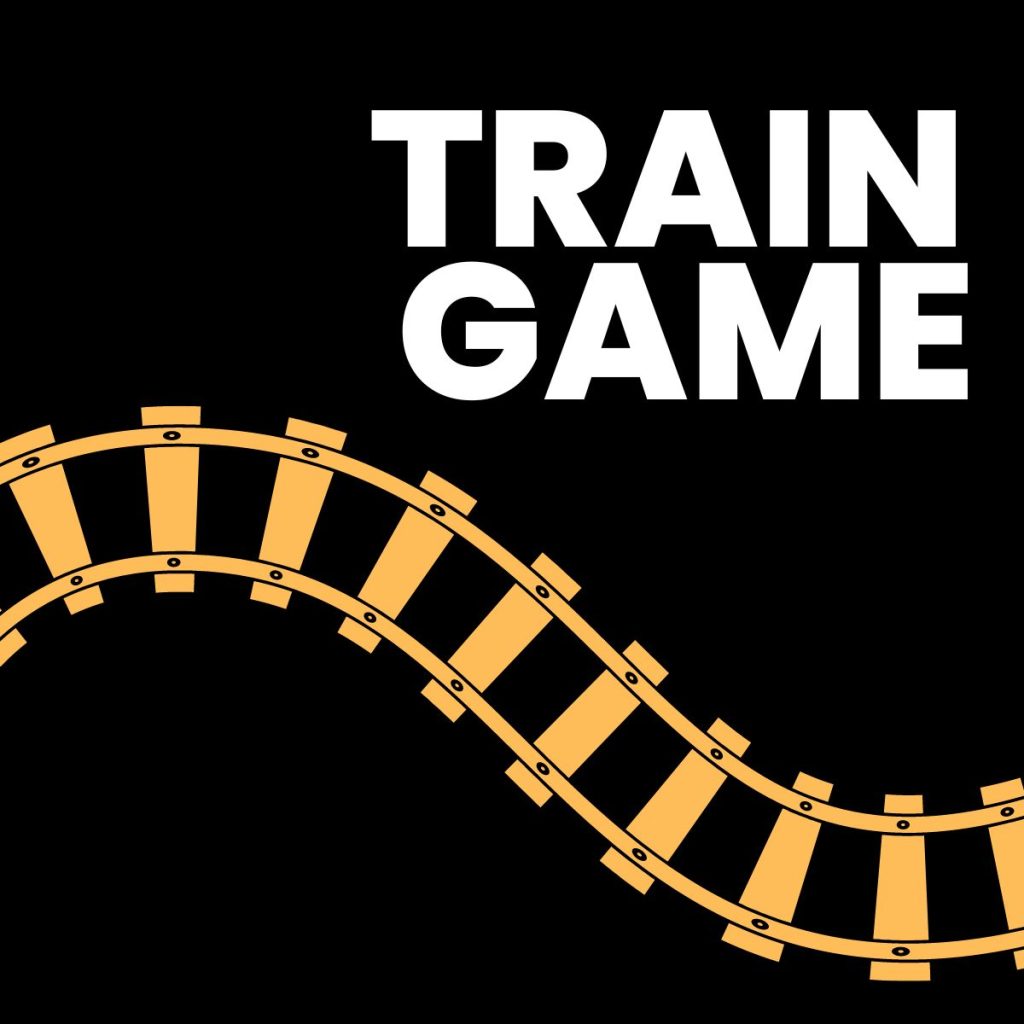
The Train Game is an absolute favorite in my class. As number tiles are drawn from a bag, students must place the numbers in their “train.” Students earn points for placing the numbers in ascending order.
No erasing or changing numbers is allowed after they have been placed. Students are very competitive when it comes to this game, and they always beg to play just one more round.
Ultimate Tic Tac Toe
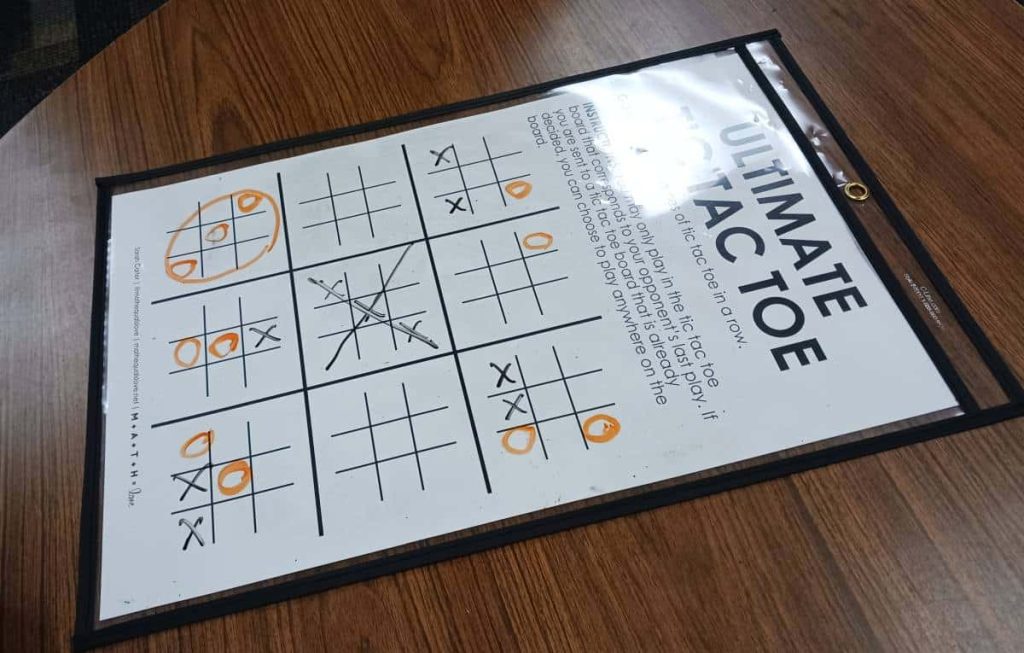
All of your students should know how to play tic tac toe. But have they ever experienced ultimate tic tac toe?
In this fun and challenging variation of tic tac toe, each player’s move is influenced by the previous player’s move. This adds a fun level of strategy and challenge!
Students love playing this and Circle Tic Tac Toe below as a tournament!
Circle Tic Tac Toe
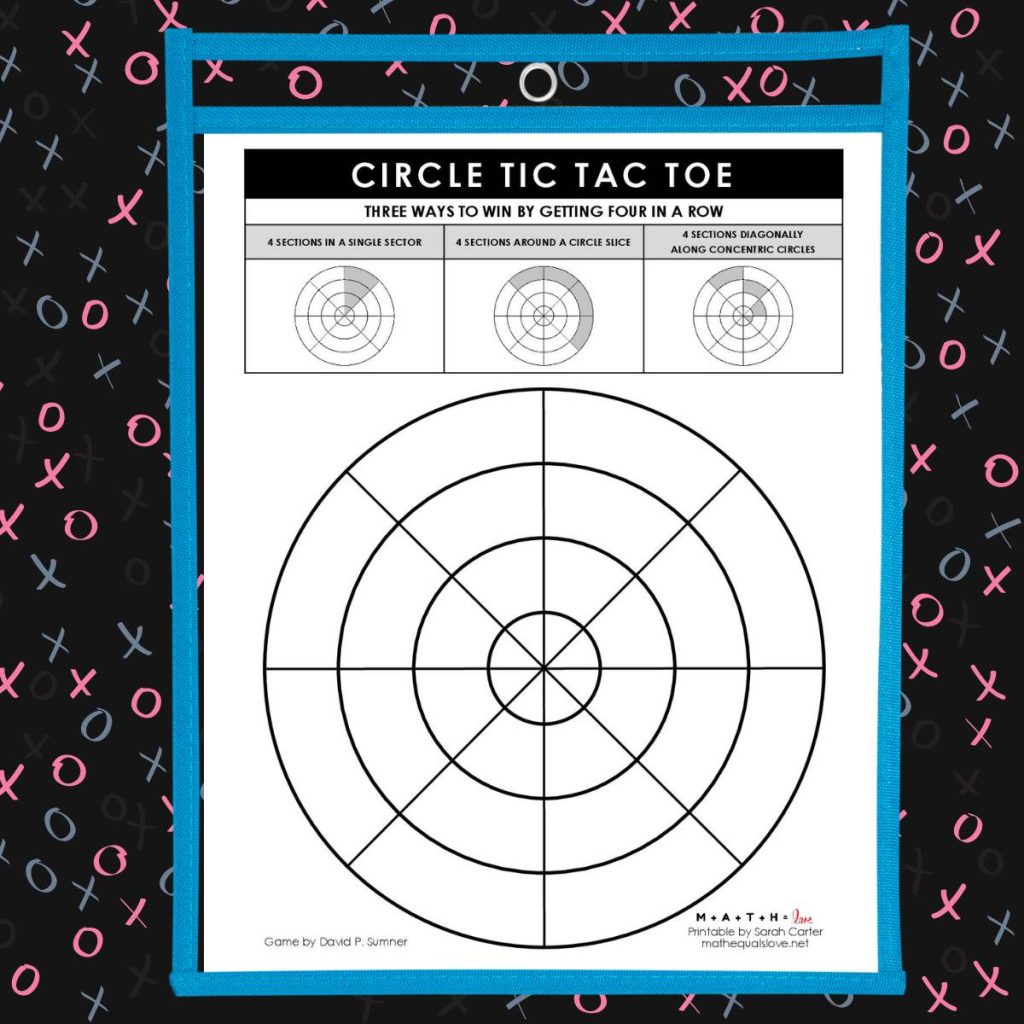
Looking for a tic tac toe variation that requires a bit less time? Then, Circle Tic Tac Toe is where it’s at. I got a message from a teacher the other day that his students refused to stop playing!
Instead of getting three in a row, you have to get four in a row. But there is an added twist of having three different ways to win on a circular grid. Print some of these grids off and put them in dry erase pockets in case you have an extra five or ten minutes to spare during the rest of your first week activities.
Number Contests for the First Day of School

Need a first day of school activity for your math class? These fun number contests will engage your students, force them to reason and collaborate together, and add a fun dose of competition to the first day.
Thirteen Game
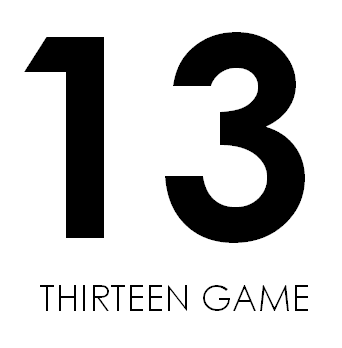
The Thirteen Game is easy to explain to students, and it makes a great time-filling activity for the first week of school. It requires absolutely no supplies or preparation, so it’s a great activity to have in your back pocket.
Students stand in a circle. Choose someone to start. Each player can choose to say either one, two, or three numbers on their turn. Go around the circle counting up from one.
Whoever is forced to say the number thirteen is out. Play continues until only one person remains.
My students get super competitive with this game, and they beg to play it at least once a week for the entire school year. Sometimes they even start up a game by themselves!
My husband tried this game with his middle schoolers, and they absolutely loved it.
Count to Ten Game
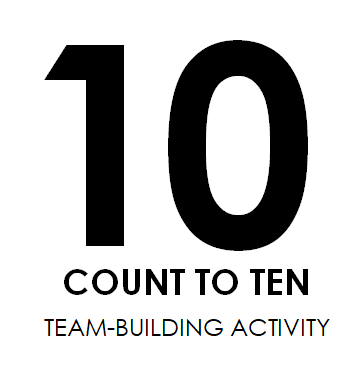
Count to Ten is another great no-prep game that can be played as a moment’s notice. Instruct students that they must count to ten as a class. Talking (other than saying numbers) and hand signals are off-limits.
Only one person may say each number, and no person may say two numbers in a row. If at any time two or more students yell out the same number, the class must start over again at 1.
Students find this activity really hard the first time they do it. It can sometimes take ten or more minutes for a class to get to ten.
Left Center Right Dice Game
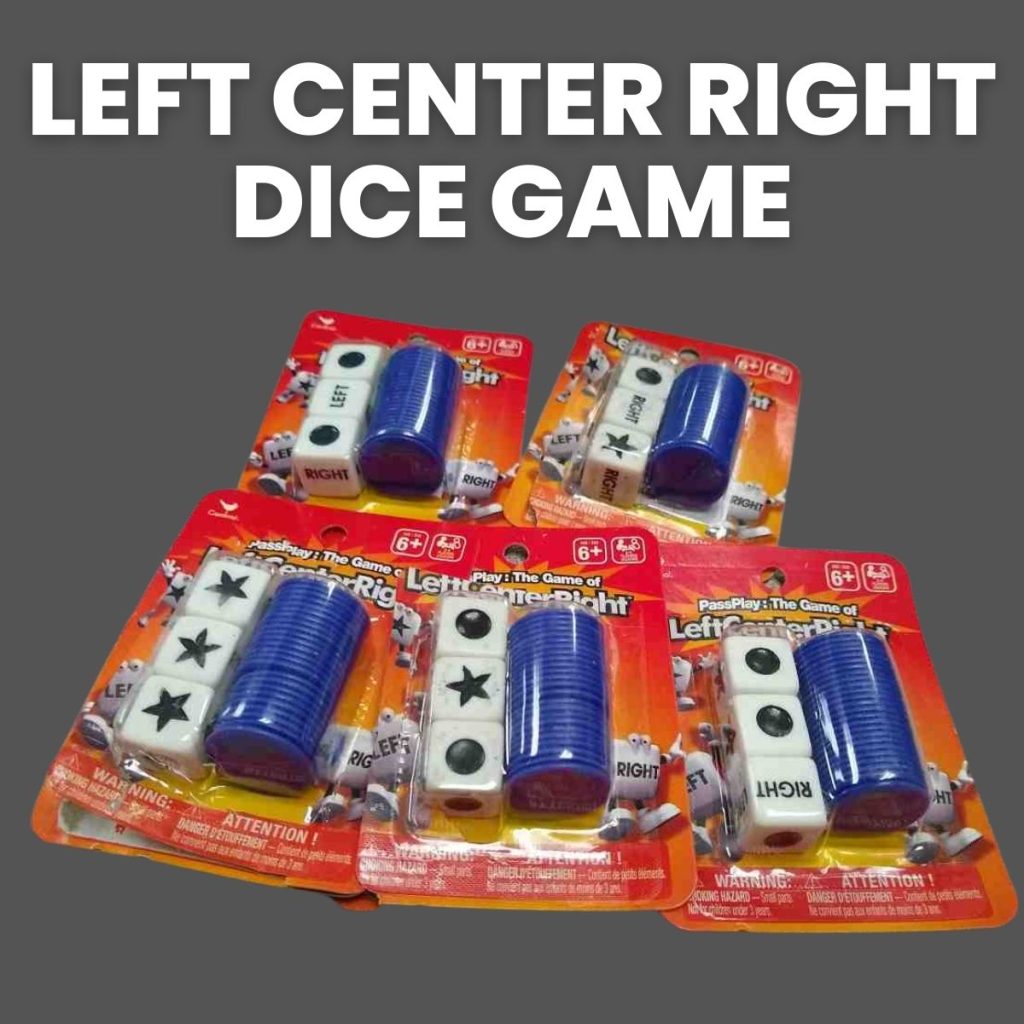
If you have a copy of the Left Center Right dice game, it can make a great activity for the first week of school. A former coworker of mine would play the game with starbursts or wrapped candy instead of the plastic discs.
I actually saw that Dollar Tree had copies of Left Center Right in the toy section recently! Usually, I have more students than the discs in the game allows, so I use bingo chips.
My favorite thing about Left Center Right is that even if you’re out of the game, you can still end up winning! It’s also great for discussing statistics and probability.
Sprouts
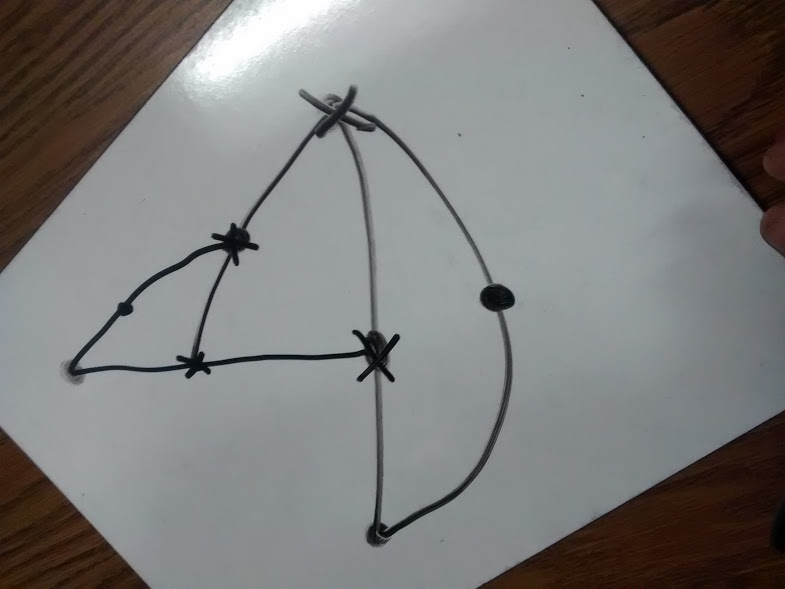
Sprouts is a mathematical game that is easy to teach students. It only requires something to write with and something to write on. I love using dry erase boards to teach students how to play Sprouts in pairs.
The basic idea of the game is to make it impossible for your opponent to draw a line. The last person to draw a line is the winner.
There are more rules, of course. You can read about them here. A Sprouts Tournament can be a fun addition to the first week of school after you teach students to play Sprouts in pairs.
Make A Million Game
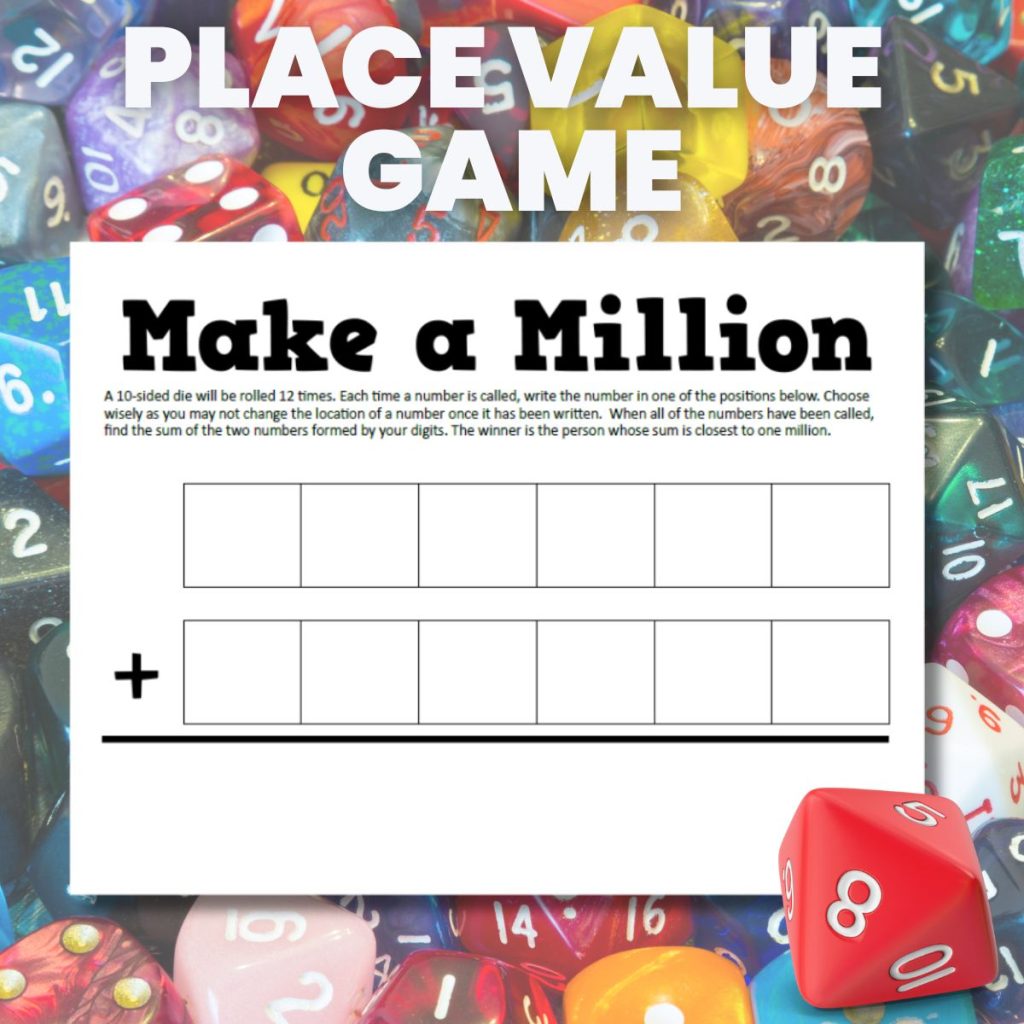
In Make a Million, a ten-sided die is rolled twelve times. After each roll, students must place the number rolled in their make a million template. When finished, students sum the two numbers they have created to see how close they got to a million. I usually give a piece of candy to the student who gets the closest.
Usually, the first time we play this, my students place the numbers almost randomly. After seeing how things play out, it is exciting to see how their strategies start to change!
Traffic Lights Game
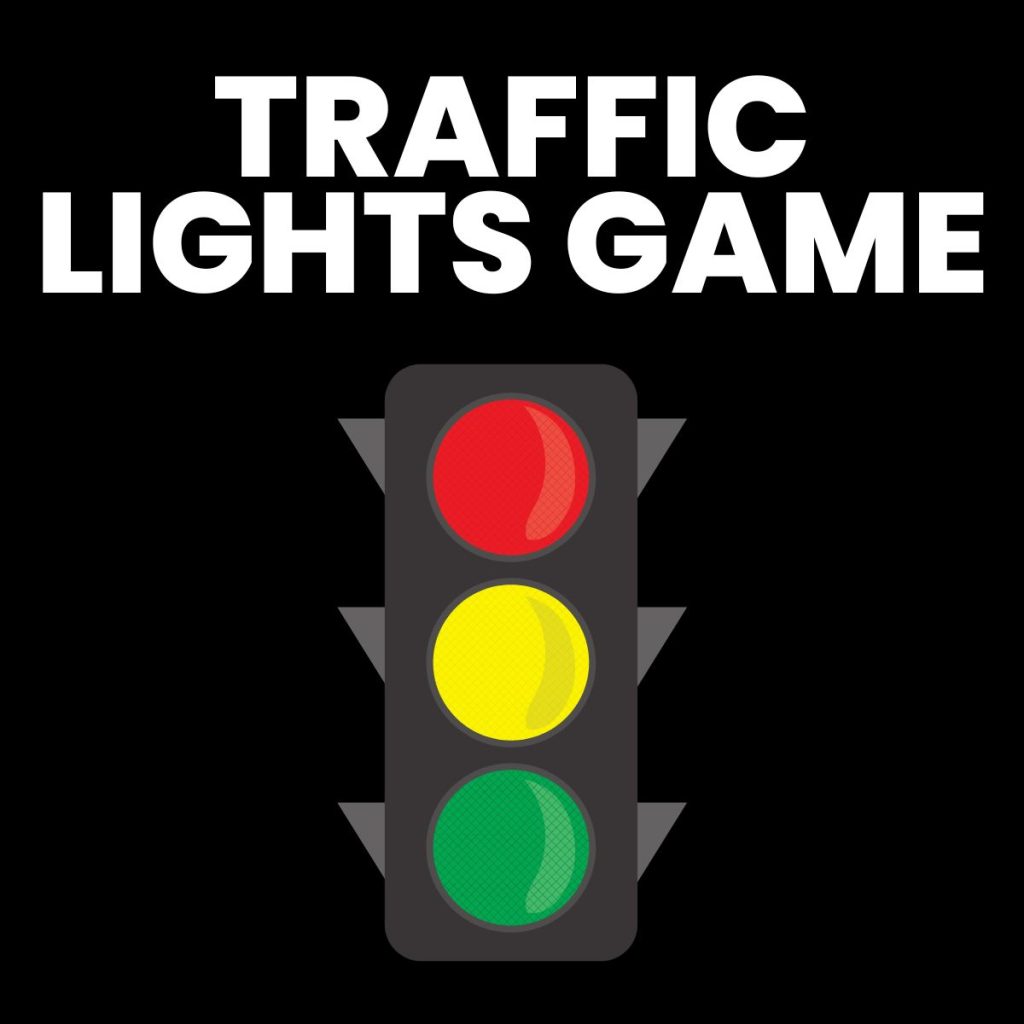
The Traffic Lights Game is easy to teach but hard to master. You will need printable game boards and traffic light colored bingo chips. Students compete to get three-in-a-row of a single color. On any turn, you may place a red chip on an empty square, switch a red chip to a yellow chip, or switch a yellow chip to a green chip.
Such a great strategy game! I have often modeled how to play on the SMARTBoard with my students before I leave them to play on their own.
Witzzle
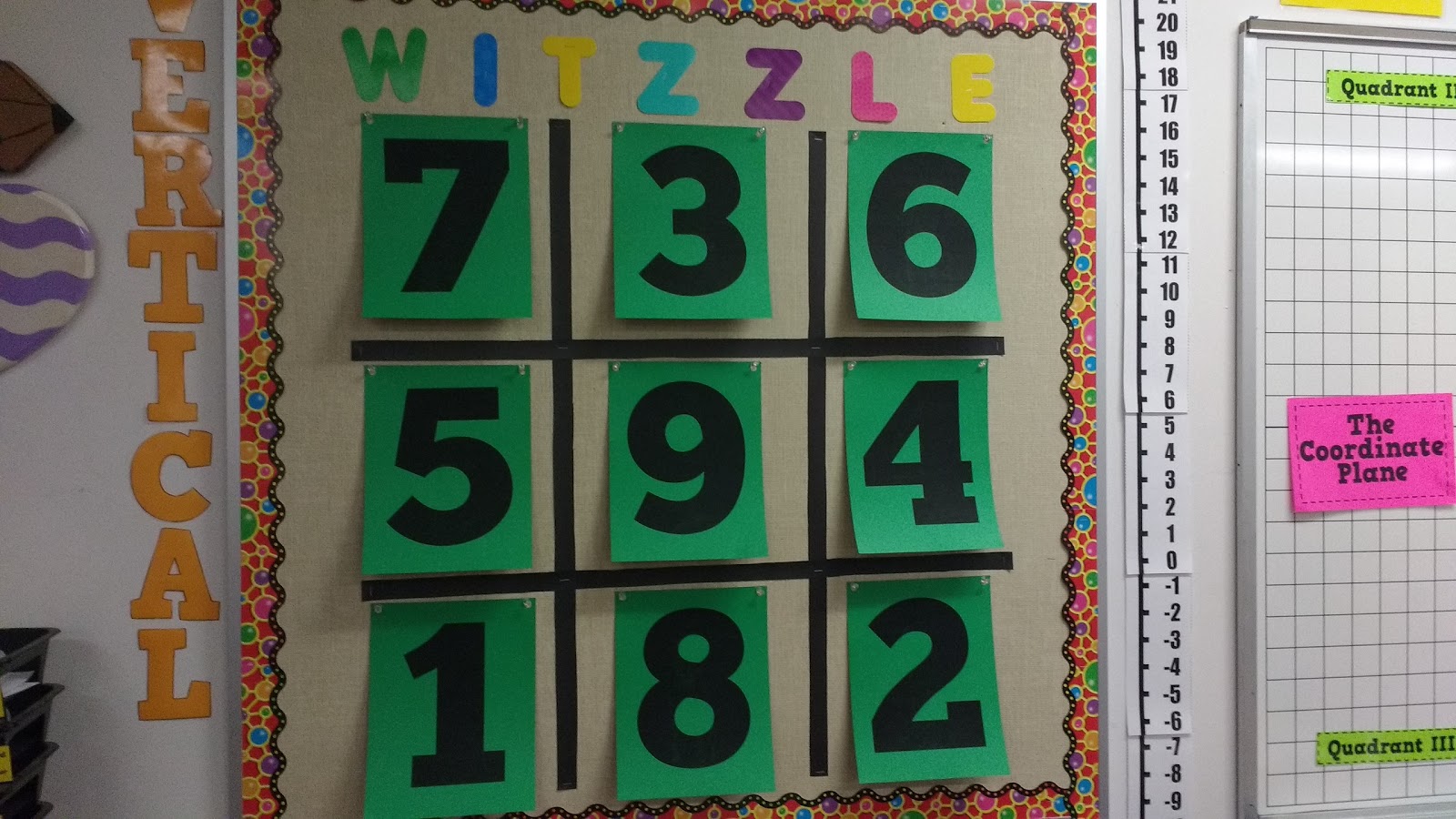
Witzzle is a card/dice game that gives so many opportunities for practicing mental math and the order of operations in the math classroom. I like to create a Witzzle Bulletin Board in my classroom and introduce students to the game during the first week of school.
Once students know the rules, I can easily use it as an early-finisher activity or brain break throughout the rest of the school year.
How do you play Witzzle? A target number is announced by the teacher. Students must find a row, column, or diagonal of numbers that can be used to make the target. Numbers can be added, subtracted, multiplied, or divided in any order.
The cards in a witzzle game are specially designed so that every number from -12 to 36 can be achieved.
The Game of SET
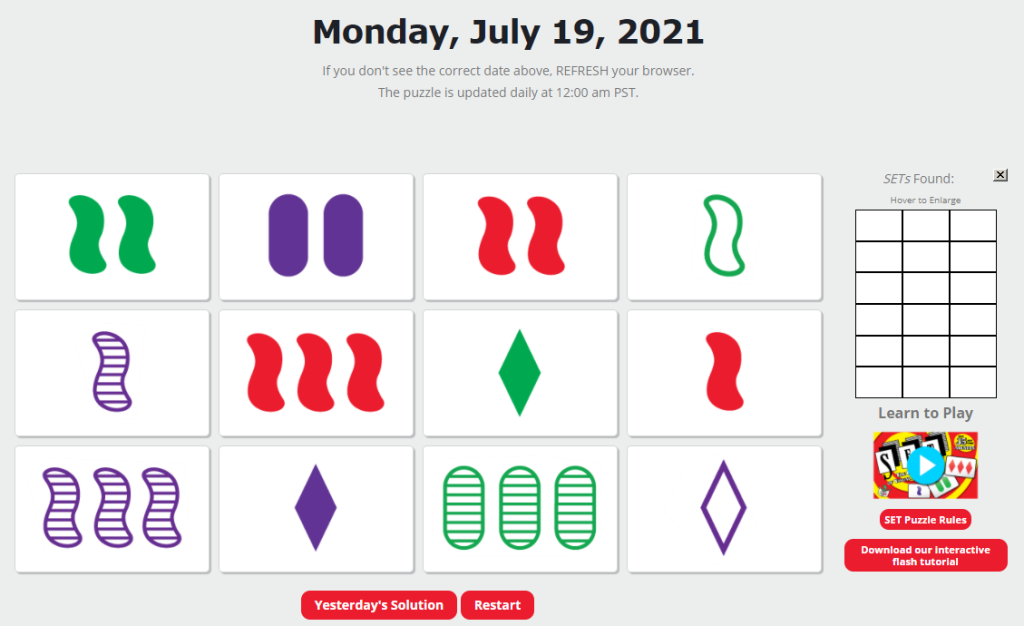
Another favorite mathematical game that I often like to introduce students to at the beginning of the year is the game of SET. SET is a card game that can be played alone or with a group that relies on pattern recognition.
I have had some students become super obsessed with the SET game! One year, I had a student beg to take a deck home over the weekend so she could play with her mom. I find that if I teach students how to play SET during the first week of school that it makes a great warm-up or time-filler activity throughout the rest of the school year.
More Games
Here are several other games that would make a great addition to your first week of school (or any time throughout the school year!)
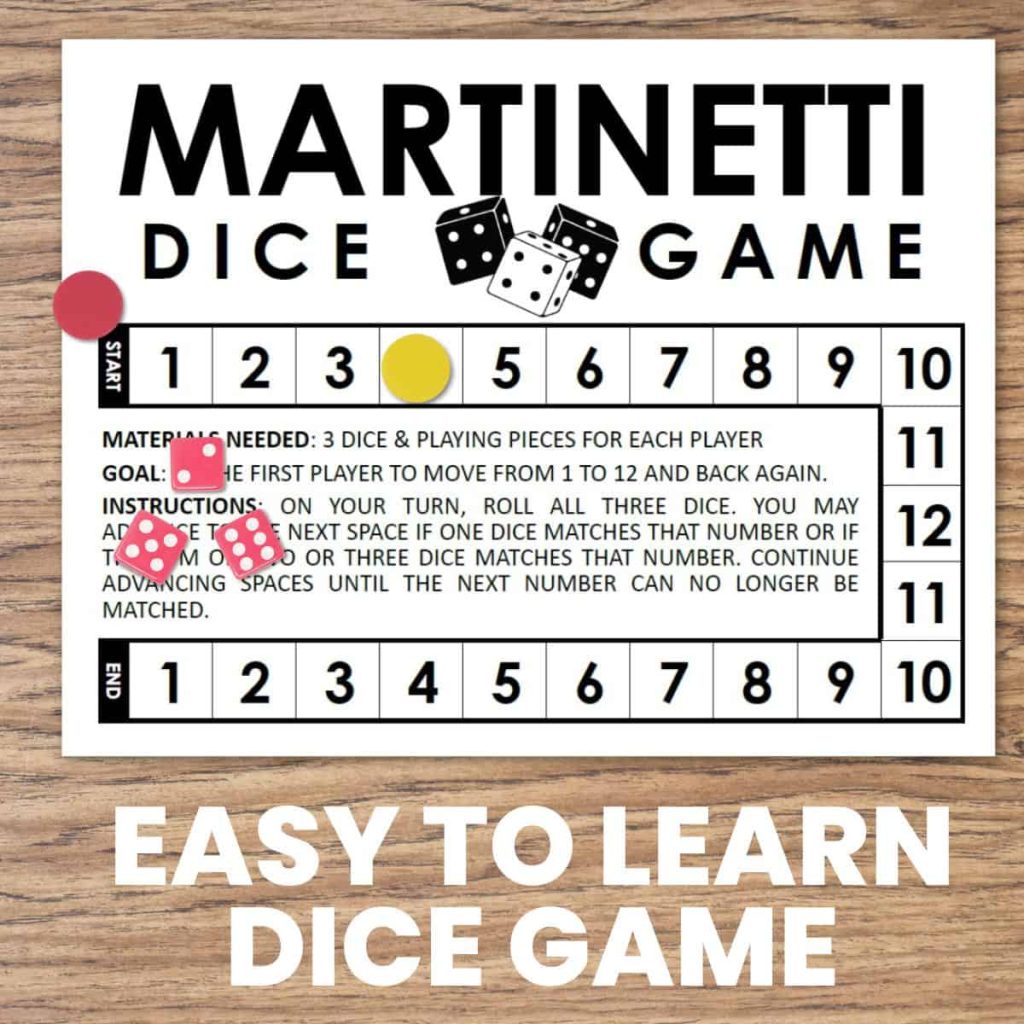
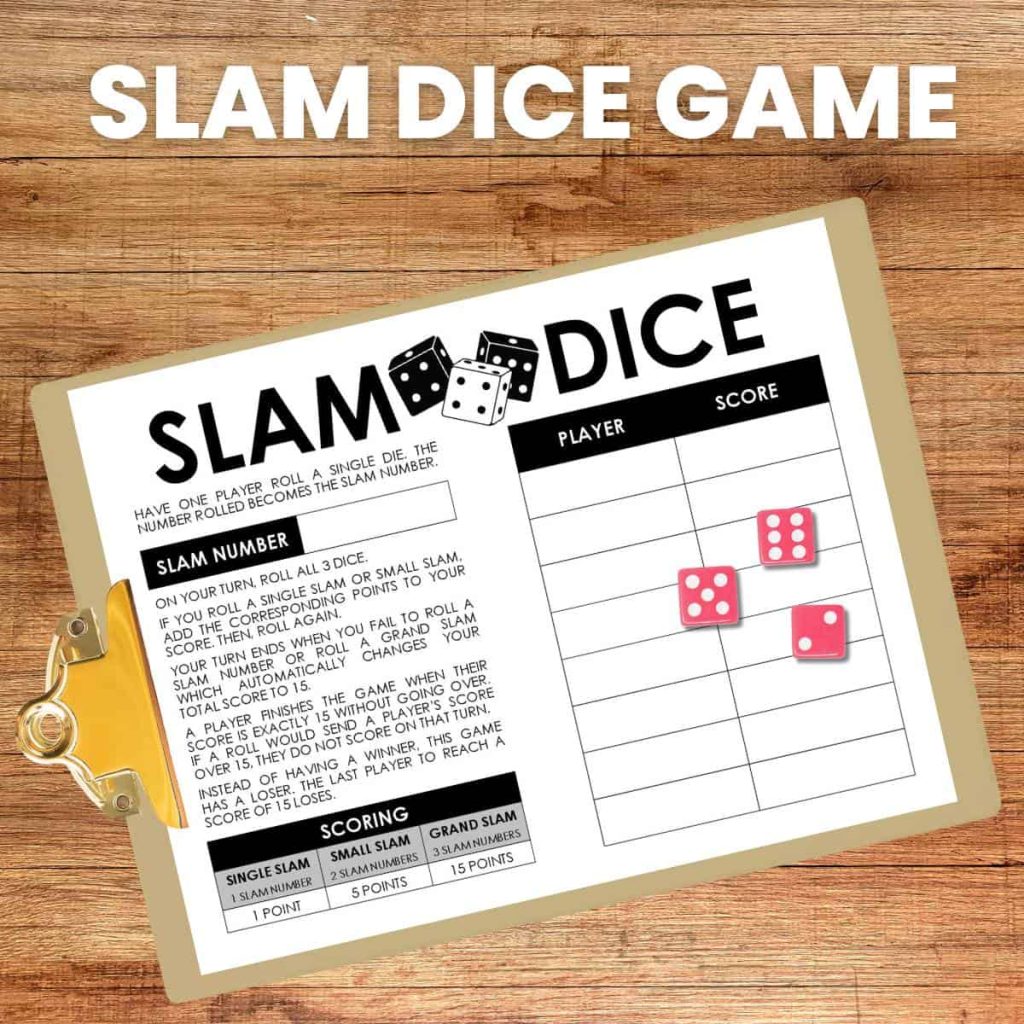
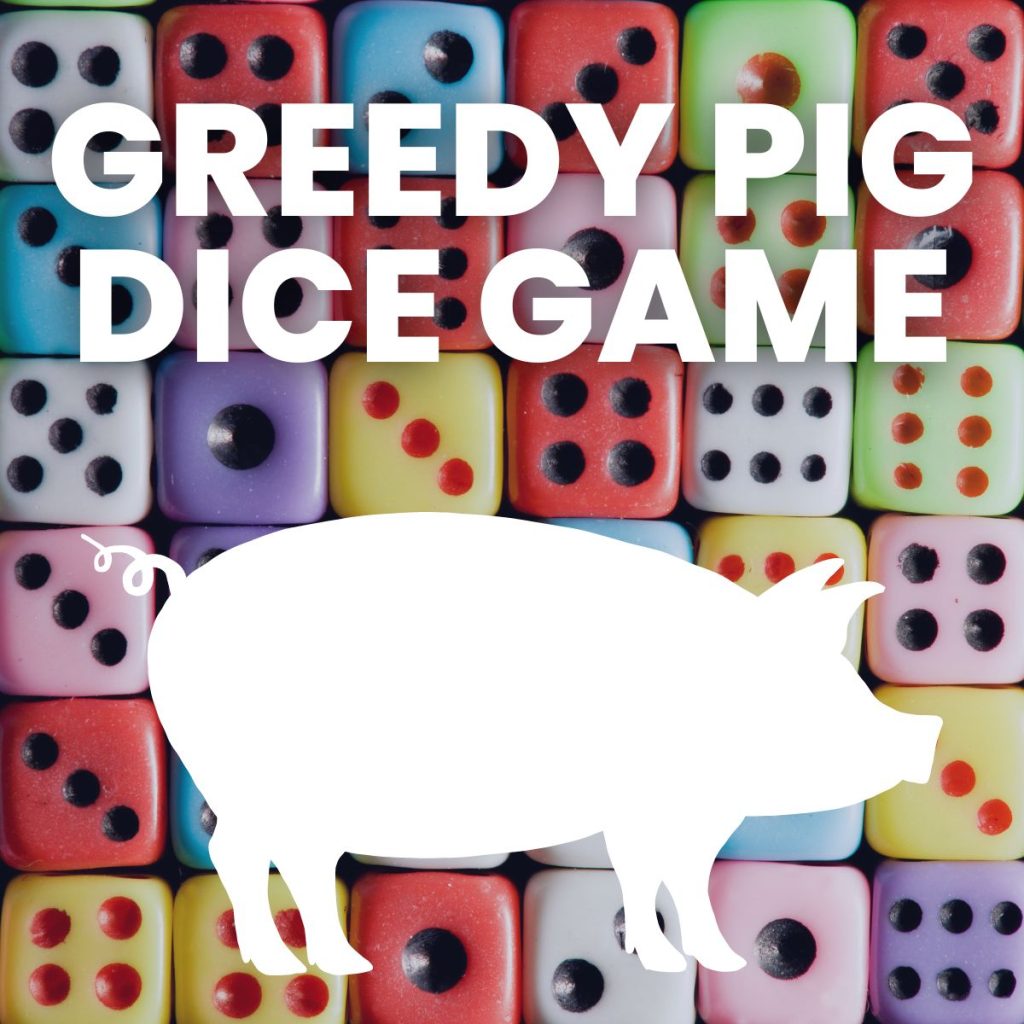
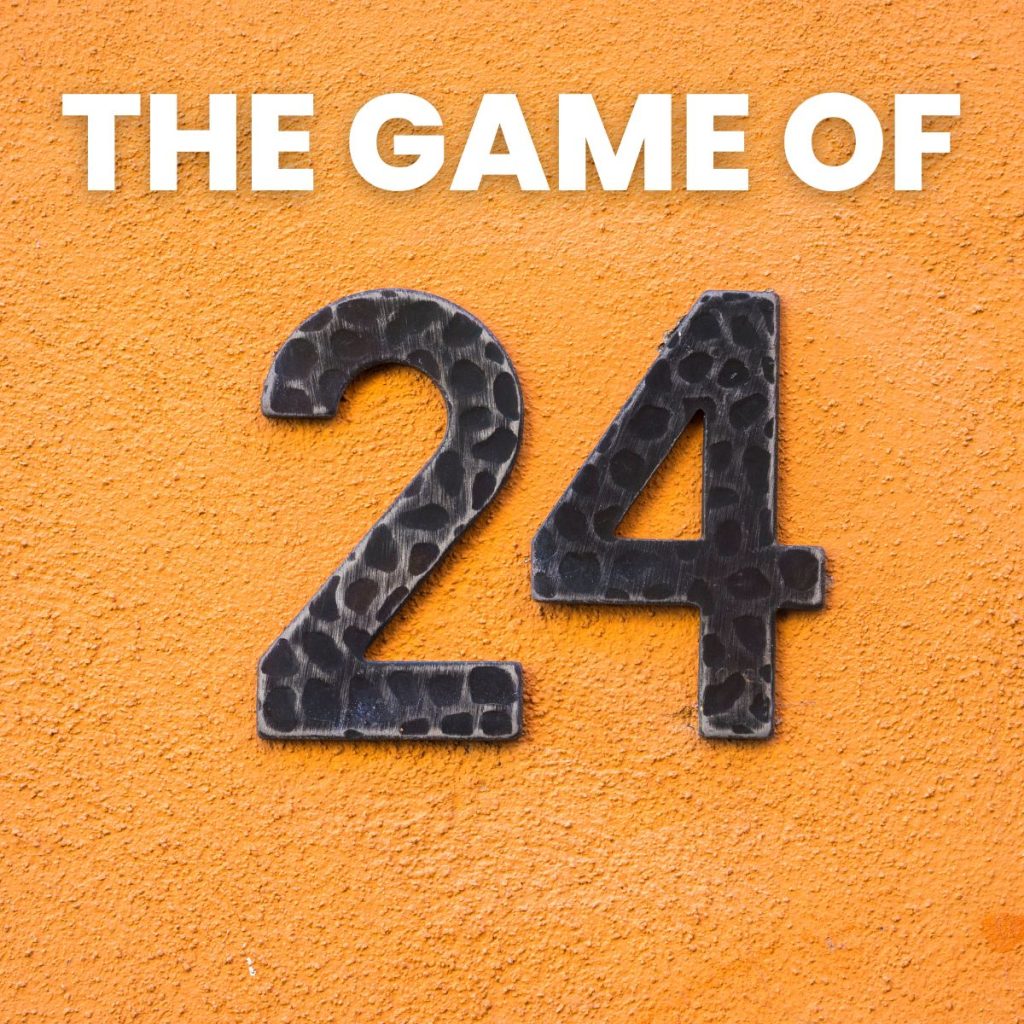
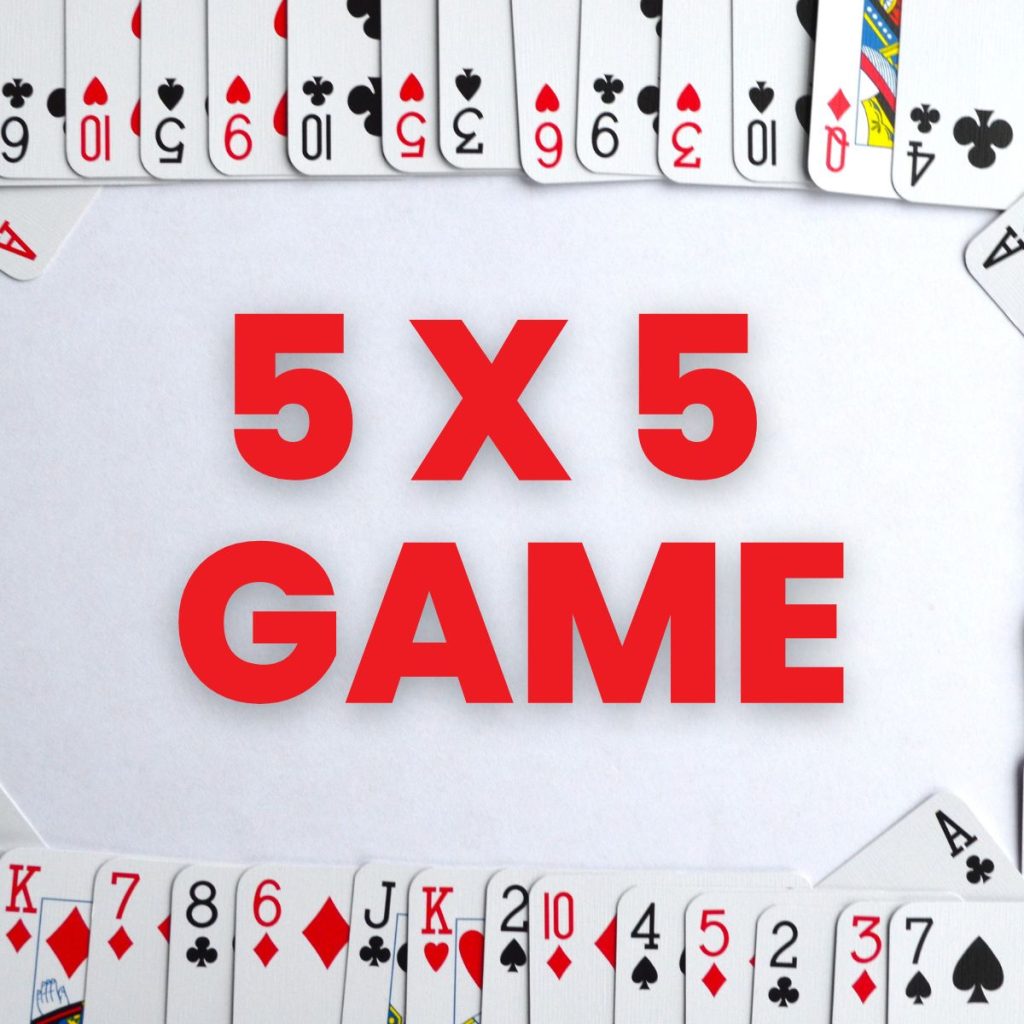
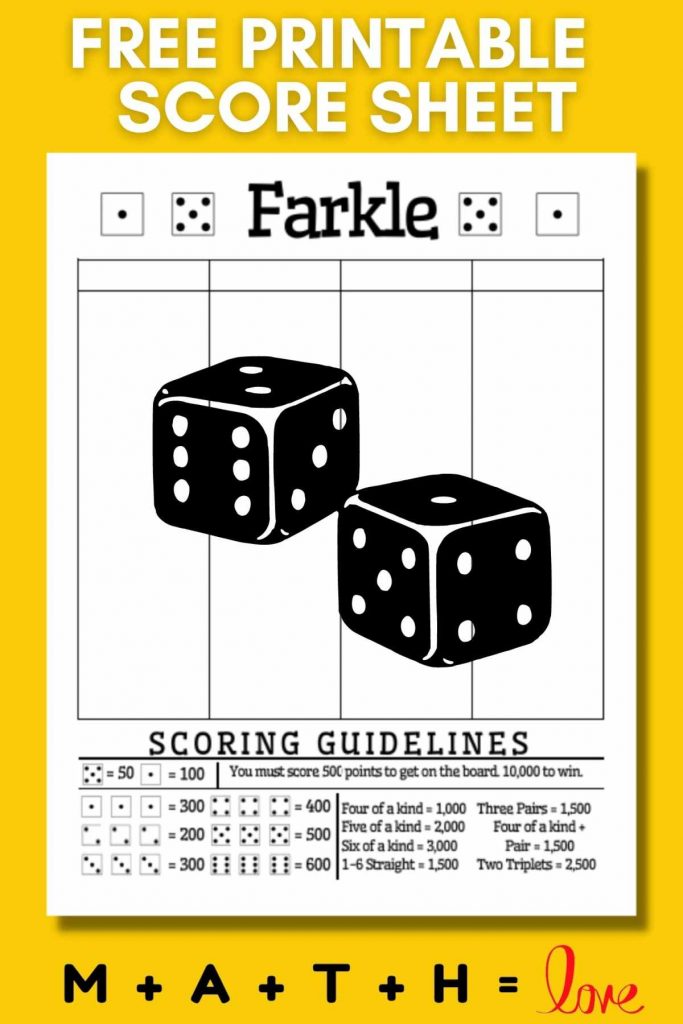
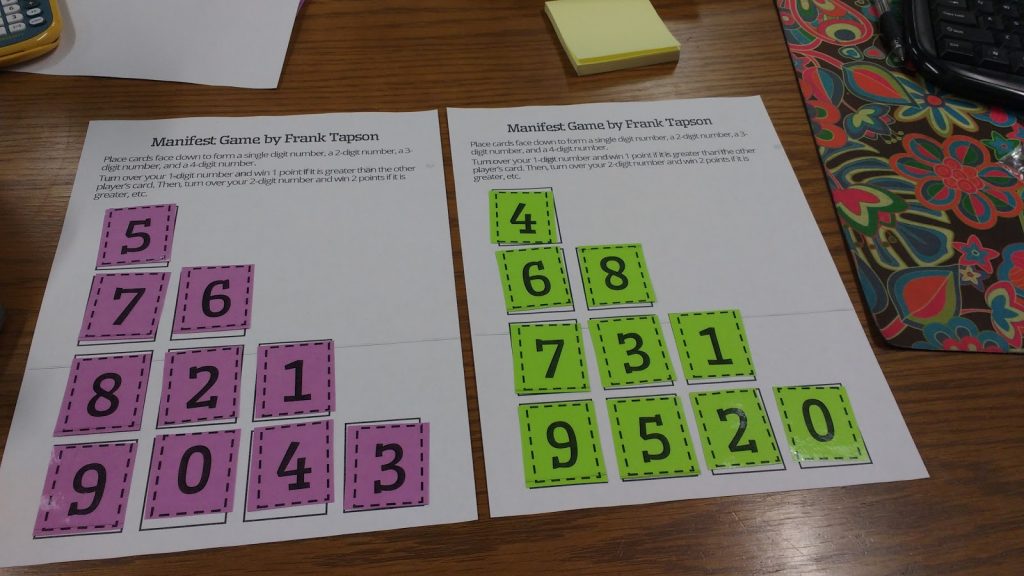
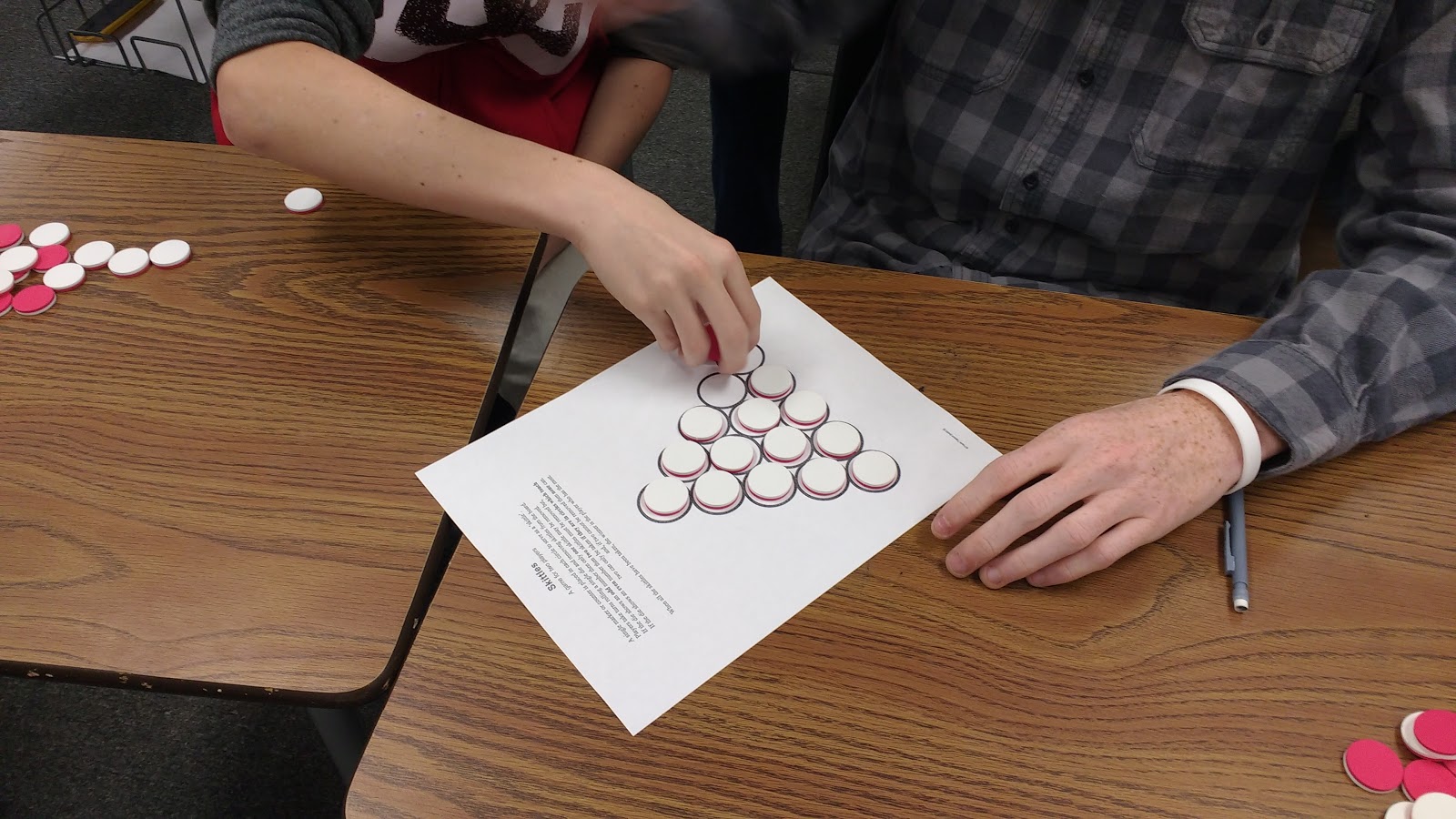
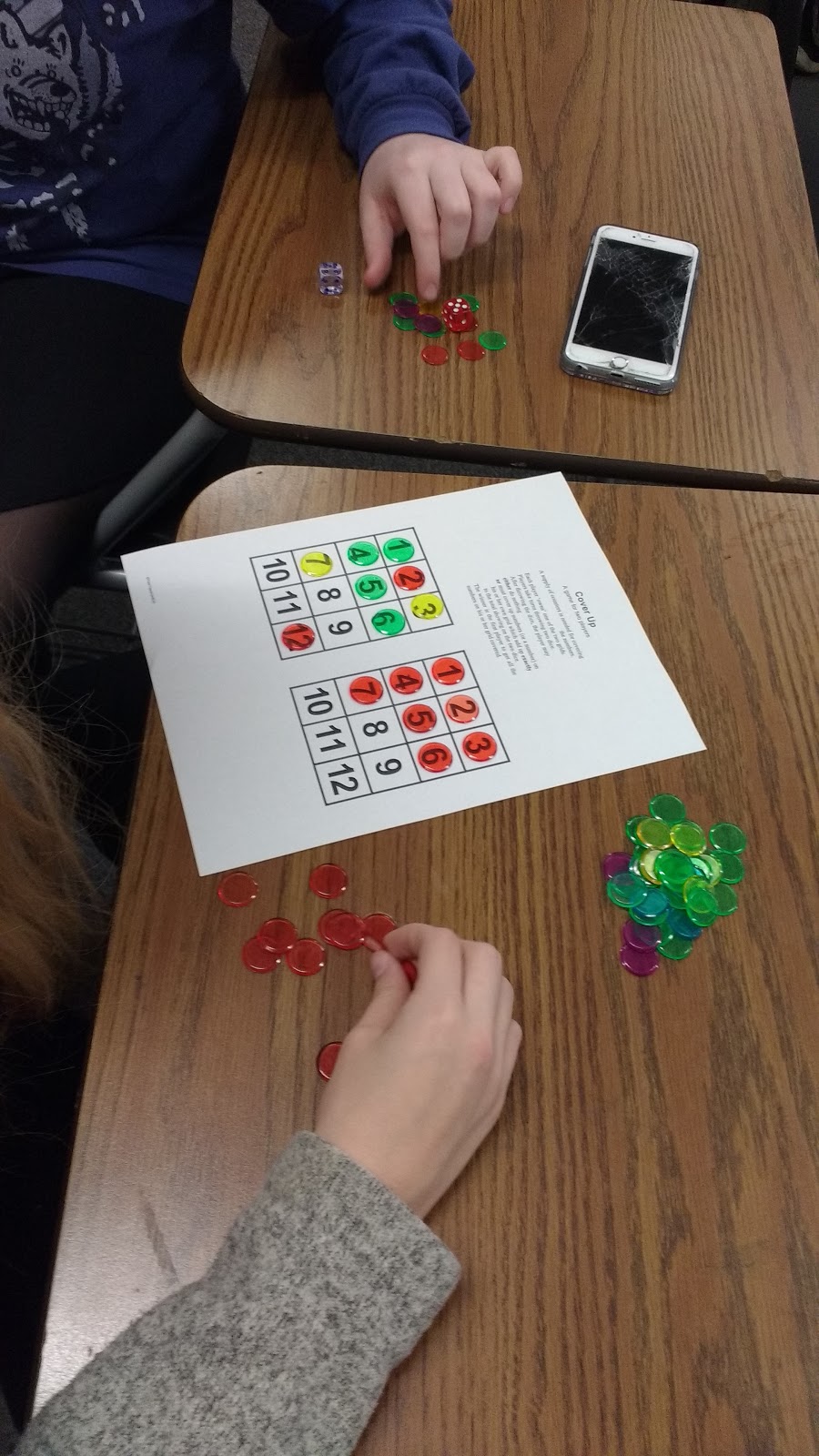
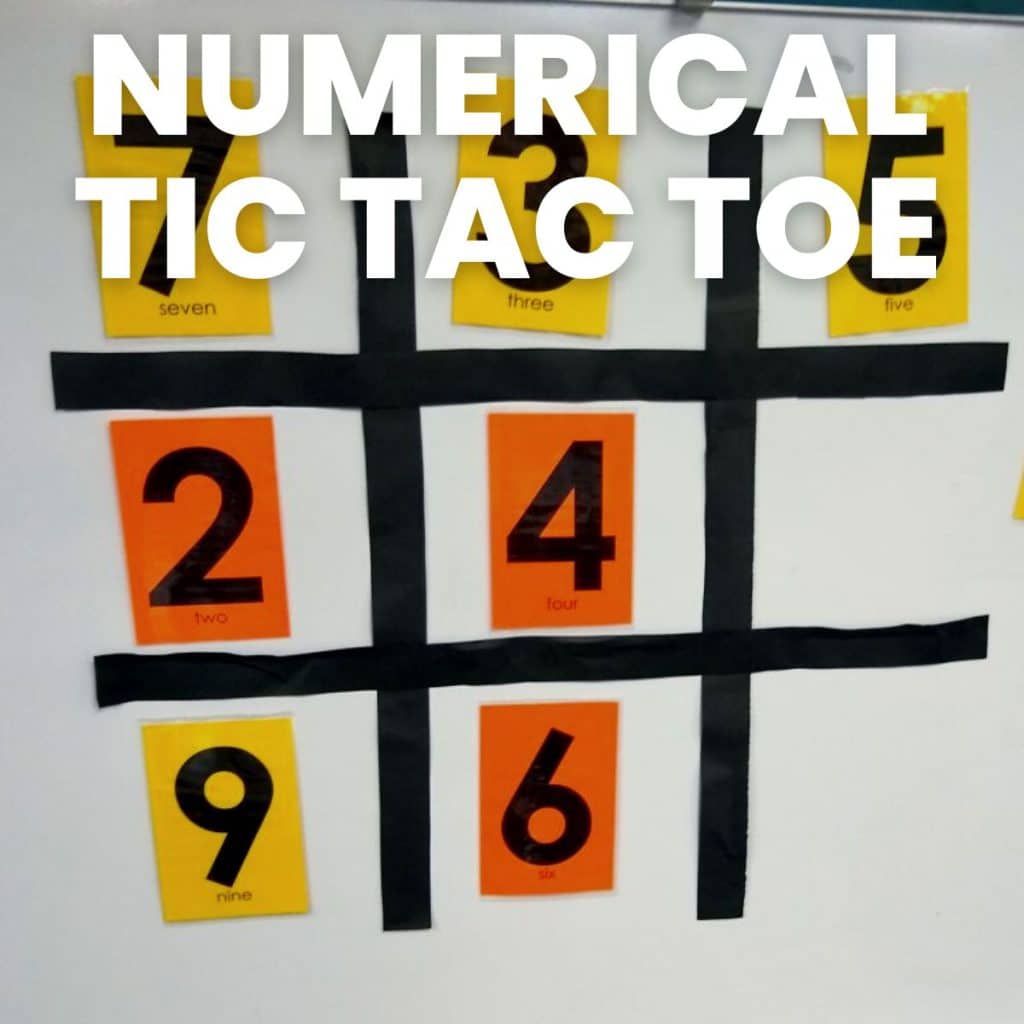
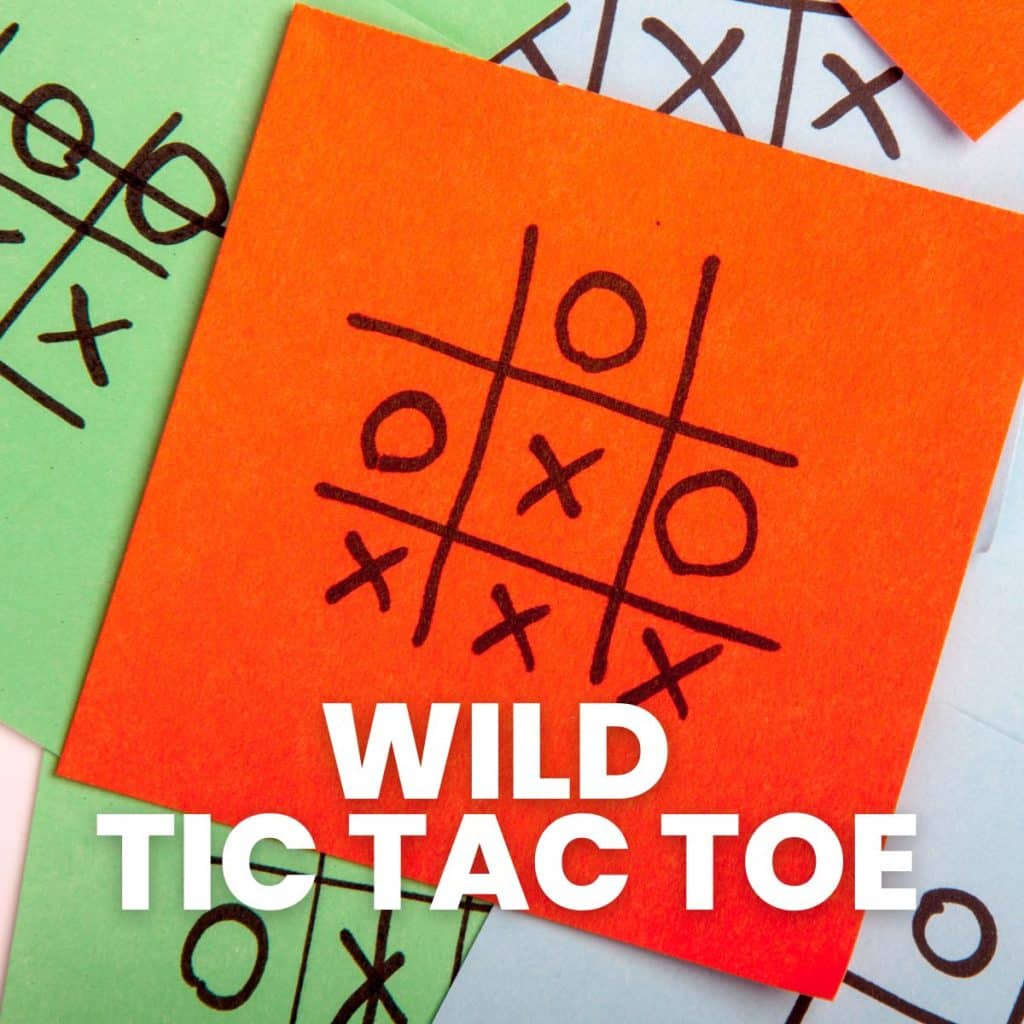
Engineering and Building Challenges for the First Week of School
Cup Stacking Challenge
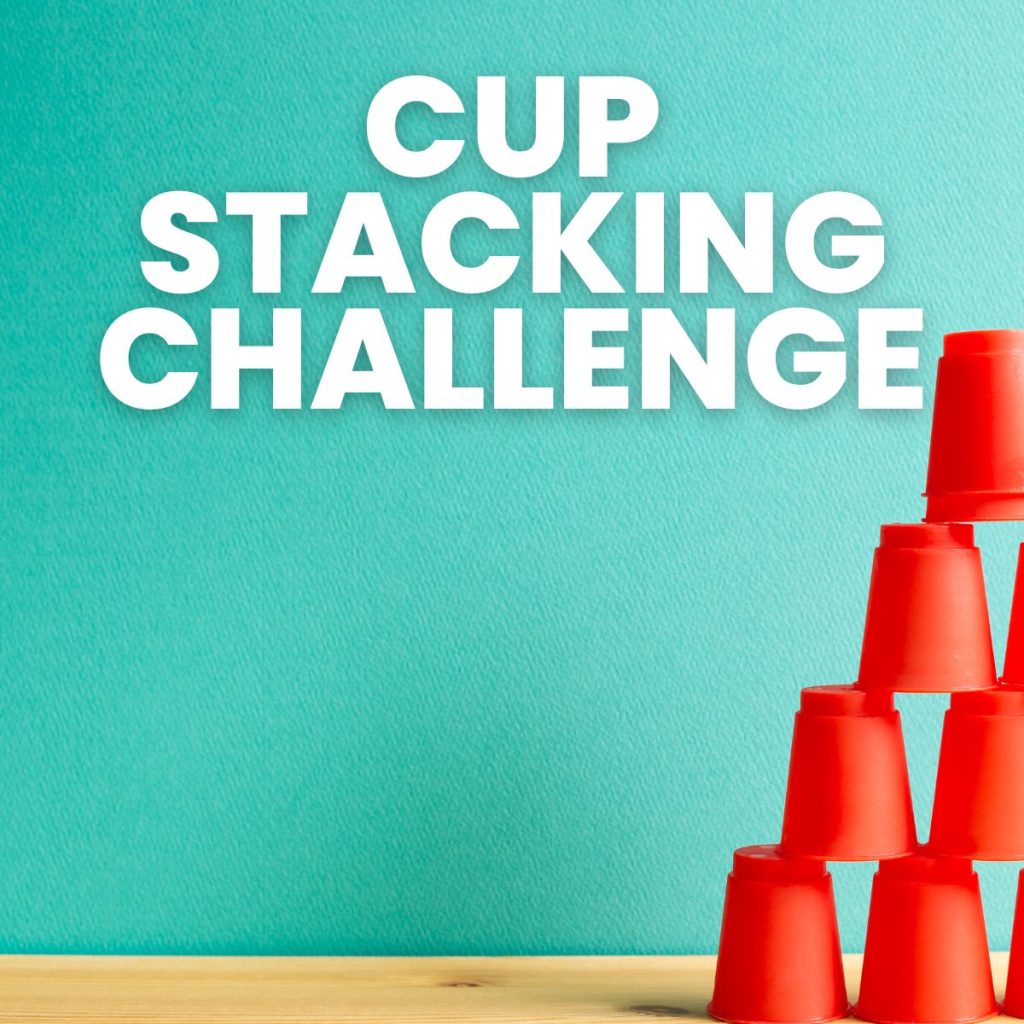
This cup stacking challenge uses everyday materials (string, cups, and a rubber band for each group) and really encourages students to communicate and work together to build each structure.
Each student can only touch their individual string which is tied to the group’s rubber band which is used to move the cups in the challenge. Be prepared for a room full of laughter as students experiment!
Marshmallow Challenge
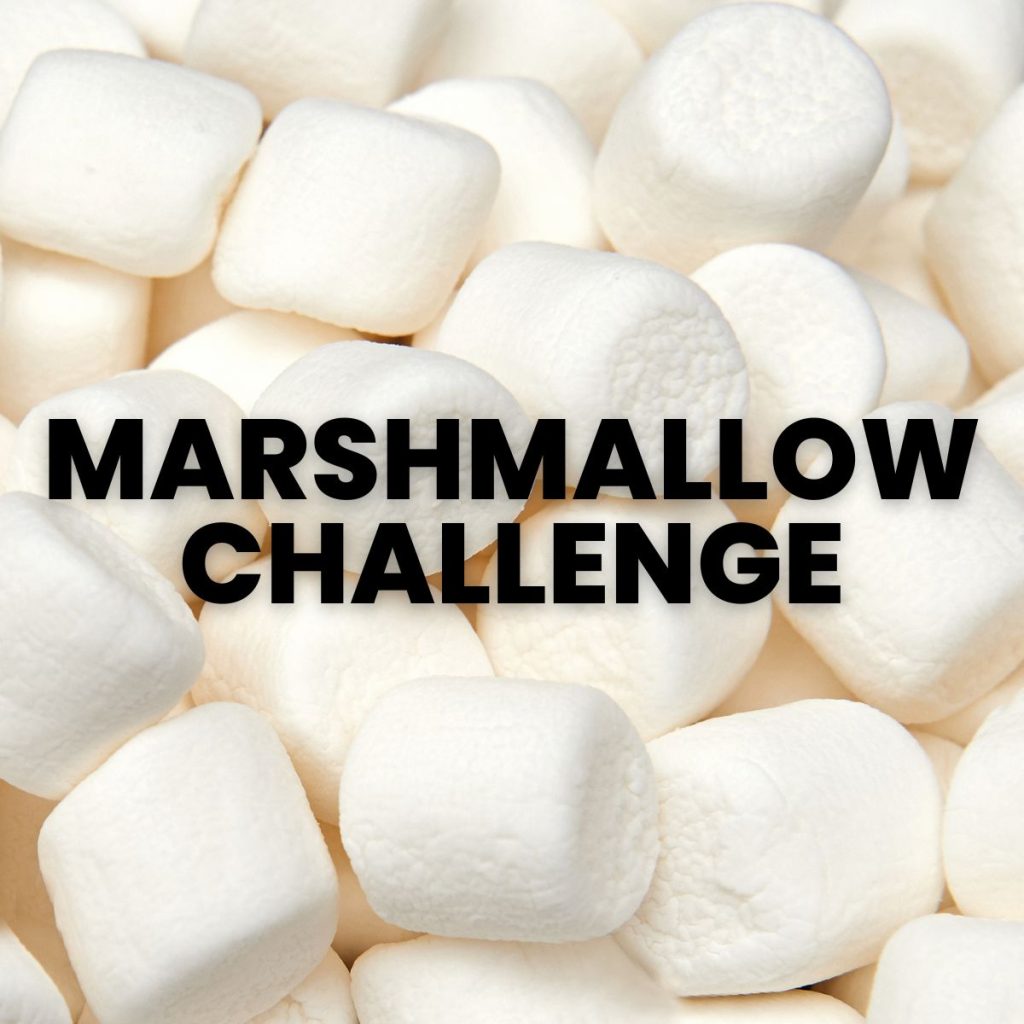
In the Marshmallow Challenge, small groups compete to see who can build the tallest tower using a limited amount of dried spaghetti, tape, and string. The completed tower must be free-standing and support a marshmallow at the top of the tower.
Impossible Domino Bridge
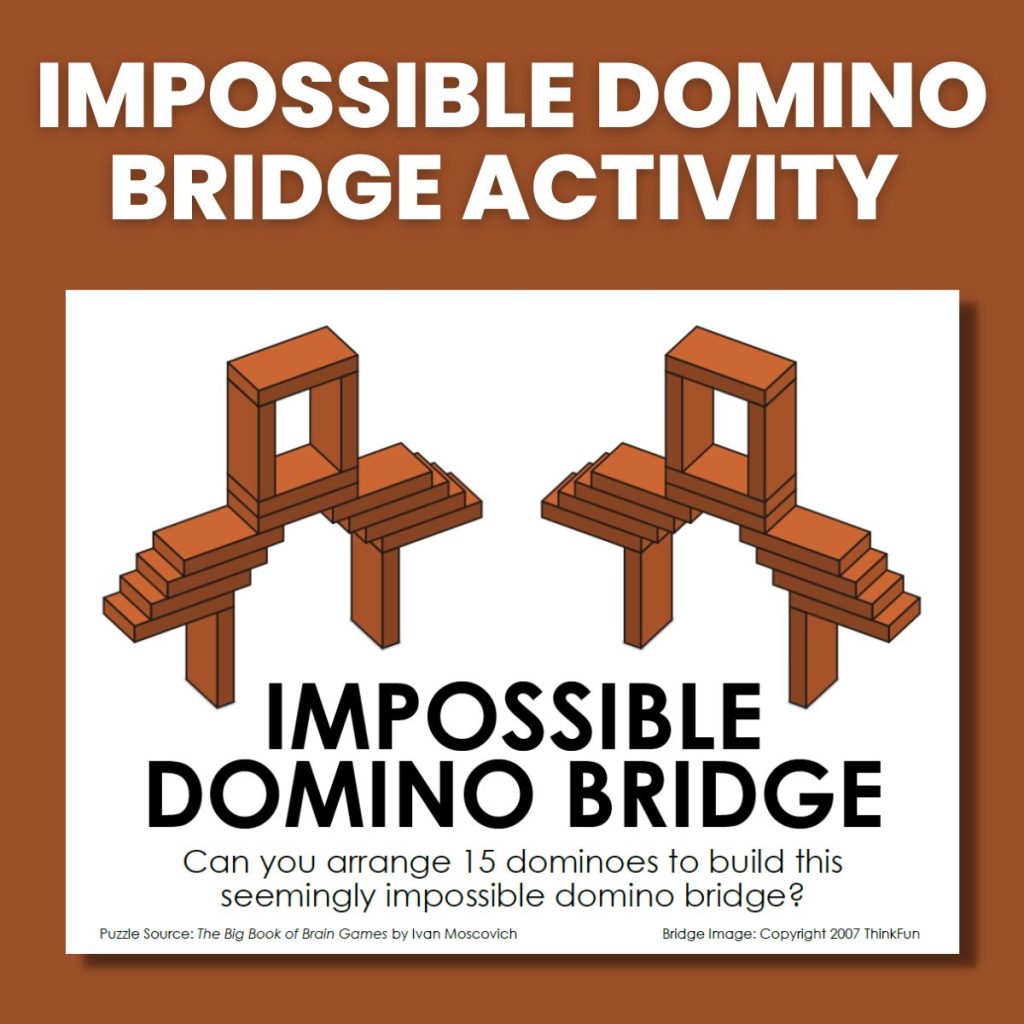
If you have some wooden dominoes laying around, you have all you need for this Impossible Domino Bridge building activity.
Spoiler alert: it’s not actually impossible. But it might seem that way to students.
This is a great way to teach perseverance in problem solving during the first week of school.
Impossible Domino Tower
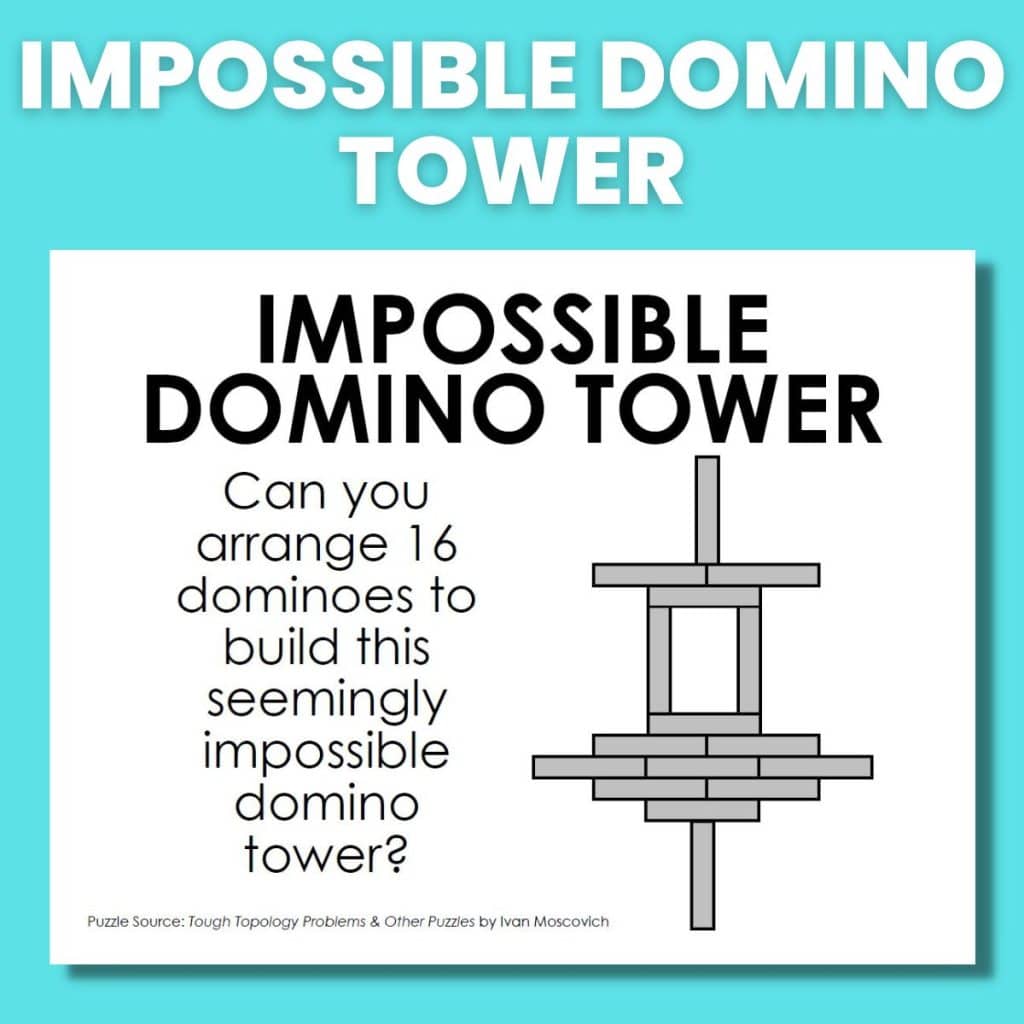
Then, you can use those same dominoes to have your students tackle the impossible domino tower challenge.
Mathematical Tasks for the First Week of School
Twos to Nines Challenges
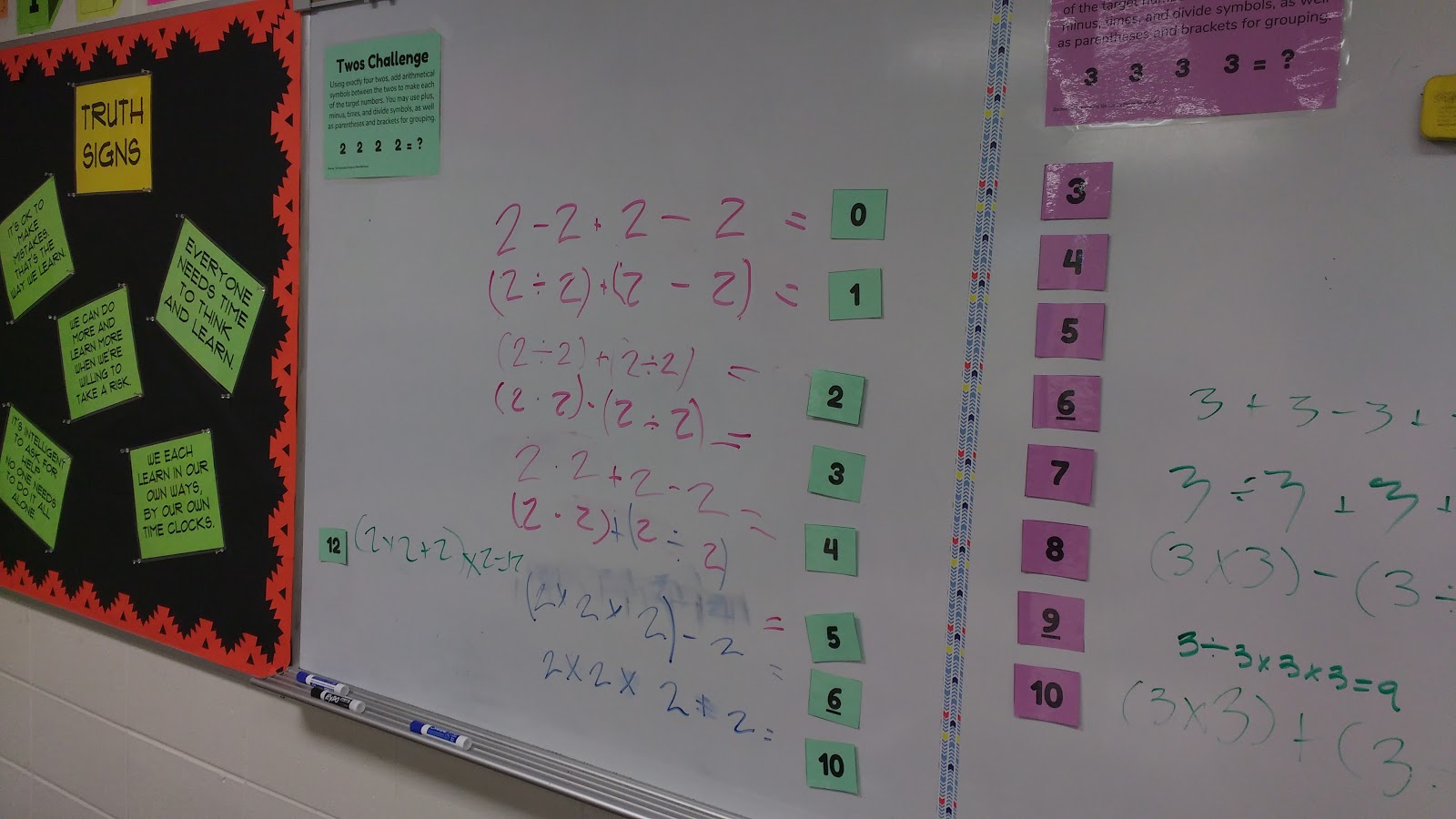
One of my favorite first day activities ever would have to be the Twos to Nines Challenges. Students work in small groups to create the given numbers using exactly four of a given number. I set up different challenges for each number around the room.
On top of being fun, this is a great way of getting students thinking about math, doing mental math, and reviewing the order of operations. This is a nice extension of the usual Four Fours task.
Prefer printable paper based versions of these same challenges? I have slowly been turning them into printable activities that are perfect for sliding inside a dry erase pocket!
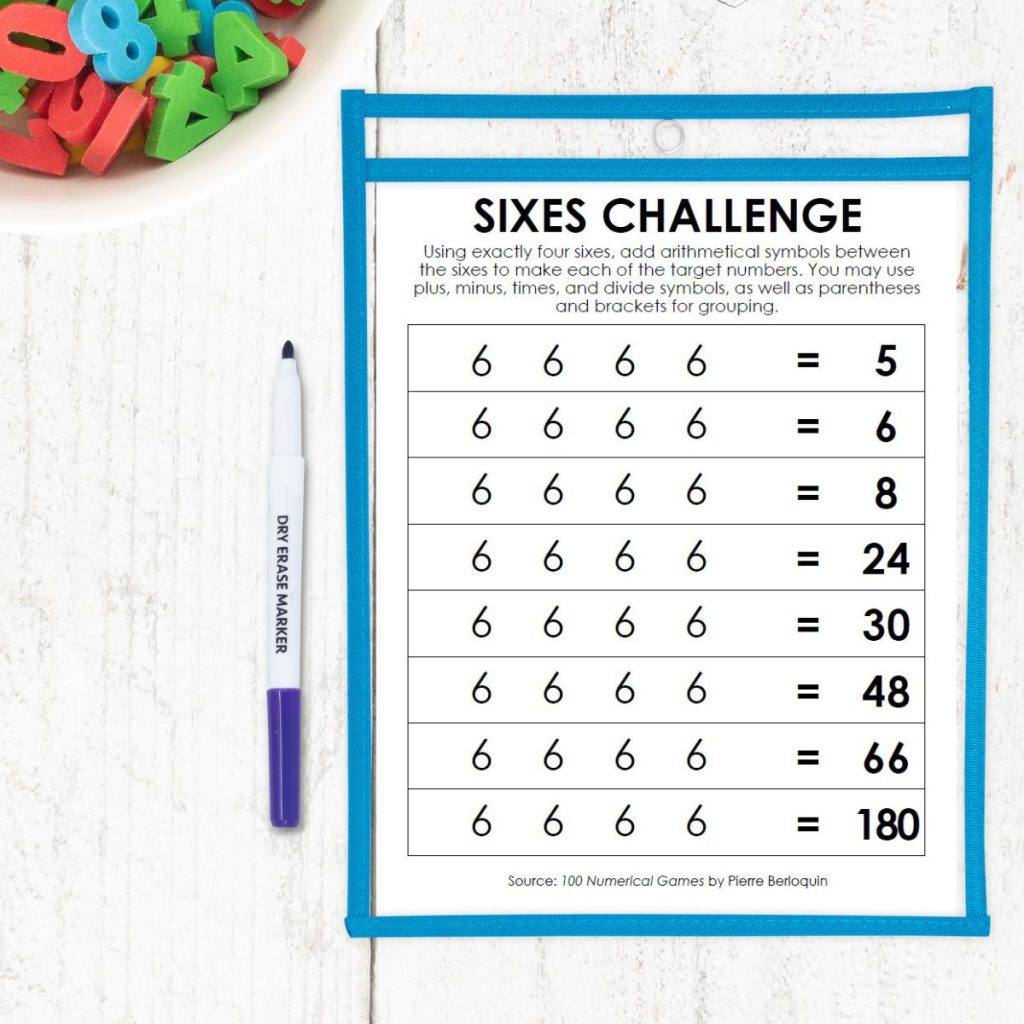
Five Easy Pieces
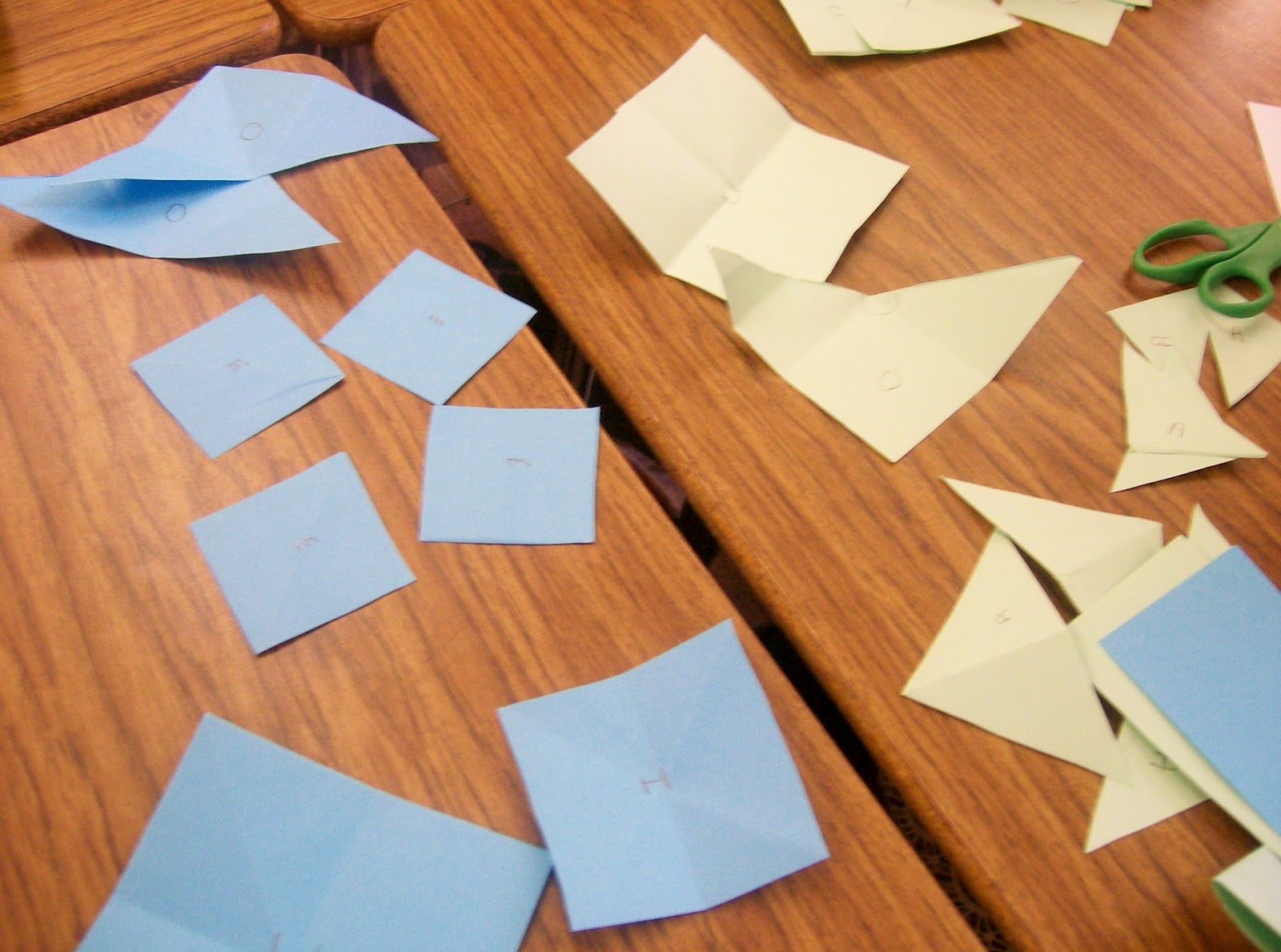
Five Easy Pieces combines paper folding, algebra, and logic puzzles into one great activity that is a perfect review activity for the beginning of the school year. Students have to follow a set of instructions to create a set of paper pieces that are then used to answer a series of math problems.
A Mathematical Magic Trick

I used this mathematical magic trick with students during my first year of teaching. The magic trick starts with students thinking of a number from 1 to 10, and it ends with almost every student thinking of the exact same animal in the exact same country eating the exact same food.
Is it magic? Or is it math?
Digit Cells

Digit Cells is an interesting math puzzle that asks students to write a 10 digit number so that the digit in the first cell tells how many zeros are in the entire 10 digit number. The digit in the cell marked “1” tells how many “1’s” are in the number, and so on.
Students always think this puzzle must be impossible at first, so it’s always a joy to watch their faces when they finally solve it.
Twelve Envelopes Puzzle
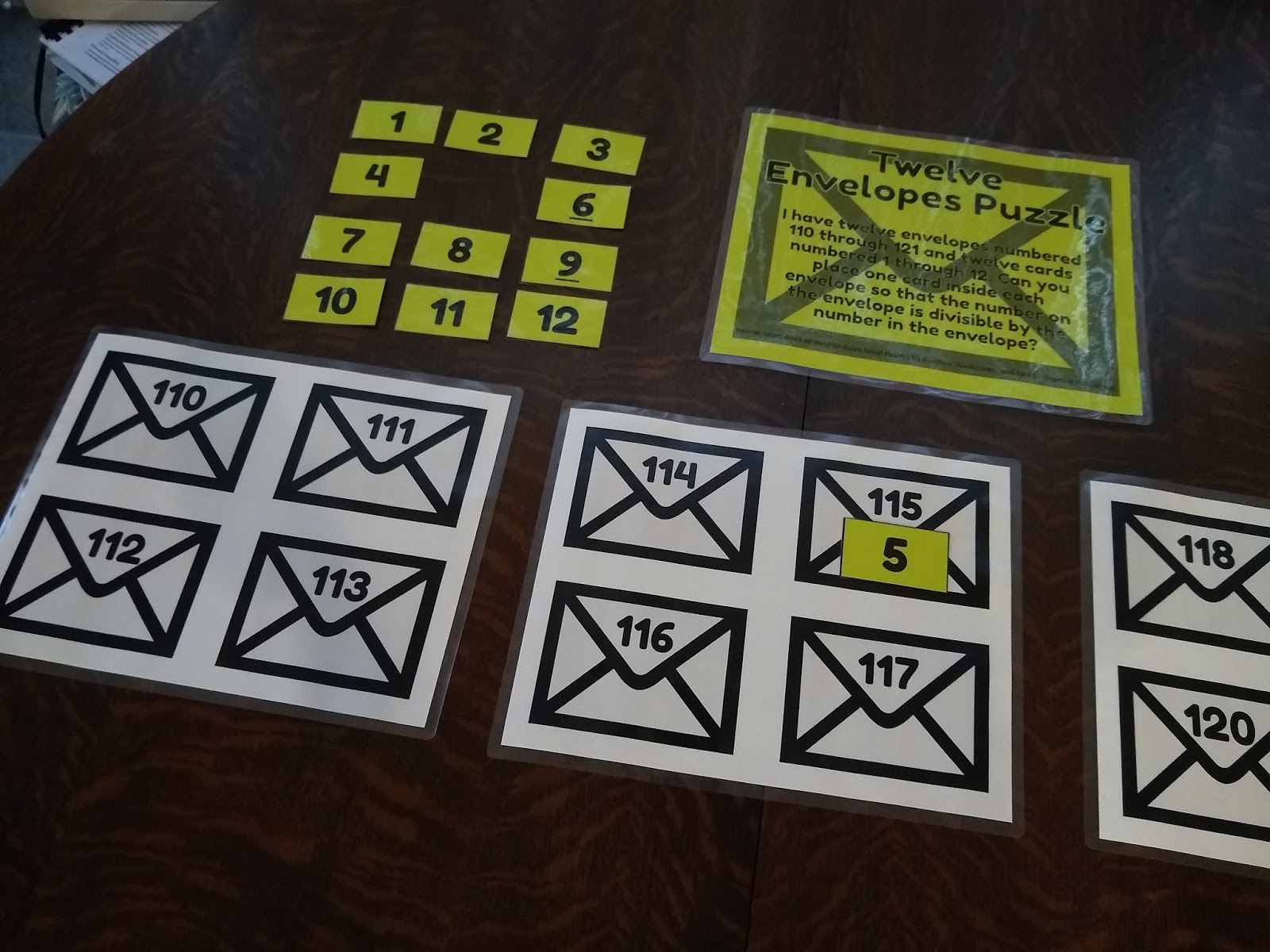
I have used the twelve envelopes puzzle with students during the first week before. It’s a fun math puzzle that provides a great review of divisibility rules!
Divisibility Puzzle
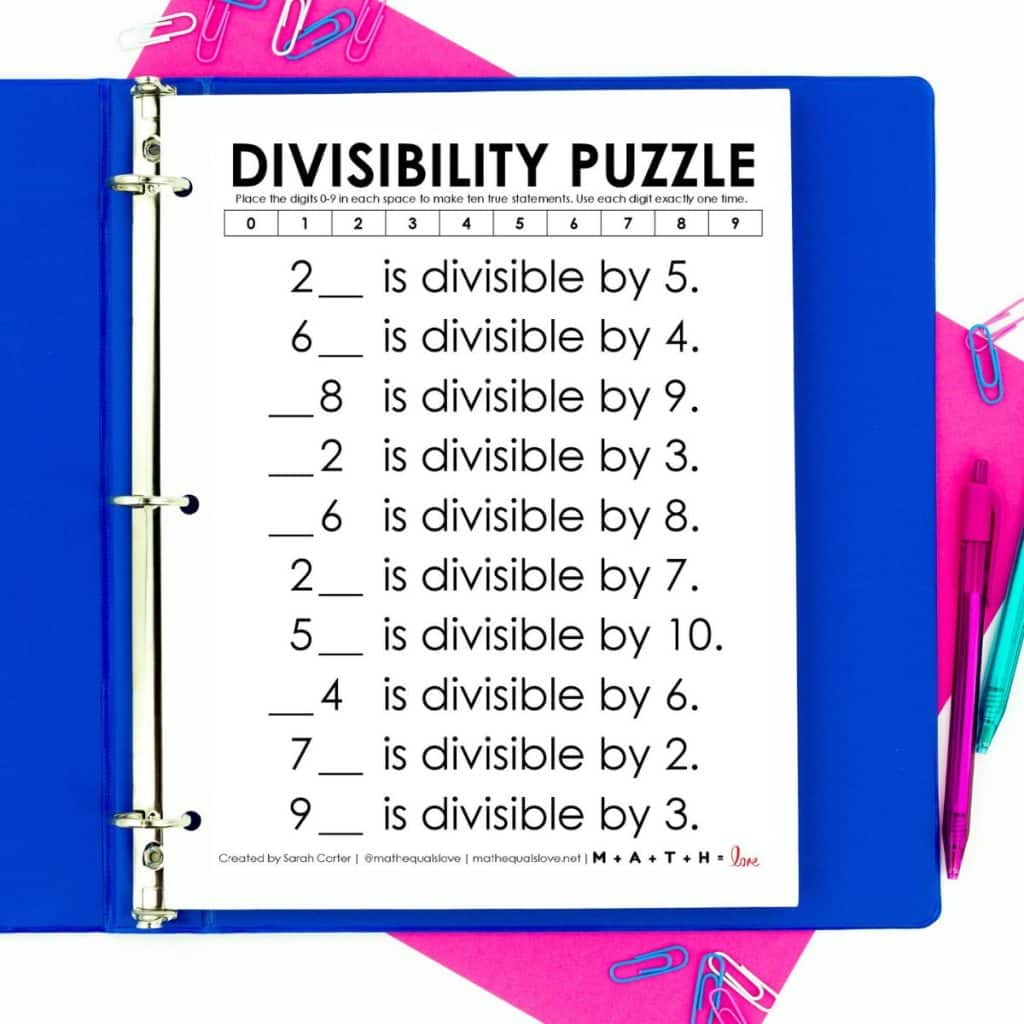
Another quick puzzle to review divisibility rules is this fun divisibility puzzle which involves placing the digits 0-9 in the blanks to create 10 true statements about divisibility rules.
More Math Challenges
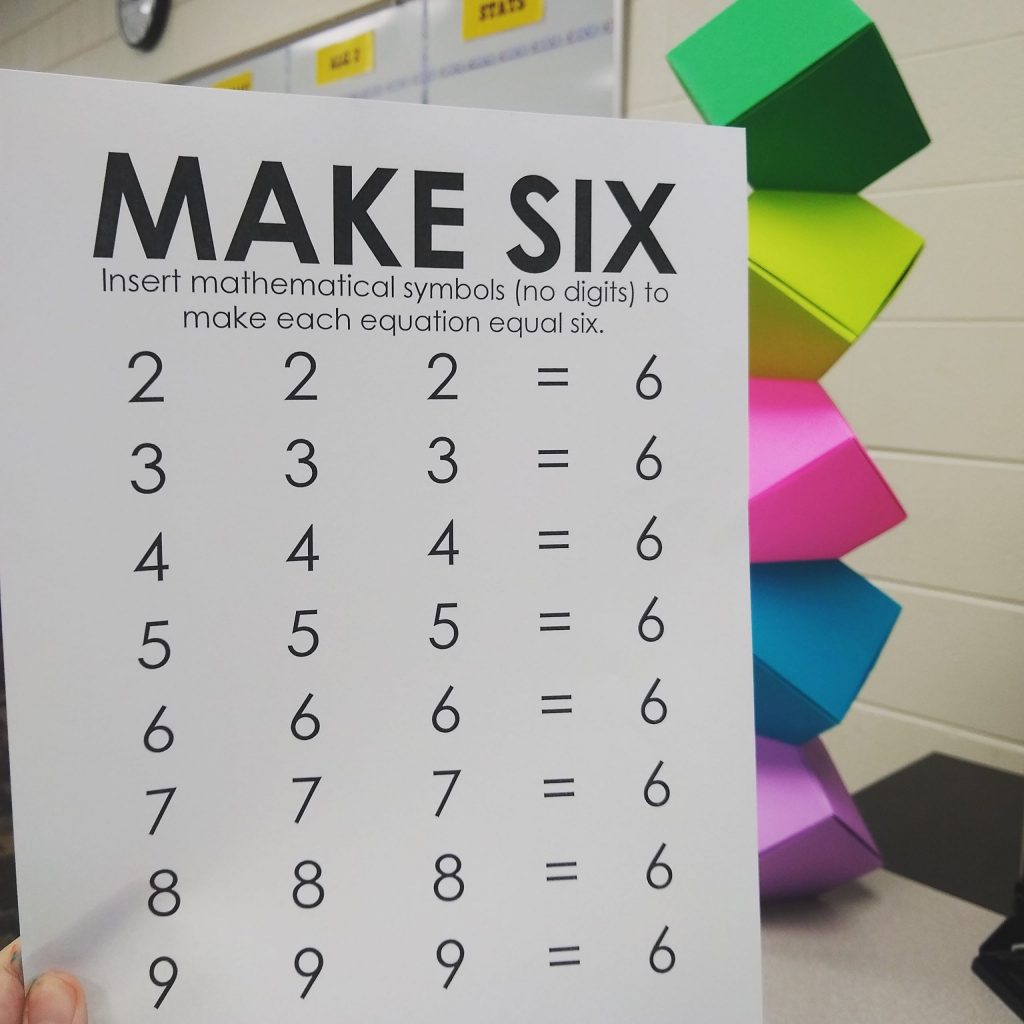
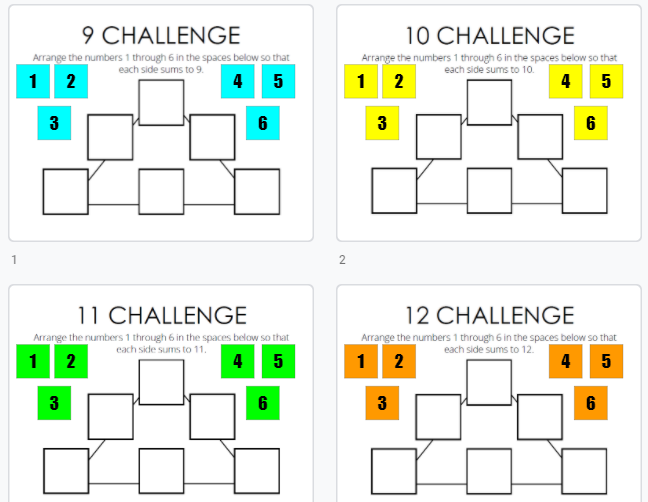

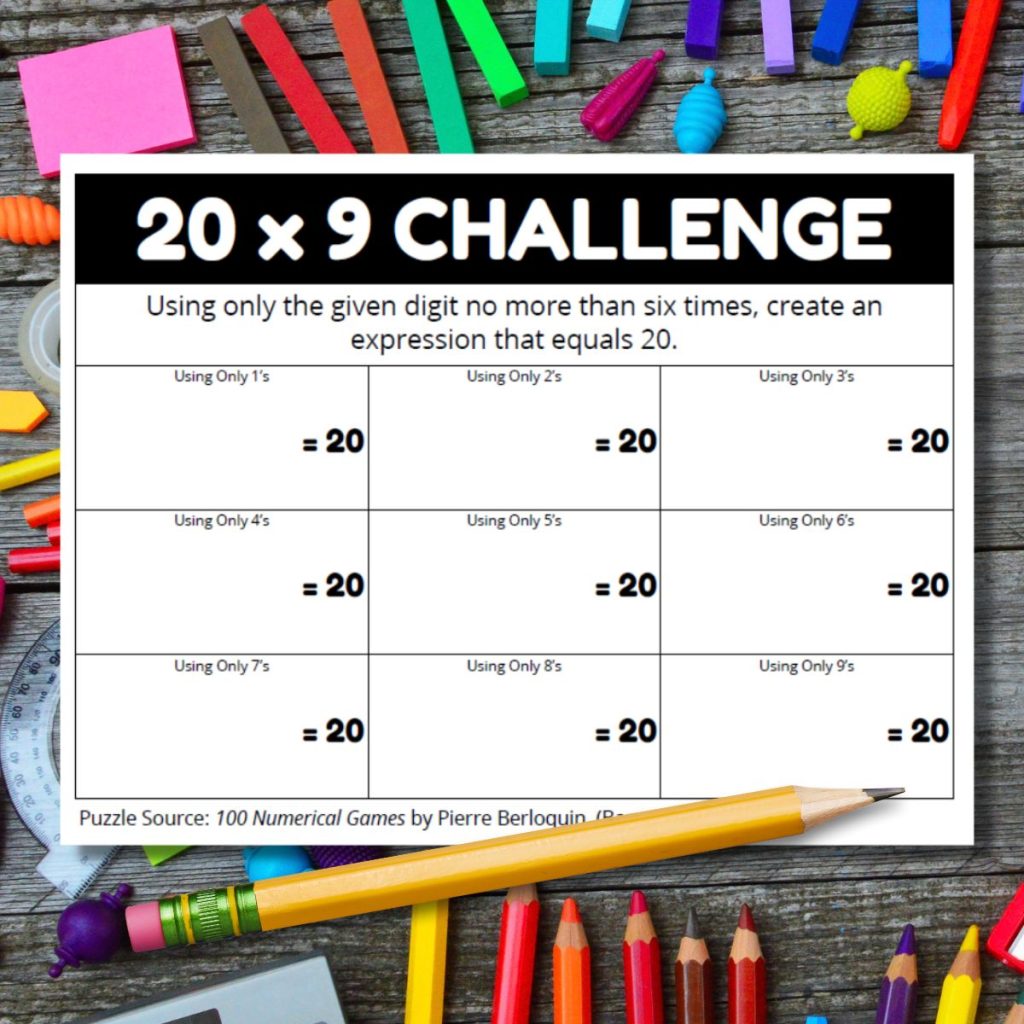
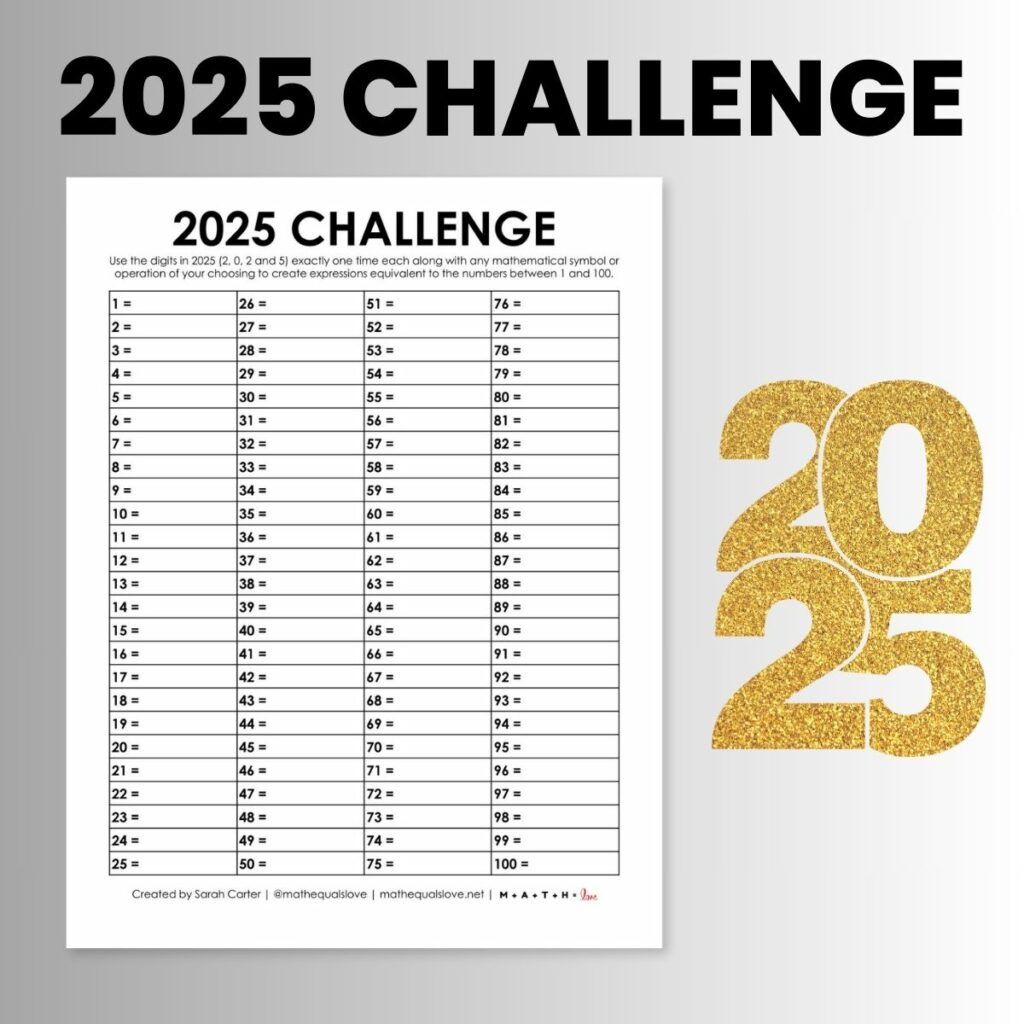
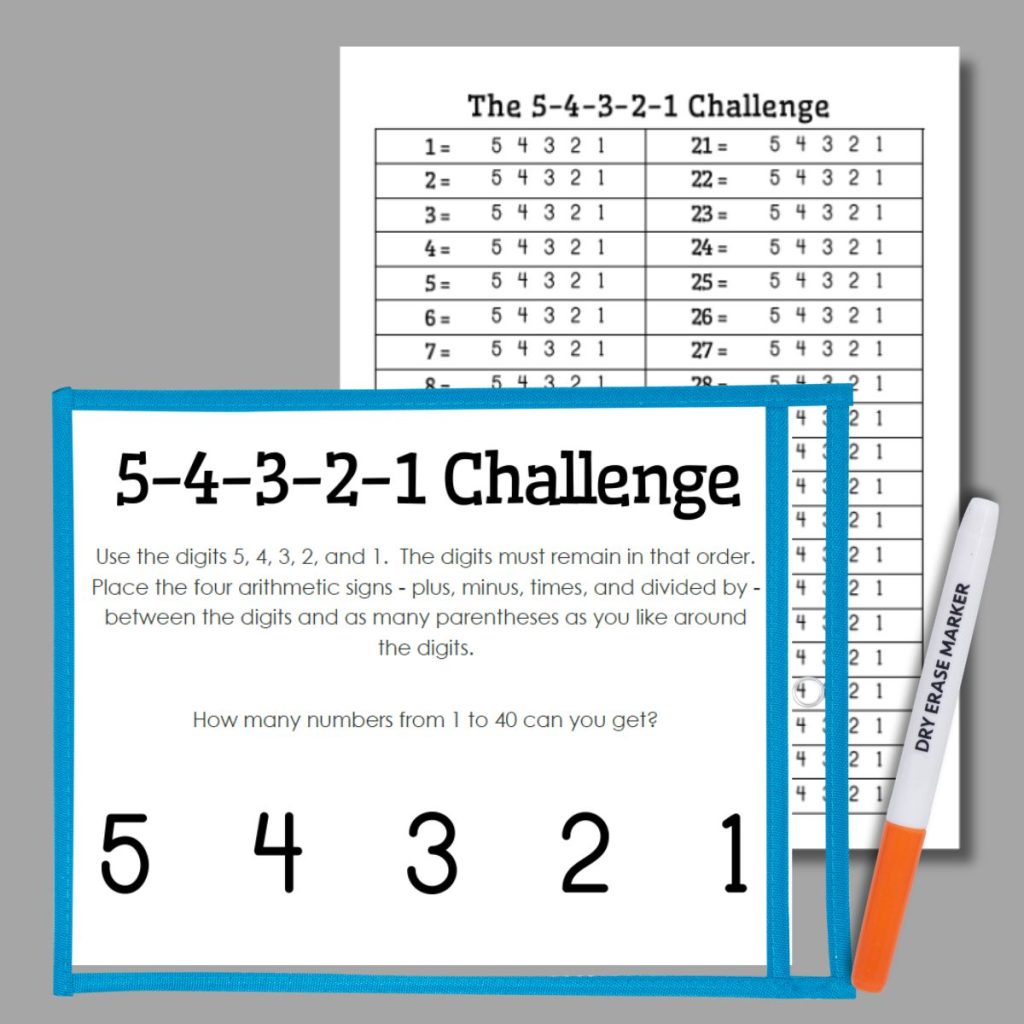
Puzzle Solutions
Puzzle solutions are available on a password-protected solution page. I do not openly post the puzzle answer keys because one of my goals as a resource creator is to craft learning experiences for students that are non-google-able. I want teachers to be able to use these puzzles in their classrooms without the solutions being found easily on the Internet.
Please email me at sarah@mathequalslove.net for the password to the answer key database featuring all of my printable puzzles and math worksheets. I frequently have students emailing me for the answer key, so please specify in your email what school you teach at and what subjects you teach. If you do not provide these details, I will not be able to send you the password.
Not a teacher? Go ahead and send me an email as well. Just let me know what you are using the puzzles for. I am continually in awe of how many people are using these puzzles with scouting groups, with senior adults battling dementia, or as fun activities in their workplace. Just give me enough details so I know you are not a student looking for answers to the puzzle that was assigned as their homework!

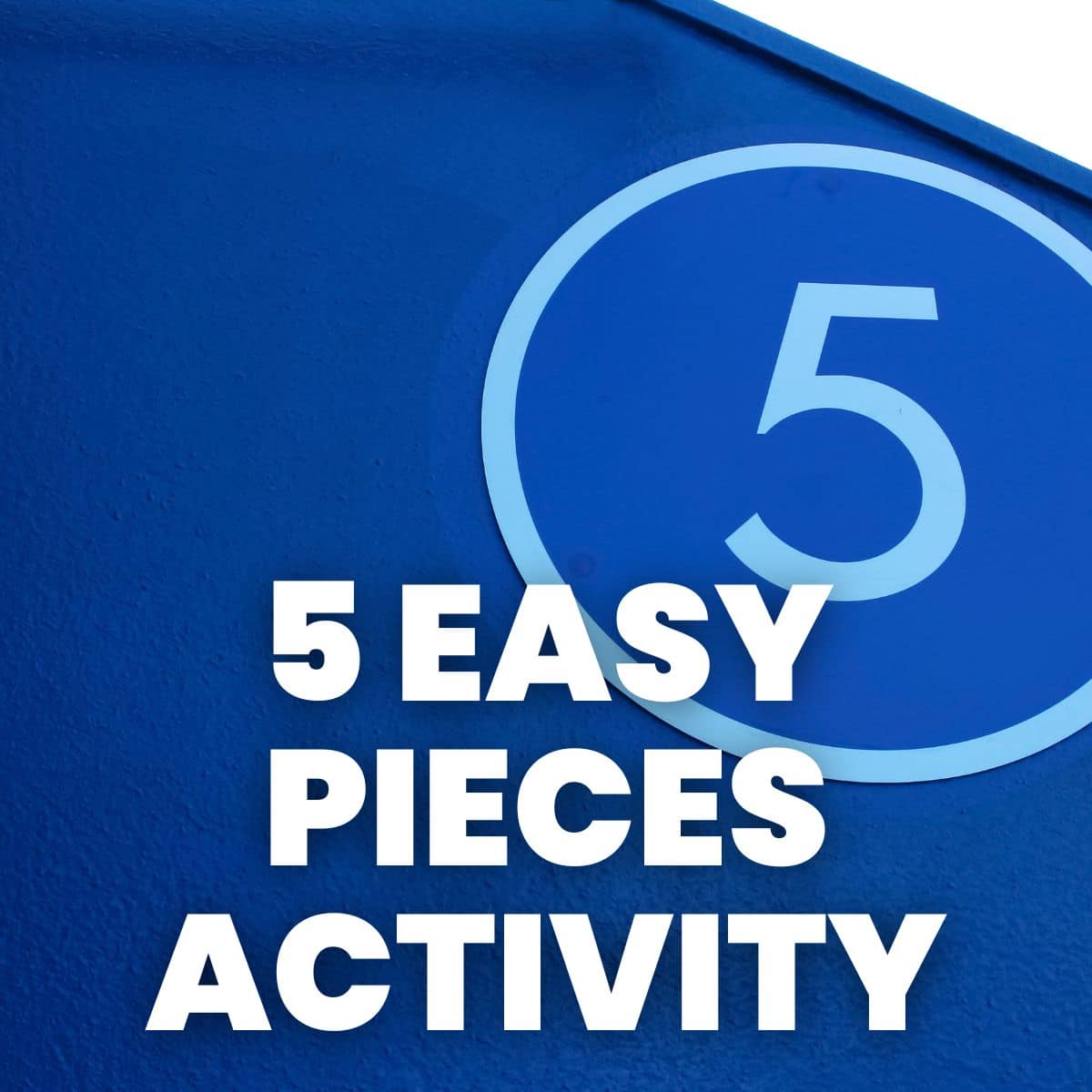
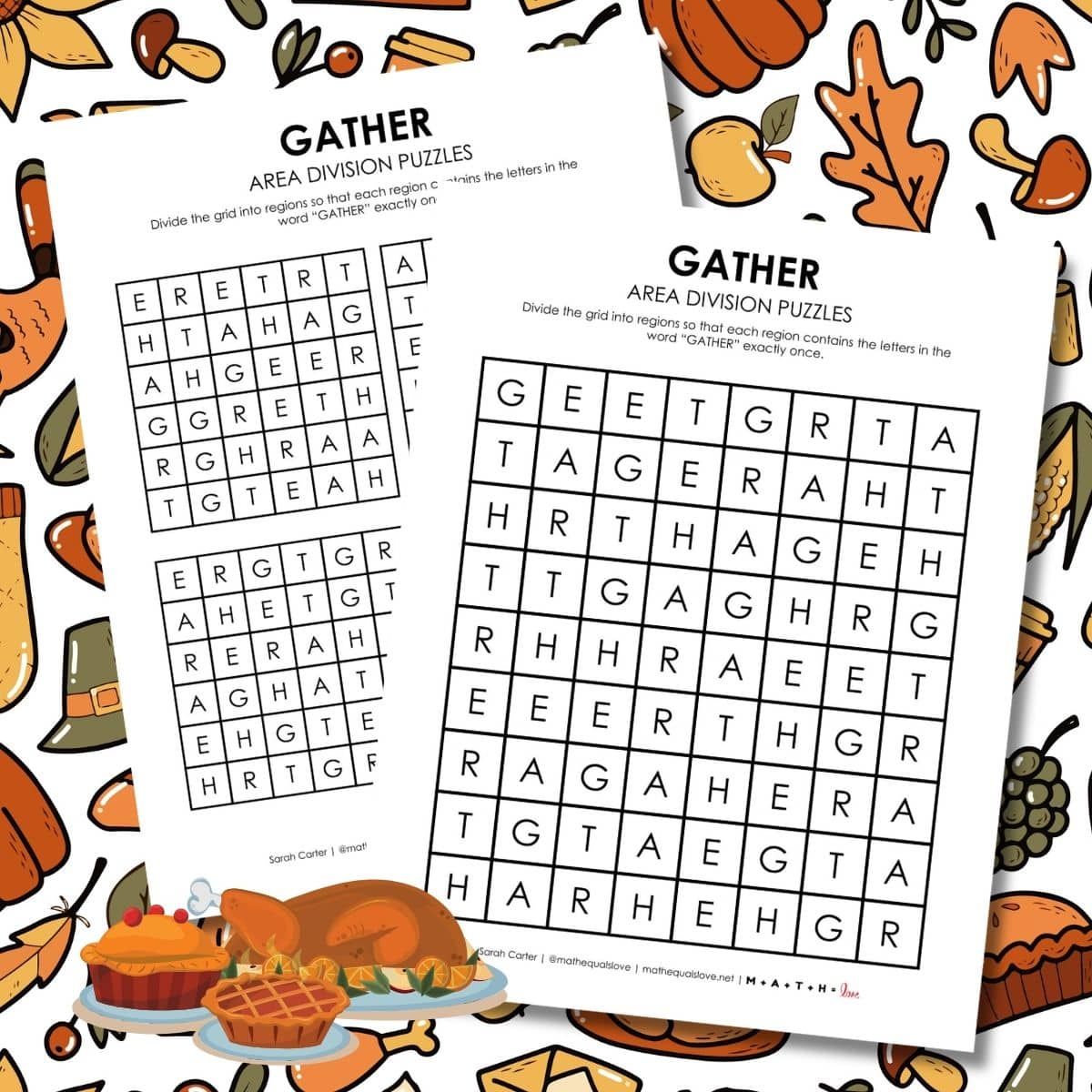
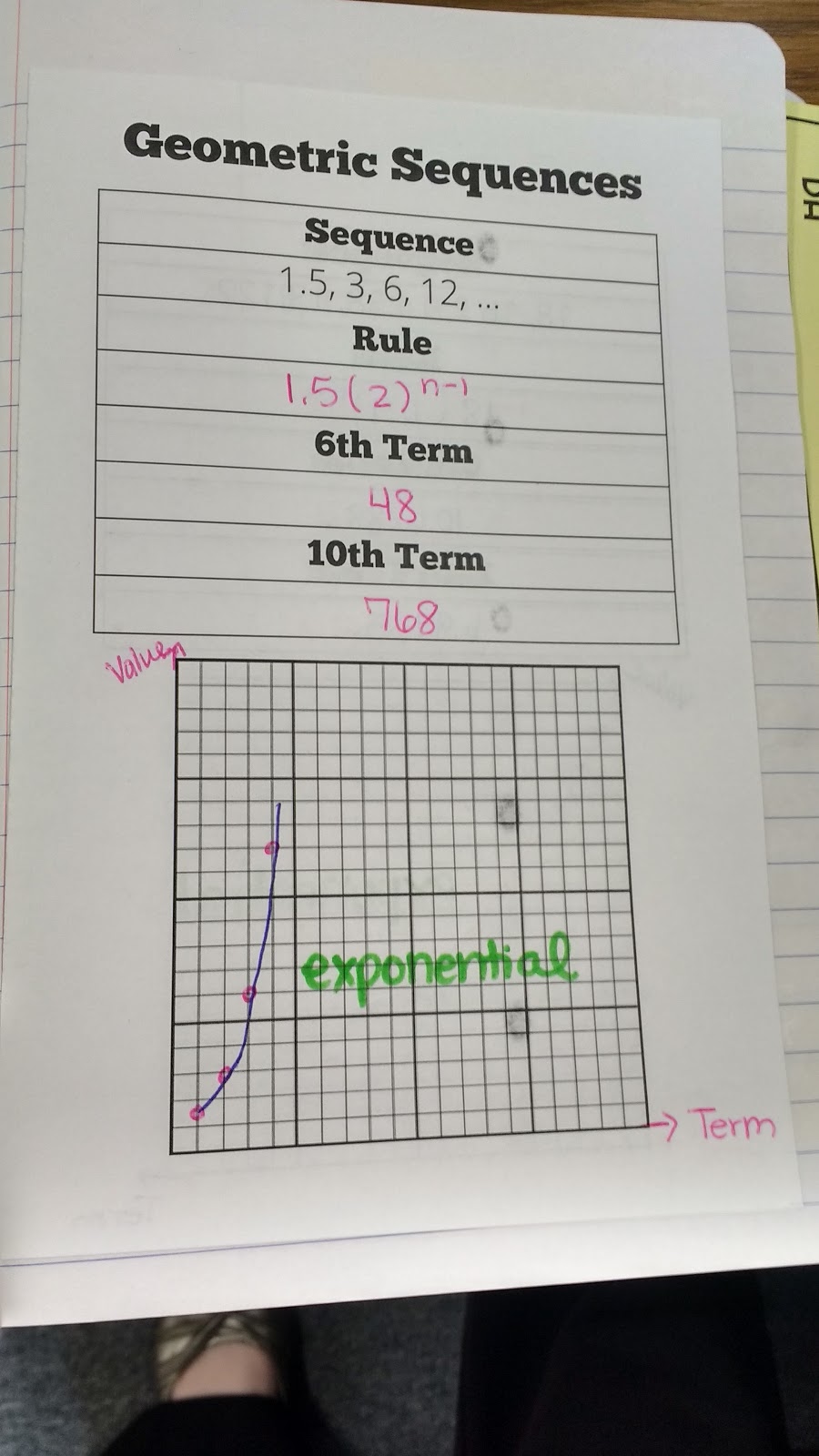
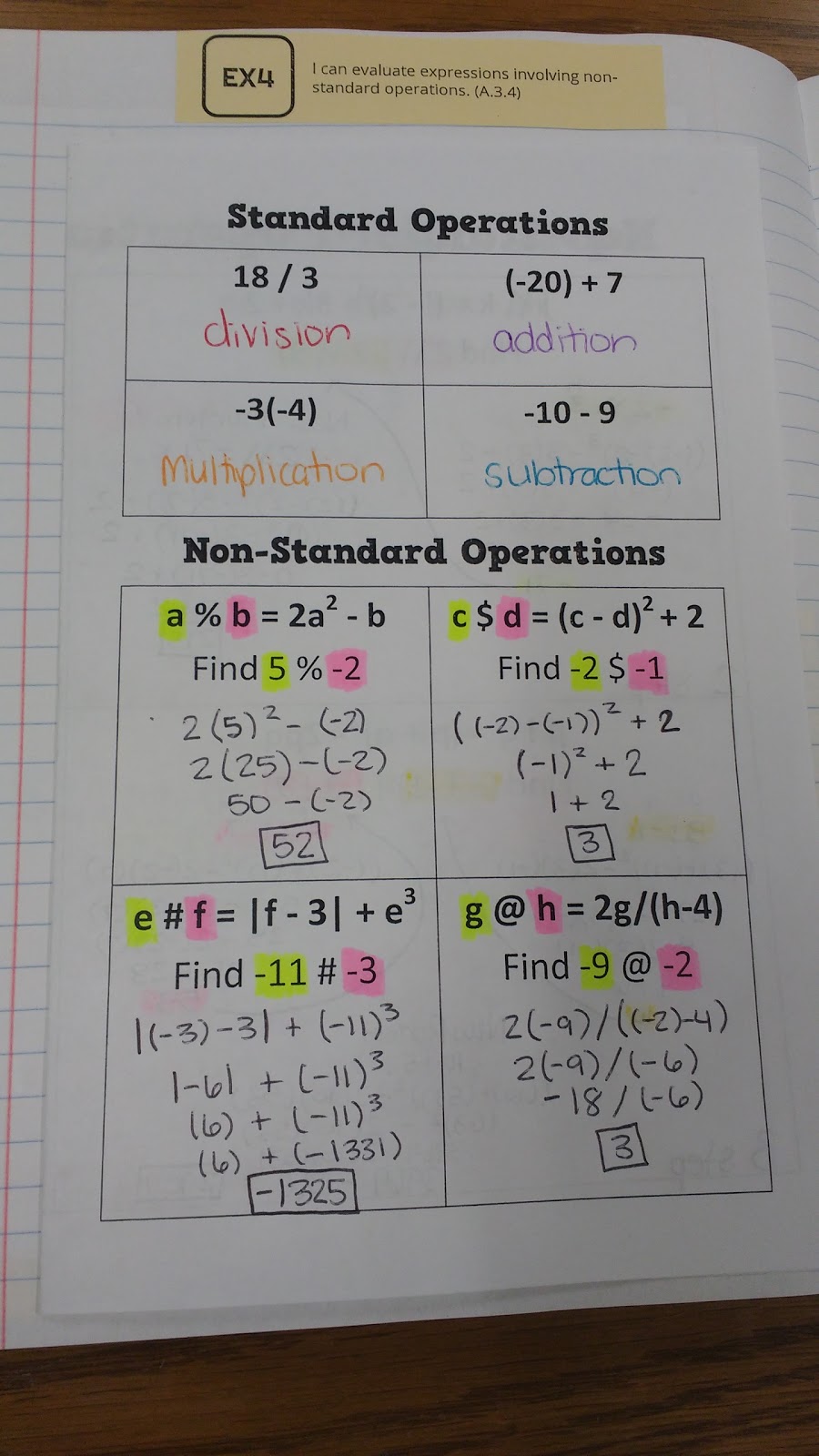
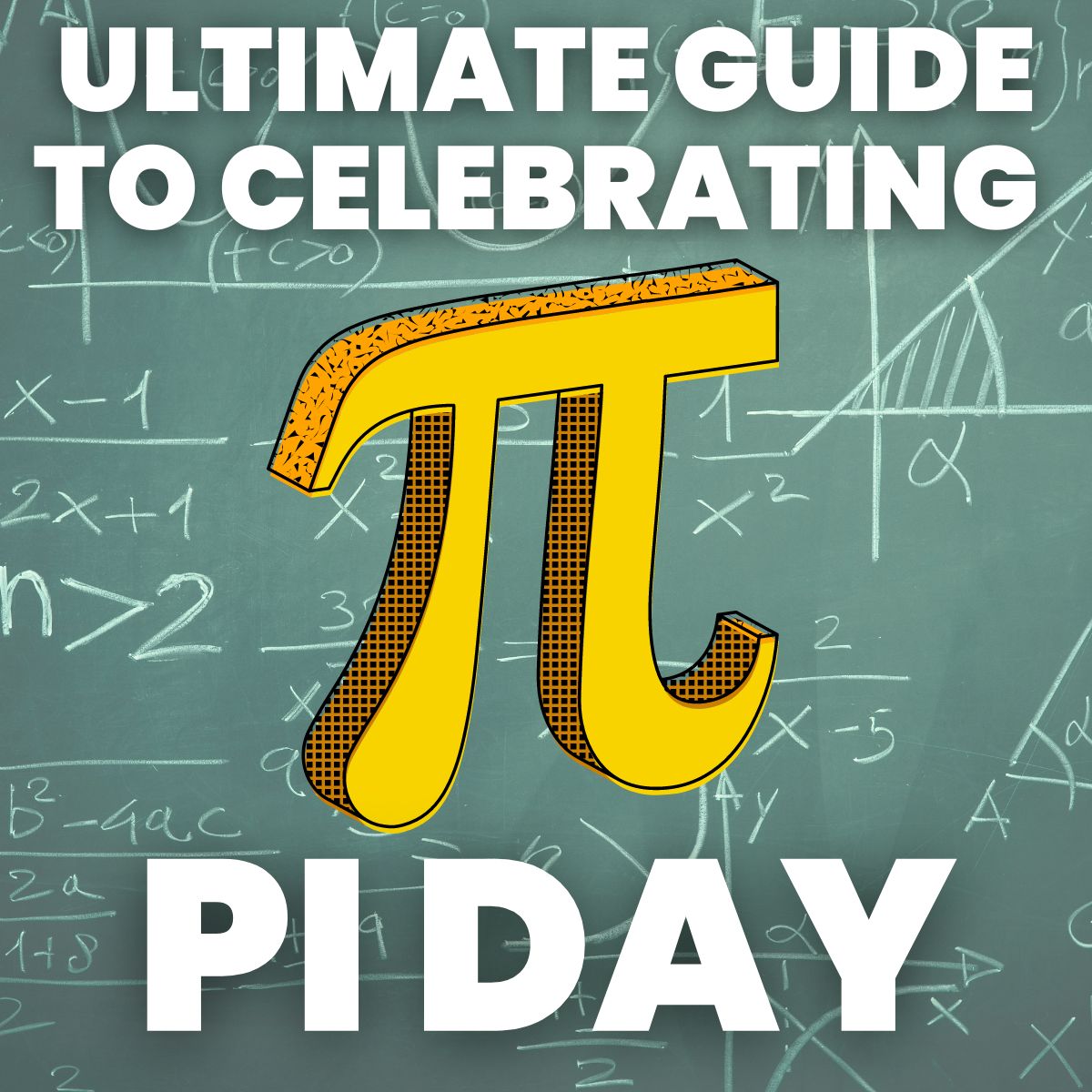
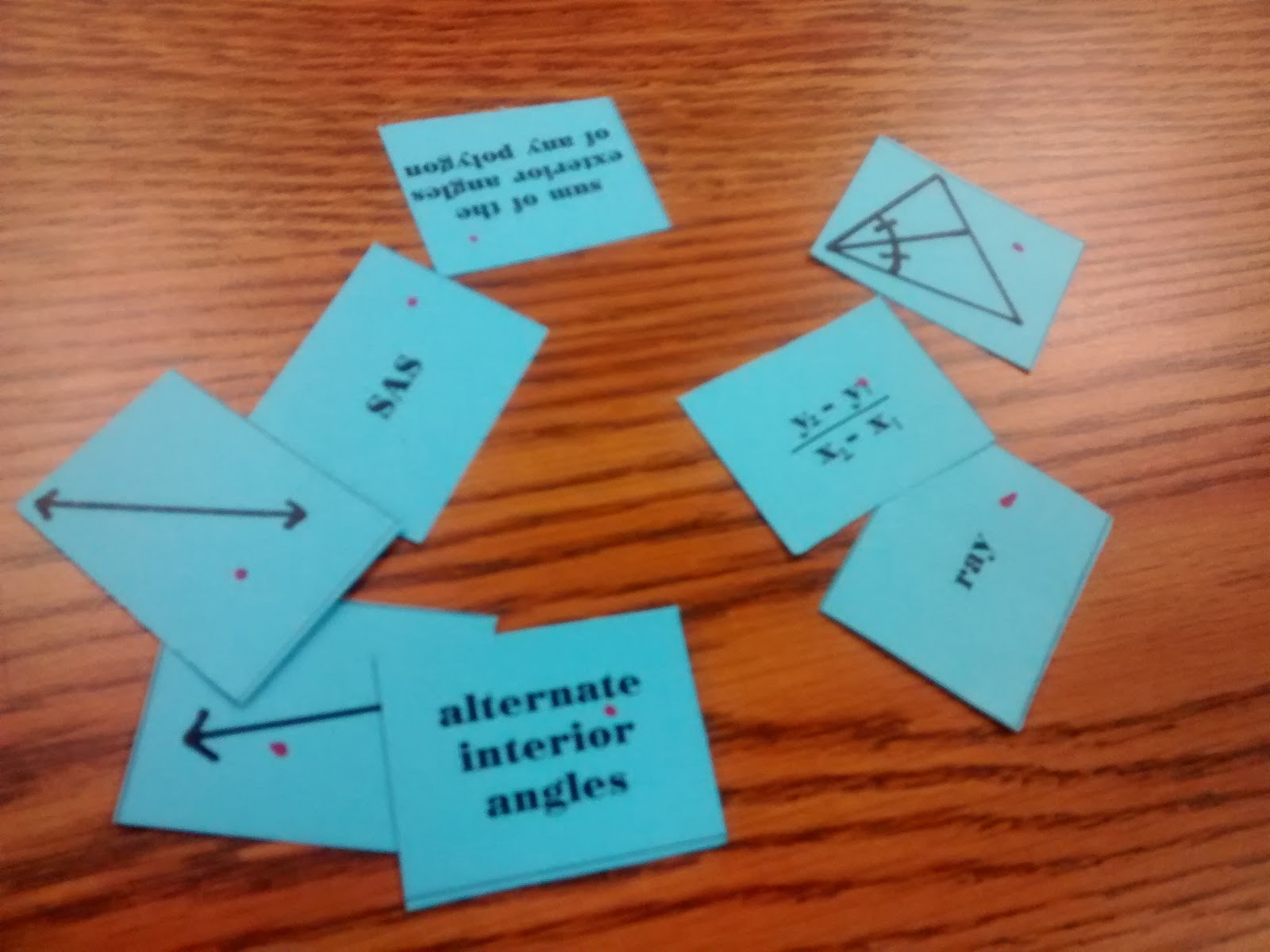
Holy cow, Sarah! That's enough for an entire career – not just one year! No wonder you were exhausted by the end of the year. So many of these are so cool – I'm trying to figure out what I can modify to use in German. 🙂 Thinking about a simplified Lonesome Llama after students learn prepositions of location…
Love the idea for using Lonesome Llama with prepositions!!!
I havent even read the article but based on the title I know it will be great! Happy school year!
Thanks!
This is awesome! Thanks for your time and effort in putting it together.
You're welcome!
I have used concept maps as a way to get to know my students better. I model making one with "Ms. Weinand" in the center and then I start putting things about me with more details on some of them to model creating a concept map. Then I ask the students to create one about themselves. I stipulate that they have to tell me at least 10 things about themselves. This has been very successful. I have also used a 4 corners activity with strongly agree, agree, disagree, and strongly disagree. I put up different statements and then the students stand in the corner that is their opinion. Some statements are informative for me such as "I like to work in groups" some are more silly such as "I like chocolate" or "I like to watch football" All of the questions give me more insight into the student but this activity has been harder to do with 30 plus students with limited moving space.
Great ideas!
Wow! These are all such great activities! Thank you for sharing!
You're welcome!
That was exhausting to read! I need to find way to plan when to use each of these! Thank you!
Glad you made it through 🙂
I love the idea of the "Build It" game, and I have the cubes. Is there anyway to get a copy of the cards you use? I really don't think I would have use for the entire book.
Send me an email! mathequalslove(at)gmail(dot)com
Thank you for all that you do!
You're welcome!
Aaaahh! Build In Between. I spent an hour trying to solve that one. Is there an error?
There's an error in the original book. 🙁 If you remove one of the cards, it will work. Sorry about that!
You are awesome as always! Thanks for all of this work. 🙂
Thanks Nat!
You are a gift to the universe! Holy heaven, thank you!!
You're welcome!
I am really excited to use the "Survival in the Desert" activity to kick-off the first week of school in my social studies class. On your reflection sheet, you have the students discuss whose rankings were closest to those of the Air Force- is there another document that provides the rankings of the Air Force? I did not see it. Thank you!!!
Yes!!! Is there a Air Force Ranking sheet?!?!? I love this activity and can't wait to see how students work collaboratively on it! Thank you!!!
This PPT contains the rankings: https://www.google.com/url?sa=t&rct=j&q=&esrc=s&source=web&cd=5&cad=rja&uact=8&ved=0ahUKEwjrpfn5qZvWAhUT-J8KHUX6C0oQFgg9MAQ&url=http%3A%2F%2Fwww.profemilyblock.com%2Fuploads%2F3%2F2%2F0%2F2%2F32024349%2Fdecision_making_teams_master.ppt&usg=AFQjCNGvCRX04QT5cRnUH4dZ_H8-xgy5pw
Thanks for sharing! Great resources to support team and relationship building. Enjoy the start of the school year!
You are very welcome!
Can't wait to use your worsheets. my students will be so excited.
As a math teacher, your blog is life changing!! So good!!
Marvellous.
I cannot wait to try many of these activities with my students!
These are some fantastic resources! Thank you for taking the time to share. You make a difference!!!!
Thank you for sharing such great information. can you help me in finding out more detail on nursery school in pune
Sarah, you are a amazing. Thanks for sharing so many ideas! I wanted to do the activity build it and just ordered some snap it cubes. I was wondering if you could email me a copy of the cards you use.
Bkapala@blaineschools.org I would really appreciate it 🙂